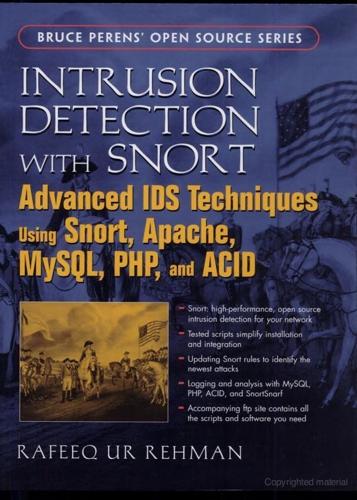
Intrusion Detection With Snort, Apache, Mysql, Php, and Acid
by
Rafeeq Ur Rehman
Published 7 May 2003
Note that you should compile Snort with --with-smbalerts option in the configure script if you want to use this option. Without this option in the configure script, SAMBA services can't be used with Snort. 2.9 Running Snort in Stealth Mode Sometimes you may want to run Snort in stealth mode. In stealth mode, other hosts are not able to detect the presence of the Snort machine. In other words, the Snort machine is not visible to intruders or other people. There are multiple ways to run Snort in stealth mode. One of these methods is to run Snort on a network interface where no IP address is assigned. Running Snort on a network interface without an IP address is feasible in the following two cases: A stand-alone Snort sensor with only one network adapter.
…
Running Snort on a network interface without an IP address is feasible in the following two cases: A stand-alone Snort sensor with only one network adapter. A Snort sensor with two network adapters: one to access the sensor from an isolated network and the other one connected to the public network and running in stealth mode. This arrangement is shown in Figure 2-3 where network interface eth1 is connected to a private isolated network and eth0 is connected to a public network. Figure 2-3. Running Snort in stealth mode on a system with two network adapters. When you want to access the sensor itself, you go through network interface eth1 which has an IP address configured to it. The management workstation shown in the figure may be used to connect to the sensor either to collect data or to log information to a centralized database.
…
Running Snort on Multiple Network Interfaces Section 2.4. Snort Command Line Options Section 2.5. Step-By-Step Procedure to Compile and Install Snort From Source Code Section 2.6. Location of Snort Files Section 2.7. Snort Modes Section 2.8. Snort Alert Modes Section 2.9. Running Snort in Stealth Mode Section 2.10. References Chapter 3. Working with Snort Rules Section 3.1. TCP/IP Network Layers Section 3.2. The First Bad Rule Section 3.3. CIDR Section 3.4. Structure of a Rule Section 3.5. Rule Headers Section 3.6. Rule Options Section 3.7. The Snort Configuration File Section 3.8.
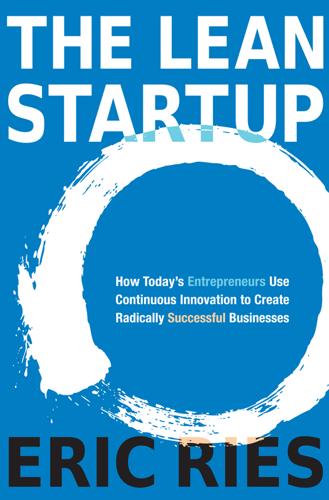
The Lean Startup: How Today’s Entrepreneurs Use Continuous Innovation to Create Radically Successful Businesses
by
Eric Ries
Published 13 Sep 2011
A head start is rarely large enough to matter, and time spent in stealth mode—away from customers—is unlikely to provide a head start. The only way to win is to learn faster than anyone else. Many startups plan to invest in building a great brand, and an MVP can seem like a dangerous branding risk. Similarly, entrepreneurs in existing organizations often are constrained by the fear of damaging the parent company’s established brand. In either of these cases, there is an easy solution: launch the MVP under a different brand name. In addition, a long-term reputation is only at risk when companies engage in vocal launch activities such as PR and building hype.
…
Our earliest investors and advisers thought it was quaint that we had a $300-per-month revenue plan at first. But after several months with our revenue hovering around $500 per month, some began to lose faith, as did some of our advisers, employees, and even spouses. In fact, at one point, some investors were seriously recommending that we pull the product out of the market and return to stealth mode. Fortunately, as we pivoted and experimented, incorporating what we learned into our product development and marketing efforts, our numbers started to improve. But not by much! On the one hand, we were lucky to see a growth pattern that started to look like the famous hockey stick graph. On the other hand, the graph went up only to a few thousand dollars per month.
…
As we’ve seen throughout this book, that is not the root cause of the problem. All innovation begins with vision. It’s what happens next that is critical. As we’ve seen, too many innovation teams engage in success theater, selectively finding data that support their vision rather than exposing the elements of the vision to true experiments, or, even worse, staying in stealth mode to create a data-free zone for unlimited “experimentation” that is devoid of customer feedback or external accountability of any kind. Anytime a team attempts to demonstrate cause and effect by placing highlights on a graph of gross metrics, it is engaging in pseudoscience. How do we know that the proposed cause and effect is true?
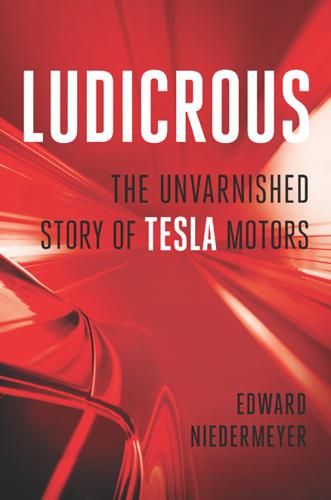
Ludicrous: The Unvarnished Story of Tesla Motors
by
Edward Niedermeyer
Published 14 Sep 2019
Between deriding the stifling effects of bureaucracy and celebrating the valley’s “rich people and nerds,” Graham argued, “a place that tolerates oddness in the search for the new is exactly what you want in a startup hub, because economically that’s what startups are. Most good startup ideas seem a little crazy; if they were obviously good ideas, someone would have done them already.” As it so happened, this was precisely the figure Tesla cut when it broke out of “stealth mode” in 2006. Even by Silicon Valley standards, a startup that made cars seemed a bit crazy, but then nobody knew what might happen when nerds got into the auto business. The Roadster was obviously fast, it looked good, it was an environmental statement, and celebrities loved it.
…
Even when the car failed to work properly, as it did when an early version of Tesla’s new digital motor controller limited the vehicle to ten miles per hour during a demonstration for Musk’s friends and Google’s founders Sergey Brin and Larry Page, the money came in anyway. With its funds replenished, Tesla broke out of stealth mode and began to collect customer deposits to demonstrate that its rapidly growing R&D operation could support an actual business. That first launch event was held at an airplane hangar in Santa Monica, with a guest list made up of media and celebrities including Arnold Schwarzenegger, Ed Begley Jr., and Michael Eisner.
…
Eberhard, meanwhile, wanted to throw himself into the company’s next project: a cheaper electric sedan code-named Whitestar, which would increase Tesla’s sales volume and make investments in sales and service more palatable. Eberhard had started hinting at Whitestar almost as soon as Tesla had come out of stealth mode in 2006, but he said little more than it would be the more affordable sedan referenced in Musk’s master plan and was scheduled for 2008. By September, Eberhard revealed in a presentation to CARB that Tesla had completed technical specifications, a feasibility study, and “preliminary vehicle architecture,” and that the company was looking for a factory site to start production in 2009.
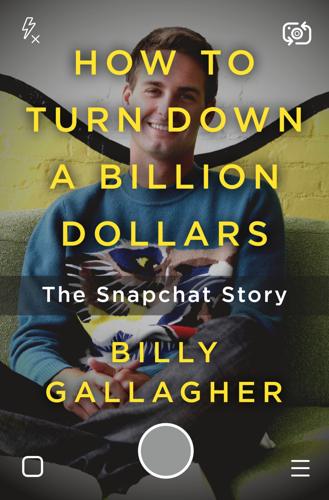
How to Turn Down a Billion Dollars: The Snapchat Story
by
Billy Gallagher
Published 13 Feb 2018
All told, close to sixty people and institutions invested a sum of $30 million in Clinkle before the company even told the world what they were doing. The company had at this point been in “stealth mode,” a sexy term meaning they weren’t telling anyone what they were working on. Stanford has been intertwined with Silicon Valley for more than a century. In 1909, a Stanford graduate founded one of the earliest big Silicon Valley startups, Federal Telegraph. David Starr Jordan, Stanford’s first president, was an angel investor. But Clinkle made students, faculty, and alumni uneasy. Should the university president be advising a company that is recruiting students to drop out of school?
…
Miami (Michael Salzhauer) Samsung Sandberg, Sheryl Sanders, Bernie Saturday Night Live Sawyer, Diane Scan (QR code app) Schiffer, Eric Schmidt, Eric Sculley, John Secret (app) Sehn, Tim selfies Academy Awards (2014) selfie with Ellen DeGeneres first photographic self-portrait history of Sequoia Capital sexting Shark Tank (television program) Shonduras (Shaun McBride) Shontell, Alyson Sierra Ventures Silicon Valley (television sitcom) Slingshot (Facebook app) Smith, Daniel Smith, Kevin Snapchat Android app Arsenic Bitstrips purchased by brand advertising Brown lawsuit captions celebrities and Snapchat stars content management system (CMS) Council (employee gatherings) demographics of users Discover DJ Khaled and and Electric Daisy Carnival (Las Vegas) email leaks founding date of funding and investment geofilters Ghostface Chillah logo Good Luck America (election show) hacking and security Instant Articles IPO (initial public offering) Lenses Literally Can’t Even (original programming) Live Stories media coverage of Memories monetization original programming origins of Our Story Picaboo publishing and journalism Rio Summer Olympics (2016) coverage S-1 (SEC filing) Safety Center Scan purchased by Snap Channel Snap Lab Snapcash Snapcode “Snappy New Year” promotion Spectacles Stories Vergence Labs purchased by workforce and human resources Social Network, The (film) Sony Entertainment Sorrell, Martin SpaceX Spiegel, Evan Brown lawsuit and childhood education Forbes’s “30 Under 30” issue Future Freshman girlfriend at Stanford (Lily) interest in journalism internship at Red Bull and Kappa Sigma Market Street headquarters parents of proposal to Miranda Kerr at $SNAP IPO Snapchat’s origins at Stanford Stanford Women in Business conference keynote address worldview and corporate culture of Snapchat See also Snapchat Spielberg, Sasha Spotify Square Square Cash Stanford University commencement (2012) Donner (dorm) founding of Kappa Sigma Sigma Nu Silicon Valley and Startup Hau5 (Picaboo headquarters) stealth mode Stith, Mackenzie Stone, Josh Streep, Meryl Sun Microsystems Swift, Taylor Swisher, Kara Systrom, Kevin Taco Bell Tam, Donna Taneja, Hemant TechCrunch (tech blog) Disrupt conference Tencent Teo, Jon Tesla ThankYouX (Ryan Wilson) That White Bitch (blog) therealdrmiami.
…
In the summer of 2013, Clinkle’s public relations staff reached out to over a dozen publications, from The New York Times to TechCrunch,3 asking them to cover “the largest seed round in Silicon Valley history.” While Lucas was happy to wax poetic about how Clinkle was going to change the world and how much money he had raised, he refused to talk at all about the product or technology behind Clinkle. Now, Lucas was attempting to keep the product and technology in stealth mode, while announcing the company to the world. It was a bizarre strategy. Like most young founders in Silicon Valley, including Evan, Lucas looked up to Steve Jobs as his idol. He wanted to create a company like Apple, polished and ready to dazzle consumers. Lucas never wanted to talk to users or customers—he felt he should decide what was best for users and deliver them an amazing, innovative product that was a massive improvement over their current wallets.
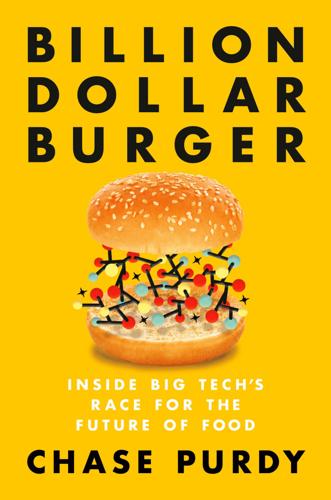
Billion Dollar Burger: Inside Big Tech's Race for the Future of Food
by
Chase Purdy
Published 15 Jun 2020
“I researched every single thing I could get my hands on,” he told me one sunny afternoon at his company’s headquarters in Berkeley. “I just got more and more convinced, the pieces are all here and we just need to put them together.” From the beginning, he said that gaining consumer trust has been at the top of his mind. He said Memphis Meats couldn’t operate in stealth mode because it was essential that the public conversation around cell-cultured meat happen publicly. The start-up has hosted tastings and has invited journalists to try its meats. And Valeti aims to release his product under its own branding—as opposed to licensing its technology out to a larger existing meat company brand—in order to be closer to the consumer experience, and to allow consumers to be as close as possible to the development experience.
…
Those conversations ultimately led to hiring Eitan Fischer, whose initial job was to figure out whether it would be feasible for JUST to create and fund a laboratory dedicated to this work. Fischer came back to report in the affirmative, and subsequently took on a leading role in establishing JUST’s cell-cultured meat laboratory, which initially operated in stealth mode at the company. Only nine people at JUST knew. Tetrick decided to keep it secret because it felt like such an unknown for the company. There was, of course, the chance that within six months the project would be a failure. But if it succeeded, he wanted it to feel like a structured department within the company before it was announced to the entire staff.
…
Whether that means growing leather from cells, funding start-ups that create non-animal-based gelatin, or pumping money into a cell-cultured meat start-up, Feria knows that interest from investors will be crucial if these start-ups ever want a shot at challenging the multibillion-dollar status quo. “My level of contribution to these companies comes from three areas: capital when they need it to grow, access to our networks and contacts, and really just trying to figure out areas of consecutiveness between other companies,” she says, noting that she typically invests when start-ups are in their earliest stages. “We prevent these companies from going under way before they show their potential.”

Your Face Belongs to Us: A Secretive Startup's Quest to End Privacy as We Know It
by
Kashmir Hill
Published 19 Sep 2023
The hunters, in turn, were not told why Ton-That wanted the faces. The whole process was thrilling for Ton-That. He was café-surfing for office space and recruiting lost boys as temp workers, but for the first time during his decade-long slog in the tech startup world, he had finally created an app with real promise and a strong wind in its sails. He had also become a naturalized American citizen. Like many early-stage startup founders, he was in stealth mode, but his need for quiet didn’t stem only from his fear of competitors. There was a state law with stiff financial penalties that could put him out of business before his company was up and running.
…
After I revealed that I’d spoken with officers who had used the tool and that I would be writing a story with or without the cooperation of the company, he agreed to go on the record to sing the company’s praises. He said that the company had not been responding to my requests because it was in “stealth mode” and because one of the founders had some “Gawker history” which he wasn’t keen to have unearthed. He told me that law enforcement loved Clearview but that the company ultimately aimed to offer the face recognition app to everyone. I expressed my trepidation about the likelihood that that would bring an end to the possibility of anonymity.
…
He joked with the Clearview team that they needed to make a version of the software that came in the form of glasses, so that he could identify people he was supposed to know and not embarrass himself. He didn’t invest in the company, but he told them he would buy those glasses if they ever made them. Ton-That and Schwartz asked people using the app to keep it quiet because the company was in stealth mode, but not everyone complied. Ashton Kutcher spilled the beans when he appeared on a widely watched YouTube series called Hot Ones, in which famous guests are interviewed while eating spicy chicken wings. The host asked Kutcher whether in the future “privacy will be the new celebrity.” In other words, would it eventually be harder to be an unknown than a known-by-all?

Live Work Work Work Die: A Journey Into the Savage Heart of Silicon Valley
by
Corey Pein
Published 23 Apr 2018
It was in a predevelopment phase, and very much in stealth mode. When I asked what it did, this mystery app, Lawrence demurred. “Man,” he said, “whatever happened to trade secrets?” I cajoled. “Come on, tell me,” I said. “I won’t tell anyone. Who would I tell?” “Okay, man. I’ll tell you,” he said, leaning in conspiratorially. “It’s a game. You know Angry Birds?” “Yeah,” I said. “I know Angry Birds.” “It’s like Angry Birds, except there are no birds, and nobody’s angry.” Lawrence was my startup hero. Here was a man who had devised the perfect startup pitch. Angry Birds had been downloaded, supposedly, three billion times, which implied that either one out of every two living humans was a player, or that most players deleted the game from their devices in frustration and then reinstalled it, over and over again.
…
“I want to wean away from Lyft,” she told me. “I’m just making someone else rich. I know I could be putting that time into my own company.” In Hollywood, everybody has an unfinished script. In the Bay Area, everybody has a “pre–Series A” tech company running in “stealth mode” (meaning they have an idea without any money behind it that’s ostensibly secret but in fact hungry for publicity). “What’s your startup?” I asked. She hesitated. Then she asked if I was religious or easily offended. “Not really,” I said. As the car rolled slowly through the Tenderloin—under freeways, past bustling homeless camps and twilight trash fires—Simone told me all about her company.
…
What should I do if I feel burnt out? How many years have you “wasted” on failed startups? My startup failed. $9k in debt and need to pay most of it in 12 days. I Used My Credit Cards to Fund My Failed Startup and Now They’re Suing Startup life: Working hard to enrich other people? Have you had trouble getting a job after a failed startup? Just what exactly is “real-world experience” and how do I get it? Joining the military? About to be homeless, any ideas…? How do you fight depression? Why keep living? Could we crowdfund a therapist who is available to depressed hackers? Here was the story of the 95 percent of entrepreneurs who failed.

Longshot
by
David Heath
Published 18 Jan 2022
In their revisionist history, Moderna not only tosses Rossi’s contributions to the side, but they also don’t acknowledge the work of Karikó and Weissman. In Moderna’s telling, Noubar Afeyan and CEO Stéphane Bancel crafted the concept for the company and solved the problems associated with mRNA. In one account, these obstacles were overcome during Moderna’s first two years of “stealth mode”—a common dark period for startups. In a TED Talk in December 2013, Bancel gave his narrative of how the company began. So a few of us couple years ago, sitting in Cambridge, Massachusetts, thought about the following crazy idea: What if mRNA could be a drug? And the reason people have not developed mRNA drugs in the past, because from what I explained to you it’s pretty obvious, mRNA drugs, why not?
…
A piece on NPR began, “If doctors are ever going to use adult stem cells for medical treatments, they’ll need to get a lot better at turning back the cellular clock and tricking regular old cells into becoming the multipurpose variety of their youth… Lead researcher Derrick Rossi told the Washington Post scientists now have a way to make ‘patient-specific cells highly efficiently and safely and also taking those cells to clinically useful cell types.’”7 Even though LS18 was in stealth mode—operating in secret until it could distance itself from competitors—the company came out of the shadows to bask in the media attention. The press release even used Rossi’s idea for a name. “ModeRNA Therapeutics, a new startup out of Cambridge, MA-based Flagship VentureLabs, announced it has developed a method for producing human induced pluripotent stem cells, which are embryonic-like stem cells that are formed by reprogramming adult stem cells,” said one article.
…
Scott Hensley, “Researchers Take Another Step toward Stem Cells without Embryos,” NPR, October 1, 2010, https://www.npr.org/sections/health-shots/2010/10/01/130262558/researchers-take-another-step-toward-stem-cells-without-embryos. 8. Erin Kutz, “ModeRNA, Stealth Startup Backed by Flagship, Unveils New Way to Make Stem Cells,” Xconomy, October 4, 2010, https://xconomy.com/boston/2010/10/04/moderna-stealth-startup-backed-by-flagship-unveils-new-way-to-make-stem-cells. 9. Erin Kutz, “ModeRNA, Stealth Startup.” 10. Alice Park, “People Who Mattered: Derrick Rossi,” Time, http://content.time.com/time/specials/packages/article/0,28804,2036683_2036767_2037437,00.html. 11. “Flagship VentureLabs Company ModeRNA Therapeutics, and co-founder, Derrick Rossi, both Cited by Time Magazine for Significant Advances and Contributions in 2010,” Flagship Ventures, December 9, 2010, https://web.archive.org/web/20120103235926/http://www.flagshipventures.com/about/news/flagship-venturelabs-company-moderna-therapeutics-and-co-founder-derrick-rossi-both-cited. 12.
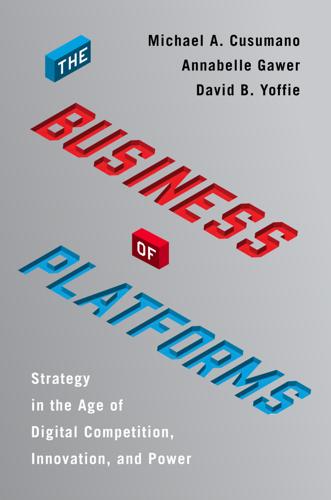
The Business of Platforms: Strategy in the Age of Digital Competition, Innovation, and Power
by
Michael A. Cusumano
,
Annabelle Gawer
and
David B. Yoffie
Published 6 May 2019
New York Times, December 5, 2018. 36.Samantha Zyontz, “Running with (CRISPR) Scissors: Specialized Knowledge and Tool Adoption,” Technological Innovation, Entrepreneurship, and Strategic Management Research Seminar, MIT Sloan School of Management, October 22, 2018. 37.See AddGene, “CRISPR Plasmids and Resources,” https://www.addgene.org/crispr/ (accessed October 19, 2018). 38.See Antonio Regalado, “Start-up Aims to Treat Muscular Dystrophy with CRISPR,” MIT Technology Review, February 27, 2017; and Editas Medicine, “Our Pipeline,” http://www.editasmedicine.com/pipeline (accessed June 14, 2018). 39.Amirah Al Idrus, “Feng Zhang and David Liu’s Base-Editing CRISPR Start-up Officially Launches with $87 Million,” FierceBiotech.com, May 14, 2018. 40.Kashyap Vayas, “New CRISPR-based Platform Could Soon Diagnose Diseases from the Comfort of Your Home,” Science, April 29, 2018; and Megan Molteni, “A New Start-up Wants to Use CRISPR to Diagnose Disease,” Wired, April 26, 2018. 41.“CRISPR Company Cofounded by Jennifer Doudna Comes Out of Stealth Mode,” Genome Web, April 26, 2018, https://www.genomeweb.com/business-news/crispr-company-cofounded-jennifer-doudna-comes-out-stealth-mode#.WxgKnVVKicM (accessed June 6, 2018). 42.David Cyranoski, “CRISPR Alternative Doubted,” Nature, August 11, 2016, 136–37. 43.Labiotech editorial team, “The Most Important Battle in Gene Editing: CRISPR Versus TALEN,” Labiotech, March 13, 2018, https://labiotech.eu/features/crispr-talen-gene-editing/ (accessed October 22, 2018); and Michael Boettcher and Michael T. McManus, “Choosing the Right Tool for the Job: RNAi, TALEN, or CRISPR,” Molecular Cell 58, no. 4 (May 21, 2015): 575–85, https://www.ncbi.nlm.nih.gov/pmc/articles/PMC4441801/ (accessed October 23, 2018). 44.Eric Lander, “The Heroes of CRISPR,” Cell, January 14, 2016. 45.Carl Zimmer, “What Is a Genetically Modified Crop?
…
For workers who perform tasks central to a business, the bigger, successful platforms will need to offer some benefits that are comparable to what regular employees receive. Start-ups can get away with using mostly contractors at first because they are still small and under the radar of regulators and competitors. As the companies grow in size, however, they need to grow up in terms of policies. Once platform companies get beyond the start-up phase, expectations of compliance and fairness, from workers as well as customers and regulators, will change. Platforms that get into the most legal trouble are likely to be those that do not recognize when they pass that threshold between start-up mode and established company. As platforms move from cleaners and taxi drivers to highly paid white-collar contractors, workers in the gig economy will become more highly educated, with greater bargaining power.
…
New York Times, December 5, 2018. 36.Samantha Zyontz, “Running with (CRISPR) Scissors: Specialized Knowledge and Tool Adoption,” Technological Innovation, Entrepreneurship, and Strategic Management Research Seminar, MIT Sloan School of Management, October 22, 2018. 37.See AddGene, “CRISPR Plasmids and Resources,” https://www.addgene.org/crispr/ (accessed October 19, 2018). 38.See Antonio Regalado, “Start-up Aims to Treat Muscular Dystrophy with CRISPR,” MIT Technology Review, February 27, 2017; and Editas Medicine, “Our Pipeline,” http://www.editasmedicine.com/pipeline (accessed June 14, 2018). 39.Amirah Al Idrus, “Feng Zhang and David Liu’s Base-Editing CRISPR Start-up Officially Launches with $87 Million,” FierceBiotech.com, May 14, 2018. 40.Kashyap Vayas, “New CRISPR-based Platform Could Soon Diagnose Diseases from the Comfort of Your Home,” Science, April 29, 2018; and Megan Molteni, “A New Start-up Wants to Use CRISPR to Diagnose Disease,” Wired, April 26, 2018. 41.

Insane Mode: How Elon Musk's Tesla Sparked an Electric Revolution to End the Age of Oil
by
Hamish McKenzie
Published 30 Sep 2017
He waited a couple of beats for applause that didn’t come and then leaned in even closer to the mic. “And we still want to do a great job.” The audience hesitated for a moment before breaking into stilted applause. Faraday Future had no CEO, nor a drivable prototype. It had been incorporated in early 2014 but didn’t come out of stealth mode until July 2015, when it announced itself via press release. The public had been exposed to little more than its website, a handful of news clippings, and some vague marketing hype about a new approach to mobility. Reckhorn played a twenty-second video that showed a 3-D rendering of the factory.
…
It would appear, then, that on top of Leshi’s initial investment in Atieva, which gave it about 20 percent of the company, the financially compromised Jia Yueting was at the very least closely associated with the mysterious new company that had purchased BAIC’s 25 percent share of Atieva in March 2016. Atieva thus became disproportionately reliant on funding from a source that had worryingly complex financial arrangements. The need to find new funding sources may have contributed to the sudden sense of urgency Atieva displayed when it finally came out of stealth mode in June 2016. It revealed to Reuters that it planned to start selling a premium electric sedan in 2018, followed by two luxury crossover utility vehicles in 2020 and 2021. The company was testing its dual-motor electric power train on a Mercedes-Benz Vito van, which could accelerate from zero to sixty miles per hour in 3.1 seconds (and, later, 2.69 seconds)—astonishing for a vehicle of that size.
…
The group calculated that two trucks platooning for a hundred thousand kilometers (about sixty-two thousand miles) would save €6,000 (about US$6,500) a year on fuel compared to driving in normal cruise control. The European convoy is a taste of what’s to come. A start-up called Convoy—backed by Amazon founder Jeff Bezos and other tech luminaries—is attempting to apply Uber’s logistics-on-demand model to trucking, with a focus on short-haul trips. Shipping software start-up Flexport, backed by Google Ventures, wants to be the “Uber of the oceans.” There’s Tesla, of course, with its autonomous electric semitruck, and other electric truck start-ups Nikola, Thor, and Starsky Robotics. A crack team of engineers from Google’s self-driving car team left the company to establish the San Francisco–based Otto, which said in August 2016 that it was moving “with urgency” to get commercially ready autonomous trucks on the road within two years.
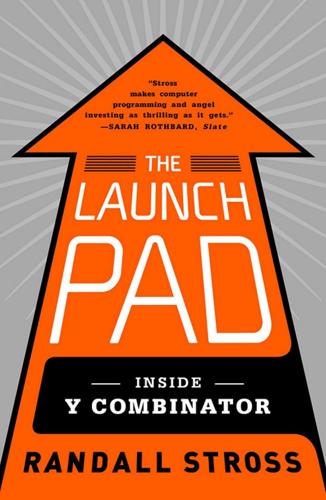
The Launch Pad: Inside Y Combinator, Silicon Valley's Most Exclusive School for Startups
by
Randall Stross
Published 4 Sep 2013
Reid Hoffman, remarks at the Churchill Club’s “Startup Success 2006,” August 17, 2006, http://video.google.com/videoplay?docid=2401538119328376288. Hoffman actually said, “If you’re not embarrassed in consumer Internet by the first version of the product you’ve launched, you’ve launched too late,” but in the retelling by others, the qualifier “in consumer Internet” was dropped. 5. “Clustrix Emerges from Stealth Mode with Industry’s First Clustered Database System for Internet-Scale Applications,” Clustrix press release, May 4, 2010, www.clustrix.com/company/news-events/press-releases/bid/82423/Clustrix-Emerges-From-Stealth-Mode-With-Industry-s-First-Clustered-Database-System-for-Internet-Scale-Applications. 6.
…
When selecting startups to fund, YC’s partners pay more attention to founders than to their ideas. This means some startups in the batch are likely to have overlapping or nearly identical ideas. This summer, no fewer than three startups begin with ideas for travel apps and two have ideas that involve serving up technical challenges to programmers. This is not a matter of great concern to Graham and his partners. They leave it to the startups to sort out. If one startup feels crowded by another, its founders are free to take on a new idea. Interview Street is one of the two startups working on testing hackers.
…
In a startup you can change your idea easily, but changing your cofounders is hard. And the success of a startup is almost always a function of its founders.” PG, “Startups in 13 Sentences,” February 2009, www.paulgraham.com/13sentences.html. 5. PG, “What We Look For in Founders,” October 2010, www.paulgraham.com/founders.html. 6. PG, “What Startups Are Really Like,” October 2009, http://paulgraham.com/really.html. This was based on a talk presented at the 2009 Startup School. PG surveyed YC alumni, asking what surprised them about starting a startup. 7. PG, “Student’s Guide.” 8. PG, “What We Look For.” 9. Jason Shen, “How to Find Awesome Startup Roommates,” Art of Ass-Kicking blog, February 22, 2011, www.jasonshen.com/2011/how-to-find-awesome-startup-roommates/.
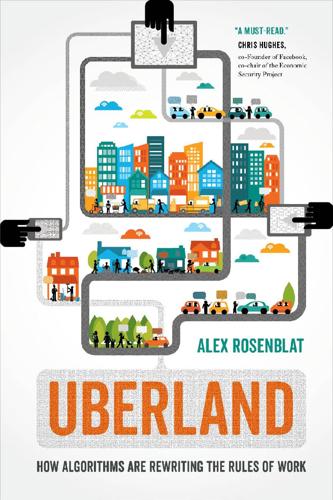
Uberland: How Algorithms Are Rewriting the Rules of Work
by
Alex Rosenblat
Published 22 Oct 2018
Alex Rosenblat, “How Uber’s Alliance with Montréal Drivers Turns Labo[u]r’s Tactics On Its Head,” Uber Screeds, August 4, 2016, https://medium.com/uber-screeds/how-ubers-alliance-with-montr%C3%A9al-drivers-turns-labo-u-r-s-tactics-on-its-head-af490b252dae. 43. Alex Rosenblat, “Is Your Uber/Lyft Driver in Stealth Mode?” Uber Screeds, July 19, 2016, https://medium.com/uber-screeds/is-your-uber-driver-in-hiding-484696894139. 44. Mike Isaac, “Uber’s C.E.O. Plays with Fire,” New York Times, April 23, 2017, www.nytimes.com/2017/04/23/technology/travis-kalanick-pushes-uber-and-himself-to-the-precipice.html; Ali Griswold, “Oversharing: Waymo Hits Uber Where It Hurts, Instacart Talks Cash-Flow, and Airbnb Dorm Rooms,” Quartz, April 25, 2017. 45.
…
Company Hoping to Curb Drunk Driving Problem in Province,” CBC News, September 16, 2016, www.cbc.ca/news/canada/saskatchewan/sask-designated-driving-company-looking-for-support-1.3765611; for the United States, see Scott Koegler, “Free Designated Drivers in 24 Cities in the US,” Exuberation! http://exuberation.com/regions-and-travels-publisher/326-free-designated-drivers-in-24-cities-in-the-us; DrinkingandDriving.org, “Prevention Tools,” www.drinkinganddriving.org/designated-driver-services/. 63. Alex Rosenblat, “Is Your Uber/Lyft Driver in Stealth Mode?” Uber Screeds, July 19, 2016, https://medium.com/uber-screeds/is-your-uber-driver-in-hiding-484696894139. 64. Judgment of December 20, 2017, Asociación Profesional Élite Taxi v. Uber Systems Spain SL, EU:C:2017:981, http://curia.europa.eu/juris/documents.jsf?num=C-434/15. 65. Charlotte Alter, “UN Women Breaks Off Partnership with Uber,” Time, March 23, 2015, http://time.com/3754537/un-women-breaks-off-partnership-with-uber/. 66.
…
Even companies that emerged at about the same time as Uber, like Airbnb, or preceded Uber, like TaskRabbit, are overshadowed by Uber’s prominence as the face of the sharing economy. For discussion of the “Uber for X” phenomenon, see Nathan Heller, “Is the Gig Economy Working?” New Yorker, May 15, 2017, www.newyorker.com/magazine/2017/05/15/is-the-gig-economy-working. 34. Juggernaut, “11 Uber for X Startups That Failed— Are You Making the Same Mistakes?” April 28, 2015, http://nextjuggernaut.com/blog/11-uber-for-x-startups-that-failed-are-you-making-the-same-mistakes/. 35. Aaron Smith, “Gig Work, Online Selling and Home Sharing,” Pew Research Center, November 17, 2016, www.pewinternet.org/2016/11/17/gig-work-online-selling-and-home-sharing/. 36. Sara Ashley O’Brien, “Airbnb’s Valuation Soars to $30 Billion,” CNN Tech, August 8, 2016, http://money.cnn.com/2016/08/08/technology/airbnb-30-billion-valuation/index.html. 37.
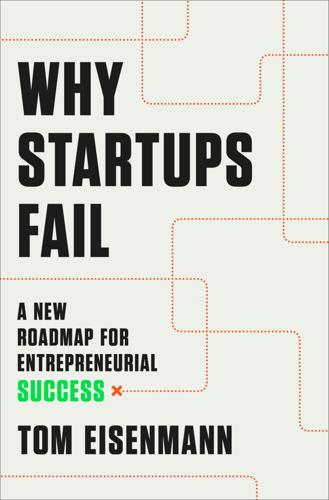
Why Startups Fail: A New Roadmap for Entrepreneurial Success
by
Tom Eisenmann
Published 29 Mar 2021
After Baroo’s failure, Lindsay Hyde spent two years as a venture partner at Moderne Ventures, then joined the Wildflower Foundation, where she leads efforts to create a network of entrepreneur-run, community-connected Montessori “micro schools.” After Fab and Hem were sold, Jason Goldberg co-founded four Berlin-based startups, most recently Moxie, a platform that connects consumers seeking online fitness and yoga classes with instructors. After Dot & Bo shut down, Anthony Soohoo joined Walmart as executive vice president of its Home Division—a business with billions of dollars in revenue. Shai Agassi founded another clean tech startup after Better Place failed: Newrgy, which remains in stealth mode but is speculated to focus on public transportation solutions. Letter to a First-Time Founder Dear Founder: Congratulations for taking the plunge—for committing to work full-time on that startup concept you’ve been pursuing.
…
Also, as discussed in Chapter 4, entrepreneurs can supplement smoke testing by getting customer feedback on a “looks like” prototype, as Jibo’s team did when they built a “Wizard of Oz” prototype that could be puppeteered by a hidden human operator to see how consumers would interact with a social robot. Another barrier to gauging customer demand can be an entrepreneur’s paranoia. Some founders insist on staying in stealth mode as long as possible to keep rivals from stealing their ideas. Steve Jobs was famous for insisting on strict secrecy and then introducing new products with a flourish. Dean Kamen, the inventor of the Segway—the two-wheel, self-balancing (via gyroscope stabilization) “personal transporter” unveiled in late 2001—and the startup’s founder, was worried about Honda or Sony copying his concept; for years, Kamen refused to let his marketing team get direct customer input.
…
As Paul Graham, the founder of Y Combinator, asserts, “A startup is a company designed to grow fast.” Graham explains that an entrepreneur at the helm of a rapidly growing startup will feel strong pressure to raise more money in order to fuel more growth: Money to grow faster is always at the command of the most successful startups, because the VCs need them more than they need the VCs. A profitable startup could, if it wanted, just grow on its own revenues….Whereas VCs need to invest in startups, and in particular the most successful startups, or they’ll be out of business. Which means that any sufficiently promising startup will be offered money on terms they’d be crazy to refuse.
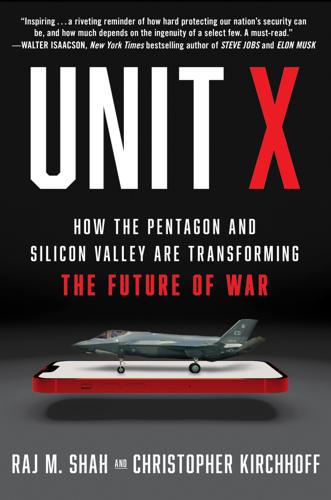
Unit X: How the Pentagon and Silicon Valley Are Transforming the Future of War
by
Raj M. Shah
and
Christopher Kirchhoff
Published 8 Jul 2024
The Pentagon office overseeing DIUx 1.0 must have liked this, because as time went along each subsequent update focused more and more on meetings. The updates were a case study in how outputs can be mistaken for outcomes and how headquarters can reinforce low-yield behavior. Raj’s second directive to the staff was that DIUx 2.0 was going into stealth mode. Much like a startup that had just raised a big round of funding, we needed time to figure out what we were doing. Though our goals were now clear, how exactly we were going to achieve them was not. We needed to find focus and build an apparatus. Raj then unveiled the new tools we’d been given to carry out our mission—the extraordinary set of authorities the Secretary had granted us.
…
If we had SEAL teams and air force and army generals counting on us to deliver them products, we’d make ourselves indispensable. Evelyn and Ed would have to back down; they’d be shamed into restoring our funding. Back in Mountain View, we assembled the team and told them that we needed to shift into warp speed. Stealth mode was out. Dealmaking was in. Without explaining the depths of the crisis we were facing, we instructed the team to start taking pitch meetings. They didn’t fully realize that signing contracts and delivering solutions to warfighters was the only way to keep our unit alive. The credit card fiasco and the tussle with small-minded congressional staffers were only the beginning of our troubles.
…
See drones Raps, Susan, 42–43 Rasmussen, Anders Fogh, 175 Raytheon, 5, 123, 215 Reagan, Ronald, 77 Resilience, 131, 184, 190 Rice, Condoleezza, 134, 178 Richardson, John, 224 Rieschel, Gary, 169 Rosenbach, Eric, 16, 26, 220 Ross, Wilbur, 129 ROTC (Reserve Officers’ Training Corps), 191–92, 194 Rothzeid, David, 190 Russia (former Soviet Union) Black Sea Fleet, 114 electronic warfare system (Tobol), 211 Iranian drones and, 201, 209, 240 jammers used by, 211 military budget, 217 new weapons, 225 nuclear weapons and, 79 SAM missiles, 84 Ukraine War and, 98, 114, 190, 199–201, 210–11, 218 as threat to U.S., 225 Saildrone, x, 110–13, 131 Sanger, David E., 92 SAR (synthetic aperture radar) technology, ix, 74, 80–81 Banazadeh and, 82–83 “Douser” system and, 81 funding for, 87–88 KN-08 surveillance problem and, 76 microsatellites and Capella, 81–83, 91–93, 199, 215, 232 traditional designs, 83 Sasse, Ben, 157 satellites Albedo high resolution, 190 Capella’s microsatellites, 81–83, 86–88, 91–98, 199, 215, 232 commercial companies, 83 DIUx and SAR sensor North Korea project, 74–86 for Google Earth, 190 “Guo Wang” satellites, 225 HawkEye 360, 181, 189, 202, 232 KH-1 Corona, 77 optical-based, limitations, 83 Planet Labs, 202 reconnaissance, 77, 79, 80, 83 Starlink, 201, 204, 224–25 Scale AI, 169, 239 Donovan platform, 239 Schadlow, Nadia, 139–40, 141 Schmidt, Eric, xi, 46, 47, 118, 130, 134, 220 advice for Shah, 184, 186 Biden administration and, 169–70 CAOC misuse of IT and, 54 career history, 48–49, 186 heads the DIB, 46, 47, 48–49, 155 Munich meeting with China’s top AI diplomat, Fu Ying, 162–68 NSCAI and, 143–45, 147–48, 155–57, 175 Pelosi and, 162 SCSP and, 206 Trump and, 159 Ukraine War and, 210, 212 Schmidt Futures, 130, 134, 143 Schumer, Chuck, 158, 161, 174 SCIF (sensitive compartmented information facility), 73 Scott, Denise, 43 SCSP (Special Competitive Studies Project), 206 Seidman, Ricki, 170–71 Selva, Paul, 75, 78, 88, 93–95 SenseTime, 137 Serafini, John, 181, 189 Shah, Raj M. angel investing and, 131, 180–84, 202 Ash Carter Exchange meeting, 228 background, 14, 187 Banazadeh and SAR satellites, 85–86 Brown and, 172 “The Business of the UAS Industry,” 235 Capella and, 73–75, 86–88, 92–98 Carter and, 219 on Commission on Planning, Programming, Budgeting, and Execution Reform, 245–46 cybersecurity startups, 2, 14, 15, 21, 184, 190, 197 DIU 3.0 and, 226–27 DIUx, personal investment in, 129 DIUx all-hands meeting, 19, 21–23 DIUx mission, 2, 21–22 DIUx recruits him, with Kirchhoff, 2, 11, 15–17 DIUx team members and, 19–21 as “dual fluency” reservist, 21 as F-16 pilot, 1, 44, 64, 65, 237 fight to restore DIUx’s budget, 28–36 founding CEO, Resilience, 131 as Hoover Institution fellow, 179 leaves DIUx, 130 Mattis and, 108 meeting with McCain, 64–66 meeting with Thornberry, 71–72 NATO’s Innovation Fund and, 233, 245 need for national strategy on AI, 143 North Korea surveillance project, 76–77, 78 NSCAI and, 144 number of trips to D.C., 28, 71 policy changes to improve U.S. military readiness, 192–96 Project Maven and, 117–18, 120–21 Schmidt and, 155, 184, 186 Shield Capital and, 173, 177, 179, 184–91 Stanford class, 179 Stephens and Luckey meet, 125–26 Taiwan and, 218 tanker refueling project, 54–55 Tech Track 2 and, 178–80, 230 Trump meeting with, 128–29 Ukraine and, 215, 232–34 venture capitalists and, 103 visit to CAOC at Al Udeid, 45–46, 49 visit to Hanscom Air Force Base, 53 Warsaw conference on UAS scaling and, 234–36 Wert tries to shut down DIU, 59–60 Shanahan, John “Jack,” xi, 117, 121 JAIC and, 121, 158, 212 NSCAI and, 158–59 Ukraine War and, 212–13 Shanahan, Patrick, 153 Shield AI, 100–101, 131, 191 Nova drones, 101 Shield Capital, ix, 173, 177, 179, 181, 184–91, 197, 239 Shyu, Heidi, 222–23 Silicon Valley, 97 acceptable attire in, 17–18 advantages of, 76 Carter’s overtures to, 7–9 China’s venture capital in, 149 deal-making in, 36–37, 38 defense investing in, 138, 143, 177–91 defense-oriented startups, 101, 103, 127, 131, 191, 215, 237 DIUx contracts and raising venture capital for startups, 9, 85, 96, 97, 98, 99, 101, 202 DIUx located in, 8–9, 12 DIUx’s mission to link startups with the Pentagon, 2, 9–10, 89 DoD relations with, 5–6, 40, 97, 122–28, 178, 237 (see also Project Maven; specific products) “fail fast” philosophy and, 13 global technology market and, 39 “lean” methodology, 54, 84 moral objections to weapons of war, 6, 120–21, 127–28, 183, 188 need for H-1B visas for critical engineers, 195 NSA spying and, 6, 7 Replicator Initiative and, 240 startups created by immigrants, 195–96 startups surpassing big defense contractors, 116 startups with transformational technology, 5 startups with warfare innovations, 3 Ukraine War and, 190, 202–3, 206, 207 way of, better to beg forgiveness, 66, 243 “Working backward from the customer,” 46, 85 world’s ten largest tech companies based in the U.S., 177 See also venture capital; specific startups Skydio, 108, 202 Smith, Megan, 140 Snowden, Edward, 6, 7, 10 Somewear Labs, 202, 205 Sorensen, Reuben, xi, 73–74, 76, 78, 87, 92 Banazadeh and SAR satellites, 86 Capella funding and, 95 Datahub project and, 80, 81 J-39 SWAT team and, 74, 80 Orbital Effects founded, 97 SOUTHCOM, Saildrone project, 111 South Korea, 89–92 Brooks as U.S.

Lonely Planet Pocket San Francisco
by
Lonely Planet
and
Alison Bing
Published 31 Aug 2012
Hop off at Vallejo to take stairway walks to literary locations: hilltop Ina Coolbrith Park (Click here ) leads to shady Macondray Lane from Armistead Maupin’s Tales of the City ; Jack Kerouac’s Love Shack ( Click here ), where he wrote On the Road in the attic; and on to Lombard Street (Click here ) and Sterling Park ( Click here ), where Golden Gate Bridge (Click here ) views inspired SF’s original ‘King of Bohemia’, George Sterling. Pause for pizza at Za (Click here ) before you cover the waterfront, where you can explore newly restored underwater murals and mosaics at Aquatic Park Bathhouse ( Click here ), save the world from Space Invaders at Musée Mecanique ( Click here ), and enter underwater stealth mode inside USS Pampanito ( Click here ). Afterwards, watch sea lions salute the setting sun at Pier 39 ( Click here ). End the evening with shivers on a night tour of Alcatraz ( Click here ). Afterwards, at the Ferry Building (Click here ), celebrate your great San Francisco escape with bubbly and oysters at Hog Island ( Click here ) and Dungeness crab noodles at Slanted Door ( Click here ).
…
Fisherman’s Wharf & the Piers Top Sights Fisherman's Wharf B1 Lombard Street B3 Sights 1 Aquatic Park Bathhouse A2 2 San Francisco Art Institute B3 3 Jack Kerouac's Love Shack B4 4 Ghirardelli Square A2 5 Aquatic Park A2 6 Blazing Saddles B2 Eating 7 Gary Danko B2 8 Crown & Crumpet A2 9 Za B4 10 Kara's Cupcakes A2 11 In-N-Out Burger B2 12 Frascati B4 13 Forbes Island C1 14 Swensen's B4 15 Salty's Famous Fishwich C1 16 Eagle Cafe D1 Drinking 17 Buena Vista Café B2 18 Winery Collective B2 19 Jack's Cannery Bar B2 Entertainment 20 Pier 23 E2 Top Sights Fisherman’s Wharf Offline map Google map www.fishermanswharf.org Embarcadero & Jefferson St waterfront Admission free 19, 37, 47, 49, F Powell-Mason, Powell-Hyde Where fishermen once snared sea life, San Francisco now traps tourists in a commercial sprawl between the cable car terminus and Alcatraz Cruises port. But where you’d least expect it, Fisherman’s Wharf offers surprise and delight. Here you can sunbathe with sea lions, ride carousel unicorns, experience stealth mode inside a WWII submarine, consult vintage mechanical fortune-tellers, and watch sharks circle from the safety of glass tubes built right into the bay. Sea lions at Pier 39JOHN ELK III/LONELY PLANET IMAGES © Don’t Miss Sea Lions at Pier 39 Pop stars wish they could live like San Francisco’s sea lions, who’ve taken over an entire yacht marina with their harems since 1990.
…
A few quarters at the Musée Mecanique (www.museemecanique.org; Pier 45, Shed A; admission free; 10am-7pm Mon-Fri, to 8pm Sat-Sun; ) let you start bar brawls in mechanical Wild West saloons, save the world from Space Invaders and get your fortune told by an eerily lifelike wooden swami. USS Pampanito Dive, dive, dive! Head into the belly of a restored WWII US Navy submarine (www.maritime.org; Pier 45; adult/child $10/4; 9am-5pm) that sunk six Japanese ships (including two carrying British and Australian POWs). Submariners’ stories of tense moments in underwater stealth mode will have you holding your breath – caution, claustrophobes – and all those brass knobs and hydraulic valves make 21st-century technology seem overrated. Aquarium of the Bay Take a long walk off a short pier right into the bay, and stay perfectly safe and dry as sharks circle, manta rays flutter and schools of fish flit overhead.
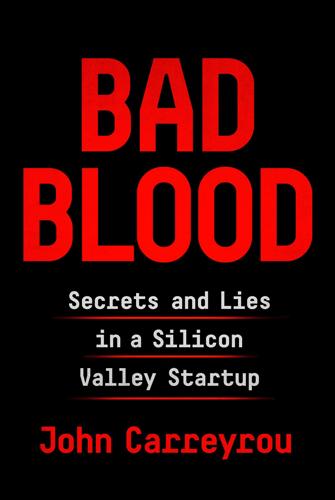
Bad Blood: Secrets and Lies in a Silicon Valley Startup
by
John Carreyrou
Published 20 May 2018
As admirable as Ian’s exacting standards were, Tony felt that all he did was complain and that he never offered any solutions. Ian also had issues with Elizabeth’s management, especially the way she siloed the groups off from one another and discouraged them from communicating. The reason she and Sunny invoked for this way of operating was that Theranos was “in stealth mode,” but it made no sense to Ian. At the other diagnostics companies where he had worked, there had always been cross-functional teams with representatives from the chemistry, engineering, manufacturing, quality control, and regulatory departments working toward a common objective. That was how you got everyone on the same page, solved problems, and met deadlines.
…
In advertising, it wasn’t often you got to work on something that really had the potential to make the world better. Patrick hadn’t been surprised or put off by Theranos’s insistence on absolute secrecy. Apple had been the same way. He understood technology companies’ need to protect their valuable intellectual property. In any case, the company would soon be coming out of “stealth mode,” as Elizabeth called it, and that’s where he came in: his job was to make its commercial launch as impactful as possible. Redesigning the Theranos website was a big part of that. Schoeller’s photos were going to be featured on it. Not just those of Elizabeth. The photographer had spent most of the two-day shoot at a studio in Culver City taking pictures of models posing as patients.
…
The first set of numbers he’d come up with hadn’t been to her liking, so he’d revised them upward. He was a little uncomfortable with the revised numbers, but he figured they were in the realm of the plausible if the company executed perfectly. Besides, the venture capitalists startups courted for funding knew that startup founders overstated these forecasts. It was part of the game. VCs even had a term for it: the hockey-stick forecast. It showed revenue stagnating for a few years and then magically shooting up in a straight line. The one thing Mosley wasn’t sure he completely understood was how the Theranos technology worked.

The Future Is Faster Than You Think: How Converging Technologies Are Transforming Business, Industries, and Our Lives
by
Peter H. Diamandis
and
Steven Kotler
Published 28 Jan 2020
Exo Imaging’s AI-enabled, cheap, handheld ultrasound 3-D imager: Exo recently emerged from stealth with a $35 million raise. Read the full press release here: https://www.businesswire.com/news/home/20190805005114/en/Exo-Imaging-Emerges-Stealth-Mode-35M-Series|. See also: https://www.exo-imaging.com/. (Author note: Peter’s VC firm is an investor.) Mary Lou Jepsen’s startup, Openwater: Mary Lou Jepsen gave a TED Talk about Openwater that you can find here: https://www.youtube.com/watch?v=awADEuv5vWY. See also: https://www.openwater.cc/about-us. (Author note: Peter’s VC firm is an investor.) Apple’s fourth-generation iWatch: Read Apple’s full press release here: https://www.apple.com/newsroom/2018/09/redesigned-apple-watch-series-4-revolutionizes-communication-fitness-and-health/.
…
Samumed, LLC, for example, is targeting the signaling pathways that regulate the self-renewal and differentiation of adult stem cells. If successful, their patented molecules should be able to regrow cartilage, heal tendons, remove wrinkles, and, by the way, stop cancer. This also explains why Samumed, a company still in stealth mode, has a $13 billion valuation. A different approach is being pioneered by Celularity, a company founded by stem cell pioneer Bob Hariri (Peter is also a cofounder). Hariri’s experiments demonstrate that, in animals, placental-derived stem cells can extend life 30 to 40 percent. The company’s mission is to make this approach viable in humans, harnessing stem cells to amplify the body’s ability to fight disease and heal itself.
…
See: https://www.whichplm.com/3-D-technology-a-new-dimension-for-fashion/. Armani: “Bodi.Me.” See: http://bodi.me/. Bombfell: Ryan Lawler, “500 Startups-Backed Bombfell Helps Nerds Get Stylish, for Just $69 a Month,” TechCrunch, June 14, 2012. See: https://techcrunch.com/2012/06/14/bombfell/. Amazon acquiring the 3-D body-scanning startup Body Labs: Natasha Lomas, “Amazon Has Acquired 3-D Body Model Startup, Body Labs, for $50M-$70M,” TechCrunch, October 3, 2017. See: https://techcrunch.com/2017/10/03/amazon-has-acquired-3-D-body-model-startup-body-labs-for-50m-70m/. Alibaba’s FashionAI: Christine Chou, “New Alibaba Concept Store Teases Future of Fashion Retail,” July 4, 2018.

Designing Social Interfaces
by
Christian Crumlish
and
Erin Malone
Published 30 Sep 2009
This is mainly because while “Available” can be easily mapped to “Go” (green), three of the states (Busy, Offline, and Idle) are all equivalent to “Stop” (red), and none of them map particularly well to “Slow Down/Proceed with Caution” (amber). Stealth Mode An automated system that is too transparent or honest may put users into awkward situations, such as when they wish to be available to some, but not all, of their contacts. Therefore, you might find it useful to provide a stealth mode (Figure 5-7), the ability to sign in as “Invisible” and hence not reveal oneself automatically on connecting to the application. Figure 5-7. You may offer your users (as Yahoo!
…
. . . . . . . . . . . . . . . . . . . . . . . . . . . . . . . . . . . . . . . . . . . 81 Identity Profile Testimonials (or Personal Recommendations) Personal Dashboard Reflectors Identity Cards or Contact Cards Attribution Avatars Further Reading Download at WoweBook.Com 82 86 100 104 108 111 113 115 119 Contents ix 5. We Are Here! We Are Here! We Are Here!. . . . . . . . . . . . . . . . . . . . . . . . . . . . . 121 A Brief History of Online Presence The Future of Presence Presence Actions and Facets Availability Stealth Mode Mood Environment Buddy List Activity Streams Statuscasting Microblogging Updates Updates Opt-in Disclosure Managing Incoming Updates Lifestreams Keep Company Signs of Life User Gallery Who’s Here Now? Further Reading 123 124 125 127 129 131 132 133 135 137 138 139 141 143 144 145 147 149 150 152 6.
…
, 476–478 Ask Questions pattern, 30–31 Asymmetric Following pattern, 335 asynchronous editing, 315 Attribution (Creative Commons licenses), 261 Attribution No Derivatives (Creative Commons licenses), 261 Attribution Noncommercial (Creative Commons licenses), 261 Attribution Noncommercial No Derivatives (Creative Commons licenses), 261 Attribution Noncommercial Share Alike (Creative Commons licenses), 261 Attribution pattern, 113–115 Attribution Share Alike (Creative Commons licenses), 261 Authorize pattern, 63–66 auto-stalking tool, 240 Availability pattern, 127–132 environment, 132 icons, 128 mood, 131 stealth mode, 129 what I’m listening to, 132 available versus unavailable, 126 Avatars pattern, 115–118 Avedon, Richard, quote, 81 awards, 166–171 Collectible Achievements pattern, 166–169 Peer-to-Peer Awards pattern, 169–171 B Badging pattern, 446–447 Basecamp, 35 adding group to project, 310 recent activities, 149 Signal vs.
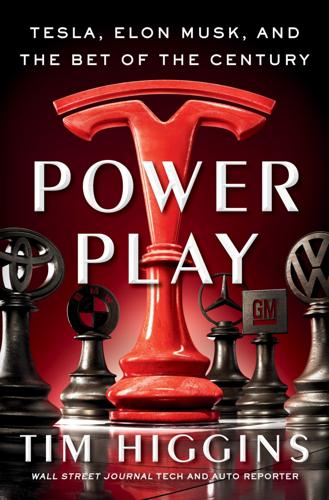
Power Play: Tesla, Elon Musk, and the Bet of the Century
by
Tim Higgins
Published 2 Aug 2021
He suggested being vague, for instance suggesting a price tag between $85,000 and $120,000. “I am nervous about $85k,” Eberhard told Musk, emphasizing the point. * * * — For the past three years, Tesla had been in “stealth mode,” a rite of passage for Silicon Valley startups as founders try to get their feet on the ground—raising initial money and hoping to avoid the harsh spotlight that magnifies the mistakes inevitably made during the early days of being a company. Coming out of stealth mode tends to have a familiar playbook, aimed at maximizing exposure, whether the end goal is raising more money or gaining customers. In Tesla’s case, their aim was simple: to pre-sell Roadsters.
…
Laurie Yoler, a friend and colleague at Packet Design who was well connected in the investor world, was setting them up with meetings around Silicon Valley. A startup typically began with some seed money—maybe from the founder’s own pocket or scraped together from friends and family, to show that the company had strong early support—before raising increasingly large rounds of funding. At each round, the founder gave up some ownership stake of the company as others bought in, and current investors either had to up their investment or else face dilution. Venture capitalists (VCs), meanwhile, ran funds that raised millions of dollars with the goal of investing in such startups, then cashing out—either through acquisition of the startup by a bigger company or else through an initial public offering at some point during the fund’s lifetime (typically eight to twelve years).
…
While Tesla had initially eschewed Detroit engineers, the challenge of building an all-new car from the ground up had led to an increasing reliance on their ranks. In 2007, the idea of joining a California startup making an electric car was pretty radical in Detroit, which had recently experienced several heady years, with sales reaching new records. Even though cracks were forming in the foundations of GM and Ford, the money was still flowing. Engineering and executive careers at General Motors, Ford, and DaimlerChrysler came with the expectation of lifetime employment and lucrative pensions. GM was often jokingly referred to as Generous Motors. The idea of giving that up for a startup that might not pan out was a hard sell in those days—to the bemusement of the team back in Silicon Valley, where the risk of losing a job for a potential payout was seen as the norm.
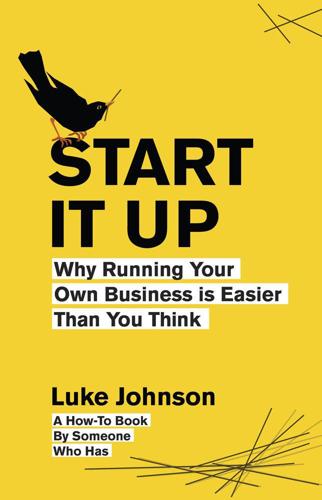
Start It Up: Why Running Your Own Business Is Easier Than You Think
by
Luke Johnson
Published 31 Aug 2011
The disadvantages of moonlighting are also clear: if you get caught by your boss misusing resources or getting distracted from the day job, there will be trouble; and a business run in your spare time will never receive the focus and devotion it needs to be truly successful. If you are ambitious, the part-time option should only ever be temporary. To avoid being forever in stealth mode, you should have a ‘boat-burning’ target: a clearly defined point at which you chuck the day job and dive in. Don’t tweak your fledgling business until it seems like a sure-fire bet: it never will be. It’s very easy to tinker away on the margins for ever but, as Steve Jobs once said to a perfectionist engineer at Apple, ‘real artists ship’.
…
Of course, your start-up might prove a vain attempt at the prize, so you may lose money, time and pride. But you know what? No one really notices or cares. There is never a perfect time to begin the journey. But if you have ambition and are willing to apply the effort, stop making excuses – get out there and start battling. Start-ups with a dash of going concern Which is the best bet – starting a business or buying one? That is the first great question confronting the budding entrepreneur. It’s a pity so few actually ask it of themselves. The world is in love with the romance of start-ups. The nineties dotcom boom resulted in obsessive coverage of start-ups, particularly technology start-ups, such that these days many younger entrepreneurs see no other way into business than via a newly invented gadget or service.
…
The nineties dotcom boom resulted in obsessive coverage of start-ups, particularly technology start-ups, such that these days many younger entrepreneurs see no other way into business than via a newly invented gadget or service. But all other things being equal, I believe it can sometimes be better to buy a business than start one. I’m not necessarily talking about a large, highly profitable company – it might just be a little key money to take over an already fitted restaurant lease. ‘Our greatest glory lies not in never falling, but in rising every time we fall’ Confucius Now that advice might not be what many readers expect to hear – or want to hear – but it comes from someone who has both started businesses and bought them.

Our Final Invention: Artificial Intelligence and the End of the Human Era
by
James Barrat
Published 30 Sep 2013
In AI, the only reason for a company to be stealthy is if they’ve had some powerful insight, and they don’t want to reward competitors with information about what that their breakthrough is. By definition, stealth companies are hard to discover, though rumors abound. PayPal founder Peter Thiel funds three stealth companies devoted to AI. Companies in “stealth mode” however, are different and more common. These companies seek funding and even publicity, but don’t reveal their plans. Peter Voss, an AI innovator known for developing voice-recognition technology, pursues AGI with his company, Adaptive AI, Inc. He has gone on record saying AGI can be achieved within ten years.
…
Profits go back into research-and-development for OpenCog. Numenta, Inc., brainchild of Jeff Hawkins, the creator of the Palm Pilot and Treo, earns its living by working inside electrical power supplies to anticipate failures. For about a decade, Peter Voss developed his AGI company, Adaptive AI, in “stealth” mode, widely lecturing about AGI but not revealing how he planned to tackle it. Then in 2007 he launched Smart Action, a company that uses Adaptive AI’s technology to empower Virtual Agents. They are customer-service telephone chatbots that ace NLP skills to engage customers in nuanced purchase-related exchanges.
…
If a bad thing happened there, you would never hear about it over optimism’s merry din. Jeff Stibel’s Wired for Thought represents the second tack. It looks at the technological future through the lens of business. Stibel persuasively argues that the Internet is an increasingly well-connected brain, and Web start-ups should take this into account. Books like Stibel’s try to teach entrepreneurs how to dip a net between Internet trends and consumers, and seine off buckets full of cash. Most technology theorists and authors are missing the less rosy, third perspective, and this book aims to make up for it. The argument is that the endgame for first creating smart machines, then smarter-than-human machines, is not their integration into our lives, but their conquest of us.
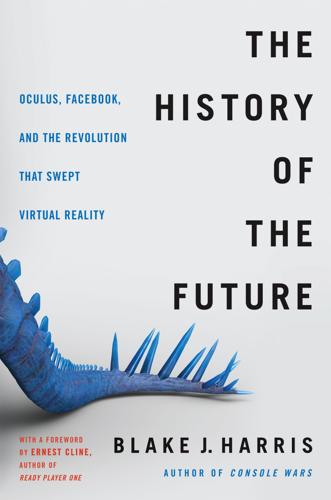
The History of the Future: Oculus, Facebook, and the Revolution That Swept Virtual Reality
by
Blake J. Harris
Published 19 Feb 2019
Unfortunately, I can’t say what it is, other than it’s a start-up in SoCal that is currently in stealth mode. Hopefully I’ll be able to share more in the future! I’ll be spending the rest of the week documenting all my code, PCBs, CAD, etc. and wrapping up/passing off my current projects. If you’ve ever had me make anything for you and you think you might need another of that thing in the future, let me know so I can be sure to provide you with the files! Why am I leaving Oculus? I would have gladly stayed at Oculus for at least a couple more years, but this new job came up and it really sounds like something I want to do. I miss the startup days at Oculus—some of my favorite memories of this company are from that time.
…
I’m planning to stick around as long as I can, so I’ll probably be available to chat if you’d like. Though I am a little disappointed I won’t make it to my 5 year Oculus anniversary—only 2.5 months away! Oh well. Somebody else will have to get that title first instead! Chris Dycus, employee number 1, out. The “stealth mode” start-up that Dycus was referring to here was Anduril: a new defense tech company founded by Trae Stephens, Matt Grimm, Brian Schimpf and—and course—Joe Chen and Palmer Luckey. Chapter 50 He’s Back April/May 2017 “I DON’T WANT TO BE ANOTHER EDUARDO,” LUCKEY TOLD CHEN, REFERRING TO the famously ousted—and, in Silicon Valley, largely considered “forgotten”—Facebook cofounder Eduardo Saverin.
…
Or a dozen other companies that wouldn’t be such dicks. Okay, I get it, we’re a start-up. But come on. We’re not, like, some dudes-in-their-dorm-room start-up. But”—Mitchell continued, now playing devil’s advocate to himself—“the press will kill us if we lose Doom.” “Two things,” Luckey said. “One: we can’t lose Doom. We just can’t. And for that matter, we can’t lose John. And two: while I agree with you, obviously—we’re not some little rinky-dink start-up—it is interesting that now is when we’re having this conversation. Just in the sense that in almost every way, start-ups are at a distinct advantage from big companies. Even middle-sized companies!
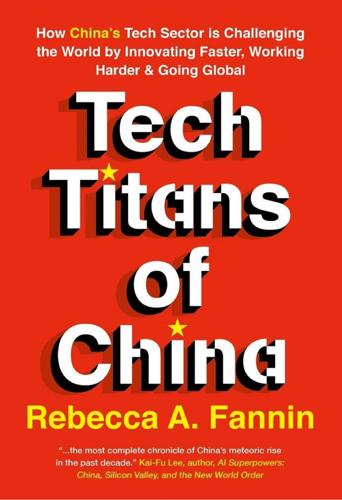
Tech Titans of China: How China's Tech Sector Is Challenging the World by Innovating Faster, Working Harder, and Going Global
by
Rebecca Fannin
Published 2 Sep 2019
Meanwhile, sales of French drone maker Parrot have nosedived, shares have dipped, and its majority owner has launched a takeover of the business. DJI is fending off yet more drones, including California-based Impossible Aerospace, founded by Tesla and SpaceX veterans. The Tesla version came out of stealth mode in late 2018 and has raised $11 million from two Silicon Valley investment firms, Bessemer Venture Partners and Eclipse Ventures. Impossible Aerospace is aiming to upend the status quo with an electric model that can fly for two hours and has been sold to police departments, firefighters, and search and rescue teams.
…
Pivot to Israel Alibaba’s Ma has turned his kung fu–like skills to seeking and funding startups in the “Startup Nation” of Israel. On his first trip to Israel in May 2018, he led a delegation of 35 Alibaba executives to visit investors and check out startups in Israel’s stronghold of cyber-security as well as augmented reality, online gaming, QR codes, and AI. Alibaba promptly invested $26 million in big data company SQream Technologies, co-invested $40 million in mass transit software startup Optibus, and added to its $30 million co-investment in safe driving technology startup Nexar. These deals were on top of its first Israeli deal, an acquisition of personalized QR code designer Visualead in 2017 to establish a Tel Aviv research and development center.
…
In their quest to win the AI challenge, the three titans are hunting for new AI technologies and applications by investing in AI startups globally. Since 2014, this trio of Chinese tech giants has made 39 equity deals in startups that are building AI chips and software.2 Despite scrutiny over Chinese investments in US technology startups, this cross-border pipeline is active in artificial intelligence. In the United States, Tencent has made the most deals but Baidu has the most diversified AI portfolio, spanning to health care, advertising, and media startups. Baidu’s AI plate includes not only 95 partners in its ecosystem worldwide working on autonomous driving but also investments in AI-related startups in the US: ZestFinance in fintech underwriting, Kitt.ai in conversational language search, TigerGraph in data link analytics, Tiger Computing Solutions in big data, and xPerception in computer vision for self-driving.

Why Women Have Better Sex Under Socialism: And Other Arguments for Economic Independence
by
Kristen R. Ghodsee
Published 20 Nov 2018
The historian Anna Krylova has explored the slow integration of Soviet women into the military despite initial male resistance. By World War II, the USSR had squadrons of trained female fighter pilots. These included the infamous Nachthexen (night witches) of the 588th Night Bomber Regiment of the Soviet Air Forces, who flew in stealth mode at night and dropped precision bombs on German targets. The women pilots were all in their late teens and early twenties, and they flew about thirty thousand missions from 1941 to 1945. Although other countries had trained female pilots who flew in support roles, the Soviet Union was the first country in the world to allow women to fly combat missions.
…
Jake’s company gave her a three-month paid sabbatical for some additional training, grooming her for a promotion. Then she announced she was pregnant. The start-up had no formal maternity leave policy, but Jake asked his boss to give her twelve paid weeks to stay home with her baby and make child care arrangements. Jake argued that they had already invested so much money in her training that a twelve-week leave would pay for itself in the long run. His boss reluctantly agreed. The woman returned to work after the birth of her baby and tried her best to keep up with the demands of a small start-up. But she was nursing. And the baby kept her up at night. She would attend meetings bleary-eyed and unprepared.
…
In the democratic socialist countries of northern Europe, women’s employment is voluntary, but the state promotes their labor force participation by providing the social services necessary to help citizens combine their roles as workers and parents.11 Socialist states also try to counter the persistent discrimination against women by expanding opportunities for public sector employment. Although not as sexy as start-ups, governments can ensure women are paid equal (decent) wages for equal work and support women in their work and family responsibilities. According to a report from the Organization for Economic Co-operation and Development (OECD), the Scandinavian countries lead the world not only in terms of gender equality but also in terms of public sector employment.

Exponential Organizations: Why New Organizations Are Ten Times Better, Faster, and Cheaper Than Yours (And What to Do About It)
by
Salim Ismail
and
Yuri van Geest
Published 17 Oct 2014
Coca-Cola also has become a founding member of Singularity University Labs, where disruptive teams can, away from the mother ship [Autonomy, Leveraged Assets], work with startups on next-generation products and services. And to further ensure that new ideas can evolve away from existing legacy thinking, Coca-Cola is creating new companies that are completely separate from current cash-cow businesses. These new companies enjoy full autonomy from Coke’s existing tax, legal, finance and HR systems [Autonomy, Dashboards]. That said, there is one notable departure for Coca-Cola relative to the ExO philosophy: the transparency of its disruptive innovation. It is our thesis that disruptive innovation efforts work best when they operate in stealth mode, divorced from the rest of the company, so as to avoid triggering an organizational immune system response.
…
One caveat, however: This is not meant to be an exhaustive startup manual—that book remains to be written. Rather, we’ll discuss the elements relevant to building an ExO that is leveraged by information and is highly scalable, either as a pure startup or from within an existing enterprise. A quick but relevant side note here: We strongly recommend reading The Lean Startup by Eric Ries as an accompaniment to this chapter, since we’ll be referring to it frequently. In fact, the best definition we’ve found for a startup comes from Ries: “A startup is a human institution designed to deliver a new product or service under conditions of extreme uncertainty.”
…
At around the same time Kodak was closing its doors, the startup Instagram, three years in business and with just thirteen employees, was bought by Facebook for $1 billion. (Ironically, this happened while Kodak still owned the patents for digital photography.) Iridium’s missteps and the epochal industry change from Kodak to Instagram were not isolated events. Competition for many of America’s Fortune 500 companies is no longer coming from China and India. As Peter Diamandis has noted, today it’s increasingly coming from two guys in a garage with a startup leveraging exponentially growing technologies. YouTube went from a startup funded by Chad Hurley’s personal credit cards to being purchased by Google for $1.4 billion, all in less than eighteen months.
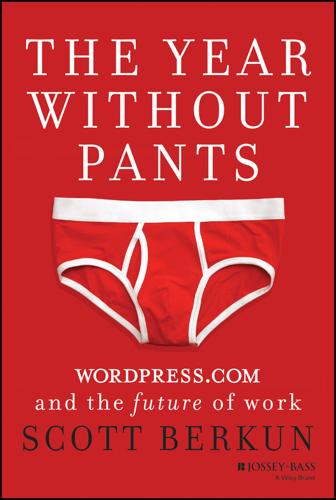
The Year Without Pants: Wordpress.com and the Future of Work
by
Scott Berkun
Published 9 Sep 2013
The only sign outside, hung fifteen feet off the ground, identified the building as “Pier 38: Maritime Recreational Center” and listed dock and boat rental as the primary activities inside, but there were no instructions on where to go to find them. Directly to the left and right of the car path were the only visible doors, made of rusted steel with no windows; one door had no outward-facing handle. Many start-ups talk about being in stealth mode, but for the dozens of tech companies residing inside Pier 38, it was a literal fact. Dogpatch Labs, which hosted Instagram and Formspring, was on the first floor. Polaris Partners, True Ventures, 99designs, and dozens of other start-up and start-up-related organizations were some of the other tenants. None of these companies was particularly secretive, however; in fact, many were happy to get as much attention as possible, but the building was foreboding enough that if you didn't know exactly where you were going, you'd never find them.
…
Read The Year Without Pants to catch up.” —Chris Guillebeau, author, New York Times bestseller The $100 Startup “You'll be surprised, shocked, delighted, thrilled, and inspired by how WordPress.com gets work done. I was!” —Joe Belfiore, corporate vice president, Microsoft “Most talk of the future of work is just speculation, but Berkun has actually worked there. The Year Without Pants is a brilliant, honest, and funny insider's story of life at a great company.” —Eric Ries, author, New York Times bestseller The Lean Startup “WordPress.com has discovered a better way to work, and The Year Without Pants allows the reader to learn from the organization's fun and entertaining story.”
…
Changing to a different system would challenge the culture, and without a specific problem to justify the change, I didn't see the point in trying. I tried to remember Mullenweg's attitude of letting that which did not matter, not matter. Maybe with the right culture and talent, you didn't need some of the fundamental things experts claim you need. Start-up companies get away with it all the time, but WordPress.com was not a start-up anymore. On Team Social we tracked issues in the simplest way possible: we made lists. As programmers fixed them, we crossed them off. It was easy to see how many were fixed and how many were left, or to add comments to a particular issue. Where it failed was triage: all bugs tended to be treated equally.
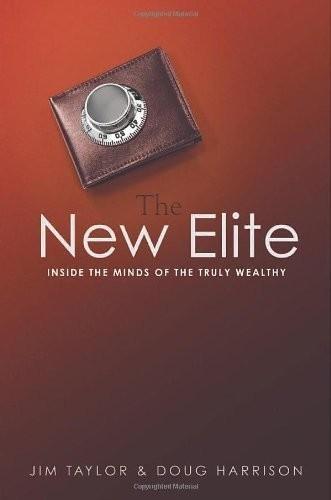
The New Elite: Inside the Minds of the Truly Wealthy
by
Dr. Jim Taylor
Published 9 Sep 2008
What was the reward for his exhausting role in boosting company revenue by several billion? He and each member of his team got a plaque and a check for $250. The team members looked at one another, and concluded they needed to chart a different path in life. They started their own company, quietly renting an office next to their current employer, and they operated in stealth mode while maintaining their day jobs. They developed new technologies for Internet routers and servers, and their timing couldn’t have been better—it was the early 1990s, the Internet was just taking off, and soon their growing business allowed them to leave the security of their day jobs. Within a few years, they were able to sell the company to a large technology provider for over $70 million, mostly in stock options that proceeded to multiply in value many times over the ensuing years.
…
The United Nations estimates there are over 60,000 multinational corpo- Globizens 163 rations, a figure that has doubled over the past two decades, while the average size of multinationals has dropped dramatically.1 Globalization isn’t just about moving work to where it can be done at the lowest cost; increasingly, it is about getting the best people, bigger teams, and leveraging time-zone differences to enable work to continue 24/7. And it is often about growth opportunities. Israeli high-tech start-ups, for example, are often born global, or go global very quickly, because the markets in their home country are small. Indeed, this model is sometimes called ‘‘Israeli Internationalization,’’ and it is increasingly being applied in other small countries.2 Indeed, whereas historically companies started locally and grew globally, today some of the hottest buzzwords in entrepreneurial circles are global start-ups, born global, and micro-multinationals. The bottom line for our purposes is that today’s wealthy are far more likely to have an intricate network of international connections, relative to the generations of wealthy individuals who came before them.
…
Moreover, as fully formed members of the wealth class, these people have international business connections that are strengthened in two additional ways. First, many are involved in seeding start-ups, either through private equity funds or more directly through angel investing, and such investments increasingly mean evaluating multinational teams of executives. Second, the wealthy are heavily involved as members of corporate boards, with 40 percent serving on at least one corporate board of directors, and most of that 40 percent serving on more than one board. Like start-ups, the boards of major corporations are becoming increasingly international in scope. For example, two-thirds of the thirty companies constituting the Dow Jones Industrial Average have at least one international board member; over 20 percent of the board members are non-Americans at Dow component companies Alcoa, Citigroup, General Electric, IBM, and Walt Disney.3 International board membership is often even stronger outside of the United States, with companies in developing countries increasingly looking 164 The New Elite for board members from outside of their home country, as this fosters connections that fuel business growth, and makes potential investors more confident that the company is stable and well managed.4 All of these global business relationships deepen the ethic of global citizenship.

Rule of the Robots: How Artificial Intelligence Will Transform Everything
by
Martin Ford
Published 13 Sep 2021
The company is employing robotic picker arms that use suction cups to lift items with suitable surfaces, such as cans, as well as soft rubber robotic hands that someday will be able to effectively grasp more fragile items. The quest to build a truly dexterous robot has become a major focus of Silicon Valley venture capital firms, and a number of well-funded startup companies have emerged, embracing varied approaches as they innovate at the research frontier. One of the highest-profile startups is Covariant, which was founded in 2017 but emerged from stealth mode only in early 2020. The researchers at Covariant believe that “reinforcement learning”—or essentially learning through trial and error—is the most effective way to progress, and the company claims to be building a system based on a massive deep neural network that it calls “universal AI for robots,” which it expects to eventually power a variety of machines that can “see, reason and act in the world around them, completing tasks too complex and varied for traditional programmed robots.”21 The company, founded by researchers from the University of California at Berkeley and OpenAI, has received investments and publicity from some of the brightest lights in deep learning, including Turing Award winners Geoffrey Hinton and Yann LeCun, Google’s Jeff Dean and ImageNet founder Fei-Fei Li.22 In 2019, Covariant defeated nineteen other companies in a competition organized by the Swiss industrial robot maker ABB by demonstrating the only system capable of recognizing and manipulating a variety of items without any need for human intervention.23 Covariant will be working with ABB as well other major companies to imbue industrial robots deployed in warehouses and factories with intelligence that the company believes will eventually match or exceed human-level perception and dexterity.
…
Once a shopper leaves the store, again exiting through a turnstile, the purchases are automatically charged to the customer’s Amazon account.32 Amazon has established Go convenience stores in twenty-six locations in major U.S. cities, and by one report is considering eventually opening as many as 3,000 stores across the United States.33 In February 2020, the company announced its first full-size cashierless grocery store. Located in the Capitol Hill suburb of Seattle, the supermarket is about 10,000 square feet and stocks roughly 5,000 items. While Amazon is, as usual, the highest-profile player, a number of startup companies are racing to bring similar technologies to market. Accel Robotics, for example, received $30 million in venture capital to fund its “grab and go” technology in December 2019. Other startups include Trigo, Standard Cognition and Grabango, all of which have raised at least $10 million from investors.34 Amazon has reportedly also licensed its technology to other retailers.35 In other words, we are on the verge of seeing a vibrant and highly competitive market for the technology that powers stores without checkout aisles.
…
The result is an iterative, self-improving process that the company claims dramatically accelerates the discovery of useful new molecules.74 Many of the most exciting and heavily funded opportunities in the space where chemistry intersects with artificial intelligence are in the discovery and development of new drugs. By one account, as of April 2020, there were at least 230 startup companies focused on using AI to find new pharmaceuticals.75 Daphne Koller, a professor at Stanford and the co-founder of the online education company Coursera, is one of the world’s top experts on applying machine learning to biology and biochemistry. Koller is also the founder and CEO of insitro, a Silicon Valley startup, founded in 2018, that has raised over $100 million to pursue new medicines using machine learning. The broad-based slowdown in technological innovation that plagues the American economy as a whole is especially evident in the pharmaceutical industry.
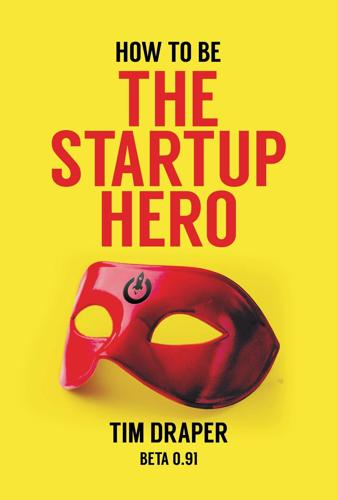
How to Be the Startup Hero: A Guide and Textbook for Entrepreneurs and Aspiring Entrepreneurs
by
Tim Draper
Published 18 Dec 2017
These people will be the Startup Heroes of tomorrow. Maybe one of them is you! Additional Content The Startup Hero podcast and video available on iTunes and YouTube Watch luminary Startup Heroes: drapertv.com Watch Startup Heroes pitch, then invest: meetthedrapers.com Check out our global venture network: drapernetwork.com Teach children to be a Startup Hero: bizworld.org Become a Startup Hero: draperuniversity.com Pitch your startup, hero: draper.vc Startup Hero Assessment Do You Have What It Takes to Be a Startup Hero Entrepreneur? What is your Startup Hero potential? Take this assessment to find out.
…
This bold girl went on to explain her plan to build a business that would make the healthcare system work better. She planned to start with a blood test that took very little blood. She called the company Theranos, a combination of the words “therapy” and “diagnosis.” I liked her passion so much I committed a $1 million investment at about a $10 million valuation. Theranos operated in stealth mode for nearly 10 years while she developed the “nanotainer,” a microfluidic device that takes two drops of blood for testing; and the “minilab,” an integrated device and software platform with the potential capabilities of a full-scale clinical laboratory. People would be able to monitor their own health because the results of the tests would be stored in the cloud, and people could see and determine action based on the changes in their blood.
…
I will take care of myself I will fail and fail again until I succeed I will explore the world with gusto and enthusiasm I will treat people well I will make short-term sacrifices for long-term success I will pursue fairness, openness, health and fun with all that I encounter…mostly fun I will keep my word I will try my best to make reparations for my digressions The Superhero Clause The Evangelism Clause The Black Swan Clause Book Two: The Startup Hero’s Workbook Before You Write Your Business Plan A Startup Hero’s Business Plan Growing Your Startup Financing Your Startup Marketing Your Startup The Hero Startup Pitch IPOs Final Note: The Riskmaster Benediction Additional Startup Hero Content Startup Hero Assessment Acknowledgements Hero Definitions Hero: Someone who takes long odds at an extraordinary outcome. Someone who runs into the fire to save people rather than running out to save themselves.
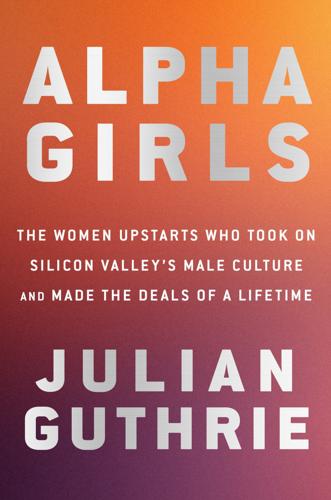
Alpha Girls: The Women Upstarts Who Took on Silicon Valley's Male Culture and Made the Deals of a Lifetime
by
Julian Guthrie
Published 15 Nov 2019
But in private, the undaunted girl who loved her hammer and nails, the intrepid young woman in her flamboyant costumes at the Stanford computer center, the competent builder of companies, was scared. THERESIA In the spring of 2005, the Stanford business school students were still developing their business plan in stealth mode when Theresia met with them as part of her quest to find transformative new vertical search companies. The graduate students were trying to keep a low profile, knowing that their start-up was going to rankle the second most powerful lobbying group in America—the National Association of Realtors. Sami Inkinen and Pete Flint had spent most of their second year of business school learning everything they could about the real estate industry.
…
Now all she had to do was convince some venture capitalists that she was right—that e-commerce was about to change the world. THERESIA “Are you kidding me? Joining a start-up is riskier than starting a restaurant!” That was the reaction that Theresia got from her boss when she announced that she was leaving her corporate post at Bain consulting in San Francisco to work for Release Software, a new start-up in Silicon Valley. In the past, Theresia had always done everything by the book, but now she was sure she had seen the future—and it was digital. At Release, with her meager start-up wages, Theresia had to make some adjustments, notably in where and how she lived. She soon joined the ranks of couch-surfing entrepreneurs.
…
And that’s exactly what she did in her new job at the start-up Release, which had office space on the second floor of an old building called Casa Mills in Menlo Park. The company’s goal was to become the largest software distributor over the Internet. The building at 250 Middlefield Road frequently had brownouts, and a good Internet connection was as elusive as sleep. Theresia and the gang resorted to drilling a hole in the floor to siphon power for their servers from their neighbors below, who had the MacDaddy of high-speed Internet, T1 lines carrying digital data at 1.544 Mbps. The guys working below, who had an Internet start-up called Four11, needed all the computing power they could get.
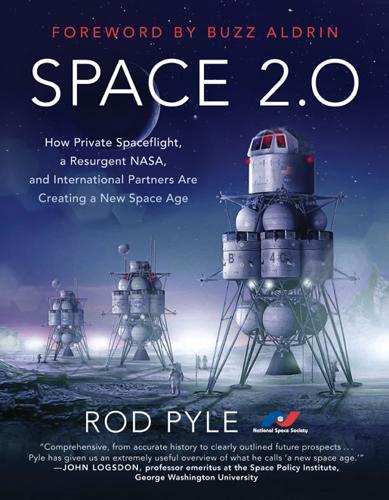
Space 2.0
by
Rod Pyle
Published 2 Jan 2019
Subsequently, Blue Origin has submitted a bid to supply large rocket engines to ULA for the Vulcan (ULA’s replacement for the Delta IV and Atlas V—more about that just ahead), and won another $45 million contract with NASA to provide suborbital research flights, but it’s otherwise operating in financial semi-stealth mode. The suborbital New Shepard has been entirely self-funded, as is the follow-on and much larger New Glenn heavy booster. It’s an impressive and daring path to tread. Blue Origin’s planned New Glenn rocket will compete with the Falcon Heavy and should be flying by the early 2020s. Image credit: Blue Origin Bezos has made his billions with Amazon.com, but he has had his eyes on the stars since his youth.
…
Metamaterials—special chips that can “tune” the direction of incoming signals—allow Kymeta to use lightweight, flat receivers to accomplish the same tasks that previously required steered parabolic dishes. There are hundreds of other small enterprises jumping into the commercial space sector with unique high-tech products. Some are well-funded start-ups, while others are being created in university labs and garage workshops. Some have small NASA contracts, but most are operating on their own dime. NASA has long worked with small vendors, but it’s diversifying how it does so. The agency supports small start-ups and university students with “hackathons” to promote new software and technology designs. Much of this support takes the form of competitions. One example is the “Space Poop Challenge,” which, despite its whimsical name, sought to address a very real problem in spaceflight: the elimination of waste from the human body.
…
What involvement the Chinese military might have in Link Space remains unclear, but the company has publicly positioned itself as a private start-up. The cost to launch a newly manufactured New Line rocket would be less than $5 million, and probably much less once it has been recycled. The company has flown more than 200 tests of smaller rockets that were capable of hovering and landing, in the same way that SpaceX gained experience with its own experimental flights before offering the Falcon 9 for commercial launches. Link Space expects to begin commercial service in 2020. This may be just the tip of the entrepreneurial iceberg; other Chinese start-ups are eyeing space launch and satellite markets, and are doubtless watching Link Space carefully to gauge its progress and success.

SAM: One Robot, a Dozen Engineers, and the Race to Revolutionize the Way We Build
by
Jonathan Waldman
Published 7 Jan 2020
Indeed, proceeding down that path came with risks—of the legal and branding and morale varieties—and so Ries said that following the Lean Startup approach took courage. But he argued that the path wasn’t as risky as it seemed. The fear that a big bad competitor might swoop in and steal a start-up’s idea, he said, was largely imagined. A good start-up, adept at quickly building-measuring-learning, would always outdo the competition, regardless of what they knew, because the key to success was the ability to learn fast. A head start, he figured, was of negligible value; and in any case, a company couldn’t operate in isolation forever, so it may as well give up the stealth-mode mentality and get busy learning how to learn fast.
…
Before the summer wound down, Scott did three more things: He filed a patent (Nate, Tom, and the RPI engineers’ names accompanied his on the paperwork); met with the owners of Hydro-Mobile, who steered him to the annual industry trade show called World of Concrete; and interviewed a wild Lebanese man named Rocky. He also read more start-up books: one about Google, one about Steve Jobs, one about GM’s decline, and another called The Lean Startup. Of all the entrepreneurial books he eventually read, this was the most important. Conventional wisdom, which spewed forth from places like GM and Kodak, was: Thy products shall not be released until perfect, lest we disappoint customers and harm our reputation. Eric Ries, the young Yale-educated author of The Lean Startup, argued for proceeding unconventionally. Ries, whose first two companies had failed, proposed abandoning the quest toward the perfect thing; instead, he said, CEOs should aspire to build an MVP, or minimum viable product.
…
He even cited GM and Kodak.I What stood out, though, were his own oft-repeated phrases: “learn and iterate” and the “loop of build-measure-learn.” To Ries, being a small, obscure start-up facing immeasurable uncertainty was not terrifying but glorious. Such a situation allowed for under-the-radar experimentation and the chance to test business questions quickly. Marketing could be left for later—once a company’s value was not the boss or the team but what they’d learned. These learnings he called a start-up’s “essential unit of progress.” Amassing these units, the way he saw it, was what led a company from brave start-up to humming innovation factory. Scott fell in love with the idea immediately.

Private Equity: A Memoir
by
Carrie Sun
Published 13 Feb 2024
At Carbon, Ethan was the only PM focused exclusively on venture and he had one person working directly under him. Most everyone else—partners, analysts—covered some mix of public and private companies, from start-ups in stealth mode to large companies in the S&P 500. A good business is a good business, and an IPO did not change that. When the rest of the world was becoming more specialized, Carbon was, in a way, turning more generalist. In doing so, it could better identify themes and synthesize data from disparate networks: it could bring its stock-selection skills and deep industry expertise into the start-up space; it could bring its venture knowledge—of where the disruptions might be—into the hedge fund side.
…
But I’m right, it does not matter what I think: Boone invests. Noah’s start-up helps students around the world gain admissions into elite institutions of higher learning. The values it espouses are achievement, prestige, status, merit, ambition, youth—his materials are peppered with youngest this, youngest that. Might there be more to life than getting into an Ivy League college? Katherine dropped out of Princeton; her start-up wants to widen the sources of talent to be more inclusive. Noah is trying to get everyone (that is, those who can afford his tutoring and admissions-consulting services) into Princeton. His start-up is tech-enabled. Another word for his industry: Edtech.
…
Companies used to go public at an earlier stage in their life cycles, making their hyper-growth phase accessible to the average investor. But large and larger pools of capital came rushing in, which gave start-ups an option to stay private longer, delaying their IPOs. This was often a win-win: a start-up might not want (or be ready for) the pressure of public financial reporting; private investors might get special access to the period of highest growth. Access is edge. Constraint is destiny. The loser, then, and always, was the retail investor, who most likely did not have the privilege to invest in the start-up or in the private fund. Carbon, in my view, was occupying a territory of the market to which all of the public should have access.
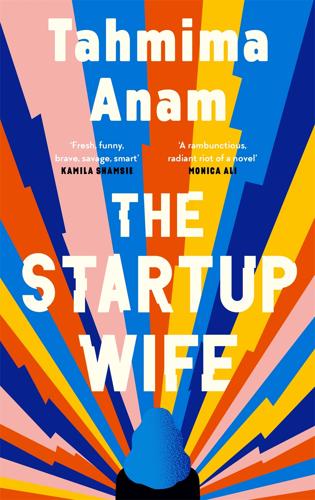
The Startup Wife
by
Tahmima Anam
Published 2 Jun 2021
Cyrus has a vision, and the WAIs are so devoted to him, they’ll follow him anywhere. I’m starting to think about other things—a mentorship program I might kick off to help young women get ahead in tech. I might even ask Cyrus if I can spend some of our WAI money on building a lab for the Empathy Module. Jules is encouraging me to stay in stealth mode. “Just let him do what he does best—talk to the brethren—and the rest of us can enjoy being mortal,” he says. Jules is also busy keeping the team steady; the talk of acquisition has made everyone a little jittery. Jules’s advice is all well and good, except I have to go home with Cyrus every night, and lately, the office Cyrus and home Cyrus are starting to sound like the same person.
…
We seem to have accidentally fallen into a happy rhythm, imposing almost nothing on each other, yet maintaining a deep kind of intimacy, a secret place full of longing, scraps of tenderness we nurture and feed, a little bonsai of love. I’m going to write a marriage guide, I think. I’ll call it The Startup Wife: How to Succeed in Business and Marriage at the Same Time. I’ll tell everyone how great it is to mix everything together—work, love, ambition, sex. Anyone who says business and pleasure don’t mix is an idiot. I can see it in Barnes & Noble, propped up on a table between How to Stay Married and Startups for Dummies. Jules’s parents, the Cabots, like to flit around the world—London, Savannah, Hong Kong—but they always spend the last few weeks of the summer in the Hamptons.
…
Li Ann invites us to sit. “You’ve heard of us, I imagine.” She smiles, managing to appear confident but not mean. Of course. Who hasn’t heard of Utopia? There are the Buzz Feed stories, What is the secretive tech incubator that boasts support from Nobel laureates, past presidents, and the elite of the startup world? The hidden camera shots taken from inside. The outlandish claims by people pretending to be Utopians who say that the labs have successfully cloned a chimpanzee and invented a pocket-size carbon capture machine that cleans the air faster than you can take a selfie. “It’s like winning the lottery,” Jules had said on the bus ride over.
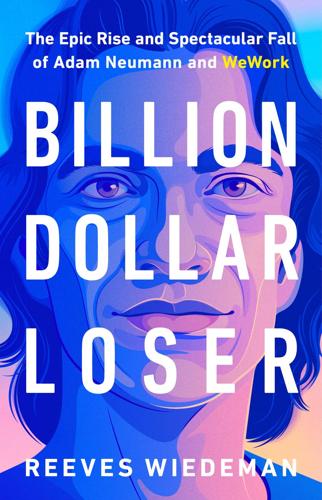
Billion Dollar Loser: The Epic Rise and Spectacular Fall of Adam Neumann and WeWork
by
Reeves Wiedeman
Published 19 Oct 2020
The Tribe School, as it was known, had seven students in a single classroom at Chabad of Tribeca. The school planned to expand into a nearby building, where WeWork had paid a premium to kick out the existing tenant, a Montessori school that had been there for more than a decade. It was supposed to launch quietly—stealth-mode kindercare, in Silicon Valley speak—until the blog picked it up and sent WeWork’s executive team scrambling to figure out what it meant to suddenly be operating an elementary school. The idea had come up before. In 2016, an executive assistant at WeWork who was a new mother proposed offering an affordable corporate day care for employees and members: WeKids.
…
Being more than an office was core to how Adam and Miguel wanted to position their company. WeWork would present an alternative to the American dream, which no longer meant decades spent climbing a corporate ladder. The post-recession path to riches involved founding a start-up and disrupting the way things had been done. WeWork would provide a haven for those making this shift: it was a start-up begetting start-ups, a place where young entrepreneurs could build a collapsible-heel prototype, then move on if it failed without a long-term lease weighing them down. Who knew how much space a company would need in five months, let alone five years?
…
I had spent the latter half of the 2010s as a staff writer at New York magazine, exploring the increasingly warped start-up economy. I wrote about a rap lyrics website aspiring to “annotate the internet”; about Vice, a punk magazine looking to become “the new CNN”; and about Uber, the ride-sharing company that insisted it was much more than that. I visited Uber’s headquarters in the spring of 2017, just as Travis Kalanick was being chastened for recklessness in the rabid pursuit of global domination. It felt as if most start-ups could think of no other worthy goal, and now an office-management company in New York City was deploying the same bravado as the new class of world-altering tech companies emerging from Silicon Valley.

Robot Futures
by
Illah Reza Nourbakhsh
Published 1 Mar 2013
A computer vision system will easily detect your gaze direction, how you walk, where you linger, what products you touch and try on, the exact set of places your eyes settle on during your entire time in and around a store, how excited you are as you talk to your friend about items, what expression your face makes when you turn the price tag over, what you buy, the cadence of your steps as you walk away, how old you look, and what your companions look like. In November 2011, Euclid Elements emerged from stealth mode as a startup company dedicated to extending analytics from the Internet to physical stores (Perez 2011). The company’s press release describes real-world equivalents of landing page and click-through statistics for the brick-and-mortar store: foot traffic, retention rates, dwell times, window conversion rates, and customer loyalty.
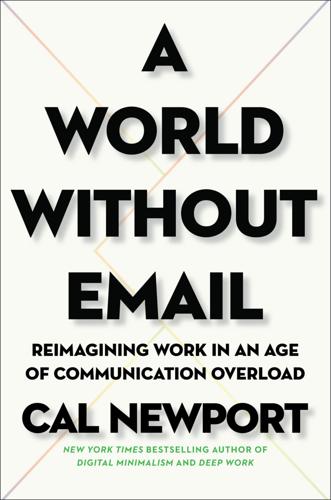
A World Without Email: Reimagining Work in an Age of Communication Overload
by
Cal Newport
Published 2 Mar 2021
But guided by Shannon’s fundamental insight, they embrace the central idea that sometimes a little extra complexity can unlock a lot more performance. Meeting Scheduling Protocols In 2016, I spoke on a panel at a business event. One of my fellow panelists was a New York–based technology entrepreneur named Dennis Mortensen. As I learned when we later chatted, he was the CEO of a start-up that was in the process of leaving stealth mode and taking on beta testers. It was called x.ai, and its product deployed cutting-edge artificial intelligence technology to tackle a mundane task: scheduling meetings. In its original iteration, x.ai implemented a digital agent named Amy. When you needed to schedule a meeting with someone over email, you would cc a special email address connected to Amy and then, in natural text, ask the agent to help set up the gathering.
…
When we shift these endeavors into the office setting, however, where retreating to a seedy hotel with a bottle of sherry would likely be frowned upon by even the most dedicated productivity hacker, the importance of the connection between focus and value begins to dissipate. Not long ago, for example, I heard from an engineer who wrote technical white papers for a Silicon Valley start-up. These papers were complicated to pull together but important for the company’s marketing efforts. As the engineer explained to me, he was having a hard time executing his job because the start-up embraced a hyperactive hive mind workflow. “If you didn’t respond quickly to a Slack message,” he said, “you were, ironically, considered to be slacking off.” Inspired by some of my writing on these issues, the engineer set up a meeting with his CEO.
…
If you’re an employee of a company that still worships at the altar of the hyperactive hive mind, for example, there are only so many changes you can make on your own without infuriating your coworkers. Some care will therefore be needed in picking and choosing the strategies you implement. (I attempt to help you in this selection by highlighting examples of how the various principles have applied in the individual context.) Similarly, if you’re a start-up entrepreneur, you’re better able to experiment with radical new work processes than if you’re the CEO of a large company. But I firmly believe that any individual or organization who starts to think critically about the hyperactive hive mind workflow, then systematically replaces elements of it with processes that are more compatible with the realities of the human brain, will generate a substantial competitive edge.

McMindfulness: How Mindfulness Became the New Capitalist Spirituality
by
Ronald Purser
Published 8 Jul 2019
Kabat-Zinn’s intentional retention of Buddhist-inflected language — such as “lineage” — signals his guru-like status in authorizing followers and transmitting mindfulness. Coming Out of the Buddhist Closet: MBSR is the Dharma? Now that MBSR has moved beyond its start-up phase to entrepreneurial maturity and widespread acceptance, the Center for Mindfulness (as the Stress Reduction Clinic is now known) is no longer in stealth mode. Deflecting accusations that MBSR is dumbed-down dharma, its website declares: “MBSR is a vehicle for embodying and transmitting the dharma in a wholly secular and universal idiom. It is a recontextualizing of dharma, not a decontextualizing of it.”
…
“It’s all about having the right language!” he explained. Unfortunately, I had a strong allergic reaction to this artifact. It droned on about “translation” — suggesting his work selling mindfulness was equivalent to being a translator of the dharma. “It’s about creating a compelling brand!” he said. So that’s why he called his startup Wisdom Labs. Sounds pretty cool, doesn’t it? Getting some of that sexy, scientifically verified, modern Wisdom! Impressive. “Mindfulness is not Buddhist,” Fernandez went on. His animated manner made it seem like he wanted to add a “Damn it!” but mindfully refrained. Then he backpedaled slightly.
…
Horace Liveright, 1928. 6 https://www.seanfeitoakes.com/mindfulness-the-googleway-well-intentioned-saffron-washing/ 7 https://www.publicintegrity.org/2016/02/16/19297/ford-spent-40-million-reshape-asbestos-science 8 https://jalopnik.com/lawsuit-accuses-ford-of-cheating-diesel-emissions-on-50-1821962910 9 https://www.businessinsider.com/marc-benioff-salesforce-com-chief-has-pulled-some-crazy-stunts-2012-3 10 https://www.fastcompany.com/40433618/not-so-zen-atheadspace-as-layoffs-hit-the-company 11 Headspace factsheet: https://www.dropbox.com/sh/vntknlkvkzg98rp/AABIqR-M-IhhCSAcWHXlqQ7na/HS%20Fact%20Sheet?dl=0&preview=Headspace+Fact+Sheet+-+November+2018.pdf&subfolder_nav_tracking=1 12 https://www.forbes.com/sites/kathleenchaykowski/2017/01/08/meet-headspace-the-app-that-made-meditation-a-250-million-business/#713227fc1f1b 13 https://techcrunch.com/2017/09/02/funding-your-bliss-mindfulness-startups-scale-up/ 14 https://ebmh.bmj.com/content/18/4/97 15 https://www.wired.co.uk/article/mental-health-apps#_=_ 16 https://www.ft.com/content/9b8c0c6e-e805-11e6-967bc88452263daf 17 George Ritzer, The McDonaldization of Society. Sage Publications, 2007. chapter Ten: Mindful Elites 1 Janice Marturano, Finding the Space to Lead: A Practical Guide to Mindful Leadership.
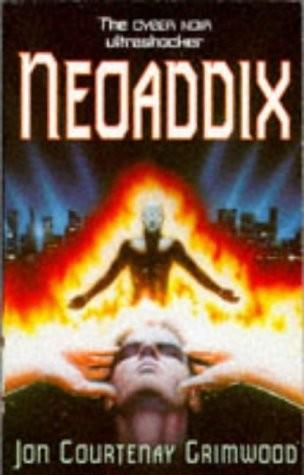
NeoAddix
by
Jon Courtenay Grimwood
Published 16 Jan 1997
‘CySat UK would have put him on permanent contract years ago, but for that the man needed to pass a positive vetting and we wouldn’t give him clearance… This guy was a typical do-gooder, GPeace, Pax, Amnesty2. We were about to pick him up when he disappeared.’ ‘Why? Clare asked simply. ‘Because this was a man in a hurry to download his Zeiss eyecam without going through the usual channels at CySat. A man who used the terms ‘M-wave invisibility’ and ‘human stealth mode’ with quite reckless abandon.’ Ratso sighed, with the weariness of a man who spends too much time round politicians. ‘Just when we got a make on Alex, word came back from Westminster that we’d got it wrong. To leave Alex alone. Well, the guy covering the case wasn’t having it, so he kept going.’
…
And Lady Clare and her pet junkie were to be given whatever facilities they required - theater or laboratory - to make over Alex Gibson in any form whatsoever that Lady Clare chose. In return, Lady Clare would deliver to the Church the ultimate patent, invisibility, which the Bishop-Auditor was already referring to as ‘human stealth mode’. That it would be delivered was not open to question, according to lady Clare. It was only the when and how that were still open to negotiation. The wall screen in the shower was still giving its simplified This-is-the-Geneticists speech for visitors. Volubilis knew it by heart, he’d even written some of it, but the breezy optimism and sly skating over of awkward truths still amused him.
…
Makai nodded, and everything blurred. When the Cy refocused, they were hanging above a digital simulacrum of Paris, and far below them wired into the insignificant data-path of a minor tourist facility was a extra node. ‘Mayer lied,’ Alex said with certainty. ‘You aren’t the computer at all, you’re its start-up program. That box of Lady Clare’s is the quantum equivalent of a highly-sophisticated BIOS, if that isn’t too big a contradiction in terms. The real MAKAI is out there, broken up and buried under enough high-grade reflective to sink the Titanic. And you know what else..?’ Makai stayed silent, but Alex could see from the way his outline firmed that he was busy listening, assimilating and taking new data on board.
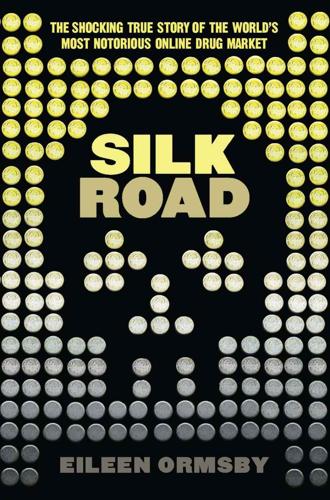
Silk Road
by
Eileen Ormsby
Published 1 Nov 2014
‘It is quite surreal having more than half a dozen people read one of my papers,’ he quipped when questioned about his sudden fame. Christin’s paper became the subject of much debate. He was careful to note that he was not working with the full range of data; for example, any vendors who were operating in ‘stealth’ mode (i.e. not visible to anyone other than selected buyers) or custom listings for specific buyers were not included in his trawled data. As such, his work could only represent an estimate, and not actual verified volumes of sales – but he believed the estimates to be on the conservative side. Christin’s paper was the most reliable indicator to date of the sort of volume Silk Road was turning over and the kind of profits the Dread Pirate Roberts might be enjoying.
…
Enter the Dread Pirate Roberts. IT pro needed for venture-backed bitcoin startup Hello, sorry if there is another thread for this kind of post, but I couldn’t find one. I’m looking for the best and brightest IT pro in the bitcoin community to be the lead developer in a venture-backed bitcoin startup company. The ideal candidate would have at least several years of web application development experience, having built applications from the ground up. A solid understanding of oop [object-oriented programming] and software architecture is a must. Experience in a start-up environment is a plus, or just being super hard working, self-motivated, and creative.
…
They claimed it was clear that when the address was dissipated, the resulting funds were not sent en masse to any major services. They traced the coins into a number of services, mainly exchanges, but again the trail went cold. Dread Pirate Roberts had found somewhere else to store his bitcoins. But now the world had some idea of the magnitude of the little start-up Silk Road. In August 2012, unassuming security professor Nicolas Christin quietly released an academic paper in which he described trawling the available data of Silk Road. The paper, ‘Traveling the Silk Road: A measurement analysis of a large anonymous online marketplace’, created a convincing picture of the site’s sales activity, which Christin conservatively estimated at $22 million per year and growing exponentially.
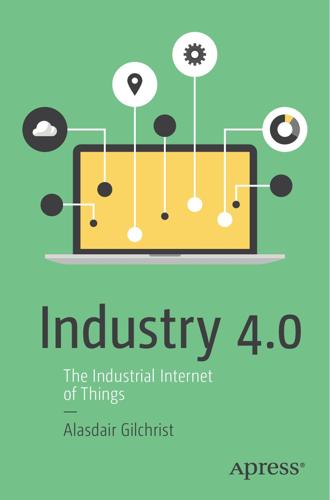
Industry 4.0: The Industrial Internet of Things
by
Alasdair Gilchrist
Published 27 Jun 2016
The system can also use multi-cast queries to send commands to endnodes and have them respond only if they are a group member; for instance, if they have a temperature sensor or meet a specific operational condition such as endnodes that have a temperature sensor and have a reading greater than 10c and less than 13c. Industry 4.0 Commands and responses are encrypted using AES-128 encryption but there is also a “stealth mode” whereby endnodes respond only to pre-authenticated devices. Name of Standard Dash7 Alliance Protocol 1.0 Frequency band 433, 868, 915MHz ISM/SRD Channel width 25KHz or 200KHz Range 0 – 5 km Endnode transmit power Depending on FCC/ETSI regulations Packet size 256 bytes max/packet Uplink data rate 9.6kb/s, 55.55 kbps, or 166.667 kb/s Downlink data rate 9.6 kb/s, 55.55 kbps, or 166.667 kb/s Devices per access point N/A (connectionless communication) Topology node-to-node, star, tree Endnode roaming allowed Yes Ingénue RPMA The RPMA LP-WAN provides developers with transceiver modules that can connect to a network of access points, which form a global network that Ingénue and its partners are constructing.
…
In essence, cloud computing is still following Amazon’s early pay-as-you-use formula, which makes cloud computing financially attractive to SMEs (small to medium enterprises), as the costs of running a data center and dedicated infrastructure both IT and networks can be crippling. Consequently, many cash-strapped businesses, for example start-ups, elected to move their development and application platforms to the cloud, as they only paid for the resources they used. When these start-ups became successful, and there were a few hugely successful companies, they remained on the cloud due to the same financial benefits—no vast capital and operational expenditure to build and run their own data centers—but also because the cloud offered much more. 47 48 Chapter 3 |TheTechnical and Business Innovators of the Industrial Internet In order to understand why the cloud is so attractive to business, look at the major cloud providers’ business model.
…
There are several problems here—one is the physical layer technology that is adopted, for example wired or wireless. Wireless technology—radio communications—must meet a required standard for the deployment. After all, it is of little use producing a startup product that uses a non-standard interface in the targeted industry. This is where standards are so important. Now standards are hugely important, but very dry, so we will only cover the main industry standards that any industry specific product should comply with. An example of this is that a startup developing a great product must adhere to existing relevant industrial standards or it will never be commercially accepted. Industry decision-makers are very risk averse and are unlikely to adopt a solution that does not meet existing industry standards.

This Is for Everyone: The Captivating Memoir From the Inventor of the World Wide Web
by
Tim Berners-Lee
Published 8 Sep 2025
You have a lot of apps on your phone, and you trust each app to access a certain slice of data. What if you could trust your apps to share data between themselves? They’d be much more effective this way! At Inrupt, the plan is to build enterprise-grade servers for industrial users of Solid and see what develops. The first organization to contact Inrupt when we were in stealth mode was the UK’s National Health Service in Manchester. They produced a proof-of-concept system that was able to write patient data directly to an individual patient’s pod. In such a pod, we could then imagine combining that patient data with fitness-tracker data, from a Fitbit or a smartwatch – and with your consent, you could share the results with trusted parties.
…
He and his wife Karalyn would head back to see family in deep Wales, along the westernmost bit of the Pembrokeshire coast, and sometimes Jane and I would tag along in the back of their Mini. The winding road along the Welsh coast was beautiful country, dotted with ancient villages and pubs. After a couple of years at Plessey, Kevin called and said he was looking for help. He had joined D.G. Nash, a three-person start-up focused on dot-matrix printers, located in an industrial estate in Dorset, a twenty-minute drive from the Plessey offices. I would soon join as well. The dot-matrix printer was a device which was made entirely out of hardware. A bit like my homemade terminal, the printer made letter patterns on the paper by using a hardware table of letter shapes, but now it was crying out, like so many things at that time, to have the logic board ripped out and replaced by a microprocessor system.
…
Hakon was far ahead of his time with CSS. It ended up being a cornerstone technology of the web, and when mobile devices later arrived, CSS made the transition smooth. Inevitably, Hakon was a man of many interests, and we couldn’t keep him for ever. In 1998, he left W3C to work for the Opera browser start-up; later, inspired by Thor Heyerdahl, he sailed across the Pacific Ocean in a raft. Then he got into orchard-keeping, and in 2017 won the coveted award for Norway’s best apple juice. W3C published the first CSS standard in 1996 and has maintained and updated it ever since. Hakon’s work developed new technical ideas and delivered them to the broadest possible range of end users.
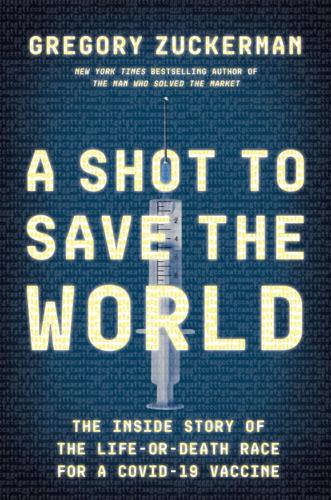
A Shot to Save the World: The Inside Story of the Life-Or-Death Race for a COVID-19 Vaccine
by
Gregory Zuckerman
Published 25 Oct 2021
Moderna moved into new office space on First Street in Cambridge, sharing the building with the Cambridge School of Culinary Arts. It was an incongruous pairing. On their way in, bookish scientists sometimes passed tattooed would-be chefs smoking cigarettes and discussing veal cordon bleu. Even if they wanted to stop and chat, the Moderna team had been trained to avoid conversations. The company was still in stealth mode. It didn’t have a website, wouldn’t talk to the press, and forced employees to sign confidentiality agreements preventing them from sharing information, even with spouses.4 The researchers were accumulating valuable data, but Afeyan and Bancel didn’t want it published in scientific journals, as most other biotechs did.
…
“We’re going to be the company that can respond to a crisis,” he told staffers. But outside scientists, investors, and some journalists were sure Bancel was exaggerating his company’s potential. A few years earlier, a respected scientific publication had even compared Bancel to Elizabeth Holmes, the disgraced chief executive of blood-testing start-up Theranos, who also had an easy way with investors and a predilection for black turtlenecks. By the end of 2019, the sniping had taken a toll. Moderna’s shares were 15 percent below their own IPO price from a year earlier, making it hard for Bancel to raise new money. Some investors were upset the company had shifted its focus to vaccines, a crowded and challenging field with limited profit potential.
…
* * * • • • When Smith approached his new office on his first day of work, he noticed MicroGeneSys was in a building that also housed a furniture warehouse and a helicopter-parts supplier, humdrum surroundings that didn’t suggest any kind of medical revolution might be in the offing.1 Inside, though, Volvovitz brimmed with determination to shake up the scientific world. He already had made a decision that would transform his fledgling start-up into one of America’s highest-profile companies. The AIDS epidemic was worsening. More than one million Americans had been infected with HIV, more than forty thousand had developed the disease, and AIDS had claimed more than sixteen thousand lives. Finally, money was flowing to scientists working to stem the crisis.
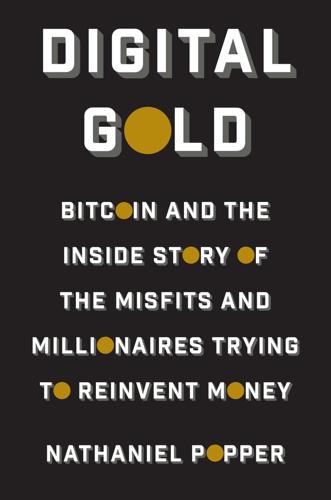
Digital Gold: Bitcoin and the Inside Story of the Misfits and Millionaires Trying to Reinvent Money
by
Nathaniel Popper
Published 18 May 2015
Nick had made a brief statement, by e-mail, to deny that he was Satoshi, but that didn’t quiet the speculation. At Morehead’s gathering, people spoke in hushed tones about things they’d overheard Nick saying. Nick showed up at Morehead’s private gathering because a few months earlier he had quietly joined a cryptocurrency startup that was operating in stealth mode. The startup, Vaurum, was based a few blocks from Wences’s office in Palo Alto and focused on the task of matching up big holders of Bitcoin wanting to buy and sell. Nick, though, had joined Vaurum to do more sophisticated work on so-called smart contracts, which would allow people to record their ownership of a house or car into the blockchain, and transfer that ownership with the use of a private key, something Nick had been thinking about for over a decade.
…
There were already signs that Lemon was not getting the kind of pickup that Wences had imagined. And, as with all startups, it required more time from its chief executive than any one person had in a day. This was Wences’s twelfth startup, depending on how you counted, and his wife once again felt like a single mother for their three children. Wences and Belle had already agreed that Lemon would be his last startup. These difficulties played into larger insecurities that Wences had managed to sweep under the carpet until now. For all the money his past startups had made him, none had quite achieved their grand original goals. Back in Argentina, he had hoped that his first company, Patagon, would provide a way to extend financial services to the hundreds of millions of South Americans without a basic bank.
…
He already had many successes under his belt, as was evident from his estate in the rolling hills above Palo Alto, with two homes, a swimming pool, tennis courts, and views down to the bay. In addition to the tens of millions of dollars Wences had earned from selling past startups, he had been surprised to discover that he also had a knack for picking winning investments in his friends’ companies. But he had recently been hitting up against failure for the first time. Lemon, his current startup, had grown out of the decline of his previous startup, Bling Nation, and many of Wences’s friends wondered whether Lemon was the result of the kind of passion necessary to succeed in Silicon Valley or was just Wences’s attempt to prove that the failure of Bling Nation had been an anomaly.
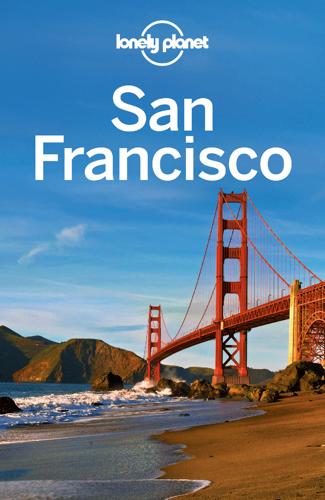
San Francisco
by
Lonely Planet
Lunch Za (Click here ) features cornmeal-crusted pizza and Anchor Steam beer. The Piers ( Click here ) Cover the waterfront, beginning with newly restored underwater murals and mosaics at Aquatic Park Bathhouse . You can save the world from Space Invaders at Musée Mécanique , or enter underwater stealth mode inside a real WWII submarine: USS Pampanito . Watch sea lions cavort at Pier 39 , then follow your rumbling stomach to the Ferry Building . Dinner Try the local oysters and Dungeness crab at the Ferry Building (Click here ). Alcatraz ( Click here ) To end the evening with shivers, don’t miss the boat for the night tour of Alcatraz .
…
USS Pampanito The USS Pampanito Offline map Google map ( www.maritime.org/pamphome.htm; Pier 45; adult/child/family $9/5/20; 9am-8pm Thu-Tue, to 6pm Wed; Powell-Hyde) , a WWII-era US navy submarine, completed six wartime patrols, sunk six Japanese ships, battled three others and lived to tell the tale. Submariners’ stories of tense moments in underwater stealth mode will have you holding your breath – beware, claustrophobics – and all those cool brass knobs and mysterious hydraulic valves make 21st-century technology seem overrated. What the…? Keep your eyes peeled for the notorious ‘Bushman’ of Pier 39, who lurks behind branches of eucalyptus trees, then leaps out and shouts ‘Ugga bugga!’
…
But this turf proved fertile ground for wild ideas: as a plaque around the corner indicates, 601 3rd St was the birthplace of Jack London , best-selling author of The Call of the Wild, White Fang and other Wild West adventure stories. After WWII, Filipino American war veterans formed a quiet community here – at least until dot-com HQs suddenly moved in and out of the neighborhood. South Park offices weren’t vacant for long before Web 2.0 moved in, including a scrappy start-up with an outlandish notion that soon everyone would be communicating in online haiku. Twitter has since moved its operations and 200 million users Downtown. Crown Point Press Art Gallery Offline map Google map ( 415-974-6273; www.crownpoint.com; 20 Hawthorne St; 10am-6pm Mon-Sat; Mission St, Montgomery) Bet you didn’t think anyone could capture Chuck Close’s giant portraits, Wayne Thiebaud’s Pop Art pastries or Australian Aboriginal artist Dorothy Napangardi’s dreamings on paper.

San Francisco
by
Lonely Planet
Lunch Za (Click here ) features cornmeal-crusted pizza and Anchor Steam beer. The Piers ( Click here ) Cover the waterfront, beginning with newly restored underwater murals and mosaics at Aquatic Park Bathhouse . You can save the world from Space Invaders at Musée Mécanique , or enter underwater stealth mode inside a real WWII submarine: USS Pampanito . Watch sea lions cavort at Pier 39 , then follow your rumbling stomach to the Ferry Building . Dinner Try the local oysters and Dungeness crab at the Ferry Building (Click here ). Alcatraz ( Click here ) To end the evening with shivers, don’t miss the boat for the night tour of Alcatraz .
…
USS Pampanito The USS Pampanito Offline map Google map ( www.maritime.org/pamphome.htm; Pier 45; adult/child/family $9/5/20; 9am-8pm Thu-Tue, to 6pm Wed; Powell-Hyde) , a WWII-era US navy submarine, completed six wartime patrols, sunk six Japanese ships, battled three others and lived to tell the tale. Submariners’ stories of tense moments in underwater stealth mode will have you holding your breath – beware, claustrophobics – and all those cool brass knobs and mysterious hydraulic valves make 21st-century technology seem overrated. What the…? Keep your eyes peeled for the notorious ‘Bushman’ of Pier 39, who lurks behind branches of eucalyptus trees, then leaps out and shouts ‘Ugga bugga!’
…
But this turf proved fertile ground for wild ideas: as a plaque around the corner indicates, 601 3rd St was the birthplace of Jack London , best-selling author of The Call of the Wild, White Fang and other Wild West adventure stories. After WWII, Filipino American war veterans formed a quiet community here – at least until dot-com HQs suddenly moved in and out of the neighborhood. South Park offices weren’t vacant for long before Web 2.0 moved in, including a scrappy start-up with an outlandish notion that soon everyone would be communicating in online haiku. Twitter has since moved its operations and 200 million users Downtown. Crown Point Press Art Gallery Offline map Google map ( 415-974-6273; www.crownpoint.com; 20 Hawthorne St; 10am-6pm Mon-Sat; Mission St, Montgomery) Bet you didn’t think anyone could capture Chuck Close’s giant portraits, Wayne Thiebaud’s Pop Art pastries or Australian Aboriginal artist Dorothy Napangardi’s dreamings on paper.

Rise of the Robots: Technology and the Threat of a Jobless Future
by
Martin Ford
Published 4 May 2015
Indeed, speed—in some cases measured in millionths or even billionths of a second—is so critical to algorithmic trading success that Wall Street firms have collectively invested billions of dollars to build computing facilities and communications paths designed to produce tiny speed advantages. In 2009, for example, a company called Spread Networks spent as much as $200 million to lay down a new fiber-optic cable link stretching 825 miles in a straight line from Chicago to New York. The company operated in stealth mode so as not to alert the competition even as it blasted its way through the Allegheny Mountains. When the new fiber-optic path came online, it offered a speed advantage of perhaps three or four thousandths of a second compared with existing communications routes. That was enough to allow any algorithmic trading systems employing the new route to effectively dominate their competition.
…
.* The sluggishness, however, results almost entirely from the staggering complexity of the computation required to perform this seemingly simple task. If there is one thing the history of information technology teaches, it is that this robot is going to very soon get a major speed upgrade. Indeed, engineers at Industrial Perception, Inc., the Silicon Valley start-up company that designed and built the robot, believe the machine will ultimately be able to move a box every second. That compares with a human worker’s maximum rate of a box roughly every six seconds.1 Needless to say, the robot can work continuously; it will never get tired or suffer a back injury—and it will certainly never file a worker’s compensation claim.
…
At the Rethink Robotics booth, Baxter had received Halloween training and was grasping small boxes of candy and then dropping them into pumpkin-shaped trick-or-treat buckets. There were also companies marketing components like motors, sensors, vision systems, electronic controllers, and the specialized software used to construct robots. Silicon Valley start-up Grabit Inc. demonstrated an innovative electroadhesion-powered gripper that allows robots to pick up, carry, and place nearly anything simply by employing a controlled electrostatic charge. To round things out, a global law firm with a specialized robotics practice was on hand to help employers navigate the complexities of labor, employment, and safety regulations when robots are brought in to replace, or work in close proximity to, people.
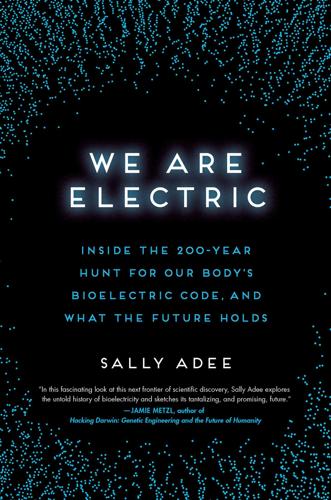
We Are Electric: Inside the 200-Year Hunt for Our Body's Bioelectric Code, and What the Future Holds
by
Sally Adee
Published 27 Feb 2023
Many are now convinced that, with these descendants of Waller’s early contraption, we are mere steps from reading the electrical activity of thoughts—and perhaps unlocking the secrets of consciousness itself. CHAPTER 5 Artificial memories and sensory implants: The hunt for the neural code In 2016, a Silicon Valley start-up called Kernel emerged from “stealth mode” to publicly announce that they were building a prosthetic memory—a brain-implantable microchip that would not only help people with traumatic brain injuries regain their ability to recall information but also eventually help the rest of us become more intelligent. The possibilities were limitless, if you believed Kernel’s founder, Bryan Johnson, who had just bet $100 million on the idea.
…
A little bit of electricity enhanced memory, mathematical skills, attention, focus, and creativity—it had even shown promise for post-traumatic stress disorder and depression. The data and the headlines had been accumulating for years, but my gonzo experience took it out of dry clinical stuff and into the “it happened to me!” category. Seeing dollar signs in the combination of intriguing lab results and growing public interest, enterprising start-ups quickly began to hawk their own commercial versions of the brain-enhancing headgear I had road-tested. These cute wearables, which would set you back a few hundred dollars, had little in common with the £10,000 gear in the Defense Department’s suitcase. Nonetheless, they were soon adopted by people looking for any bit of extra mental edge, including high-level athletes.
…
The agency was funding a prosthetic memory device for implantation in a human brain,72 but both the timeframe (too short) and the money (not enough) put human trials out of reach. Enter Bryan Johnson, who had recently pocketed $800 million from selling his online-payments company to PayPal, and was looking for something more exciting to invest in.73 When he discovered Berger’s work, Johnson immediately dumped $100 million into the new start-up, Kernel, that would bring the memory chip to reality. There seemed to be no ceiling to what you could do by tapping the neural code. If all your senses ultimately boiled down to electrical signals hitting different areas of the brain, couldn’t you make a memory from scratch by impersonating those signals?
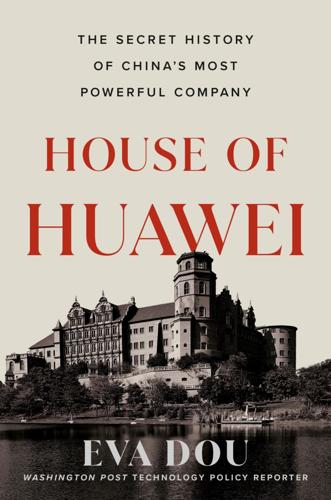
House of Huawei: The Secret History of China's Most Powerful Company
by
Eva Dou
Published 14 Jan 2025
In 1999, Little Xu told the state-run China Daily that Huawei had representative offices in Moscow, Ukraine, Brazil, Columbia, Saudi Arabia, South Africa, and Nigeria, as well as an R&D foothold in Silicon Valley. He said they had also landed sales in Bulgaria, Uzbekistan, and Kenya. Huawei’s Silicon Valley outpost—which was set up in 1993 under the cryptic name Ran Boss—had recently come out of stealth mode. In 1998, the unit reregistered as Huawei America Inc., with Huawei’s executive vice president, Zheng Baoyong, listed as the subsidiary’s president. * * * — Huawei’s fiercest rival in China was now ZTE, also based in Shenzhen. Outsiders were often surprised by the intensity of the vitriol between the two.
…
Ren was anxious to learn the secrets behind how to build a company that could last a century. There were no such examples in China, with everyone having started again from scratch after the Cultural Revolution. Silicon Valley entrepreneurs often grew through failure, launching one startup after another until they finally succeeded. But Ren was already fifty-three. His health was faltering. He knew he had only one shot to get it right. There were so many moving parts to master to turn a startup into a sturdy multinational. You needed to be able to develop new products on schedule and within budget, and the products had to work reliably. You needed supply chains that could deliver. You needed to manage far more people than you could ever learn the names of.
…
Applicants poured in from across the country—professors and engineers from Beijing to Kunming.[21] The idea of running your own company in the SEZ was exciting—and risky. Seventy-five percent of the first batch of entrepreneurs asked their state employers for temporary unpaid leave, with the option of reprising their old jobs if their startups didn’t work out.[22] Ren founded Huawei as a minjian company on September 15, 1987, with twenty-one thousand yuan pooled between himself and five investors. At first, Huawei did not have its own products. It assembled and sold simple telephone switches, fire alarms, and other products on contract for others.
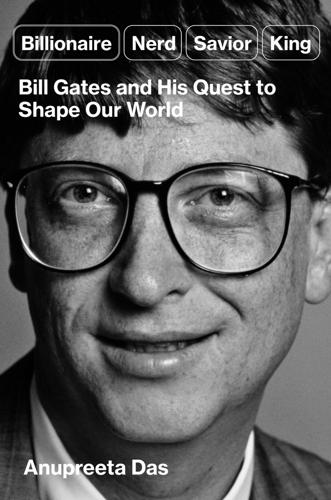
Billionaire, Nerd, Savior, King: Bill Gates and His Quest to Shape Our World
by
Anupreeta Das
Published 12 Aug 2024
Globalization is a virus’s delight, making it easy to hitch a ride from country to country on the ever-thickening flows of trade, travel, and commerce. Although public health professionals have long been concerned about pandemics, it is hard to sound the alarm on a hypothetical premise. Inevitably, the real work begins only when a deadly virus exits its stealth mode. That’s exactly what happened on January 30, 2020, when the WHO declared a global health emergency. The novel coronavirus had been first detected in Wuhan, China, one month earlier. Within two weeks, it reared its head in Thailand, followed by Japan. By the third week, the first case was reported in the United States, and soon after, the virus began popping up around the world.
…
Until rising inflation forced the Federal Reserve to change monetary policy in 2022, a long stretch of low interest rates left big investors such as pension funds searching for better yields and returns on their investments, leading them to pour money into riskier assets—along with the fear of missing out on the next big tech hit. That ended up driving so much money into venture capital funds that they were able to support loss-making start-ups for longer, allowing fledgling companies a bigger shot at success. What’s more, many of the start-up hits of two decades or so have come by repurposing traditional businesses for mobile platforms, which has been made far easier by falling costs of computing technologies—by now an almost formulaic rather than inventive approach. A fourth myth is that start-up founders are out to change the world, reshaping and reimagining our lives to benefit all of humanity. And they largely have.
…
When Silicon Valley Bank failed in March 2023, a contingent of venture capitalists and other big investors who typically want the government to stay away, called on the very same government to help save the start-up industry, because the fledgling companies are the heart and soul of the so-called innovation economy. The myths around how start-up founders are created and how they should behave are so pervasive that they have created an opportunity for signaling and subterfuge, matched only by the greed of investors who substituted so-called pattern matching for due diligence. Elizabeth Holmes, the founder of Theranos, the blood-testing start-up that collapsed in 2018, contorted herself to fit the stereotype. Dozens of commentators have remarked that Holmes, a Stanford dropout who was sentenced to eleven years in prison in late 2022 for defrauding investors in her blood-testing start-up, adopted Steve Jobs’s uniform of black turtlenecks and spoke in a deep voice to establish her authority.

The Optimist: Sam Altman, OpenAI, and the Race to Invent the Future
by
Keach Hagey
Published 19 May 2025
There was a sense that anything was possible. He’s quite optimistic—decisive and optimistic. Rarely is he skeptical about anything.” THE BOOST deal was so fundamental to Radiate’s future that they decided to rename the company. This was possible, in part, because all parties had decided to keep the company in “stealth mode,” declining to put out a press release about the Series A, knowing that it would take time to land the wireless deals and build the technology that telecoms needed. They toyed with “Flipt,” but ran into trademark issues. Facebook was just beginning to take off, and there seemed to be something lucky about having double-os: Facebook, Google, and Yahoo!
…
Louis Post-Dispatch (newspaper), 40–41 Stanford Daily, The (newspaper), 56, 63 Stanford Review, 56, 131 Stanford University AI lab at, 90 annual competition held by, 182 BASES (Business Association of Stanford Entrepreneurial Students), 60 courses at, 55, 131 Education Program for Gifted Youth, 173 electric vehicle project, 57 endowment of, 155 FroSoCo (short for Freshman Sophomore College), 55, 57 Full Moon on the Quad, 92–93 generous student leave policy, 91 program in India, 64 StartX startup accelerator, 90 Summer Research College program, 57 YC Startup School online course at, 122–23, 194, 234 startups bankruptcies, 31, 87–88, 145, 205 discrimination in, 70 the first venture-funded startup, 72 founders as kings, 6, 60, 65, 68, 70–75, 87, 95 normalization of starting a startup, 70, 150 “RIP Good Times” deck, 117, 123 Startup School online course, 122–23, 194, 234 unicorns, 150, 311 see also investing; Sequoia Capital; Y Combinator (YC) StartX, Stanford’s startup accelerator, 90 Stiegler, Marc, 140, 199–200 Stone, Zak, 76, 77, 82 “Strawberry” (o1), 284, 309 Streit, Steve, 126–28, 134 Stripe, 4, 16, 123, 125, 136, 139, 150, 152, 157–58, 172, 175–76, 189–90, 246, 251 Stross, Randall, 133 StumbleUpon, 174 Suleyman, Mustafa, 146–47, 277 Summer Founders Program and Angel Day, 62, 64, 68–70, 75–82 Summers, Larry, 294, 303 Sun Microsystems, 230 Sun Valley Resort, 228–29, 263 Sunak, Rishi, 274 Superalignment team, 284, 305–6 superhuman machine intelligence (SMI), 170 superintelligence, machine, 143, 145, 164, 167, 170, 309, 315, see also AI (artificial intelligence) Superintelligence: Paths, Dangers, Strategies (Bostrom), 5, 163–66, 167–68 Supreme Court, 26, 52 Sutskever, Ilya, 169, 178–88, 189–96, 209, 211, 217–23, 244–45, 266, 287, 282–94, 304–5, 308–10, 312–13 Swartz, Aaron, 63, 76, 81, 160n SXSW (South by Southwest), 118–19 Szabo, Nick, 142 Tallinn, Jaan, 5, 144, 168, 300–301 Talve, Susan, 43–44 Tamarine Asian fusion restaurant, Palo Alto, 92 Tan, Garry, 236 Tana, Evan, 96, 102, 121 Tang, Nini, 95–96 taxes, 22, 34–35, 53, 206, 256 Tay the chatbot, 270 Taylor, Bret, 293 Teach Yourself Visual Basic in 24 Hours, 56 “teach-ins,” 94 tech bros cosmic conversations of, 147, 260, 314–15 hackers/hacking, 3, 57, 63, 68–70, 160n, 162 love of Burning Man, 1, 198–99 love of cars, 26, 51 as mostly college drop-outs, 62, 88, 91–92, 96, 108, 113, 124, 132, 175, 179, 217–18 racism among, 164–65 sci-fi, 3, 43, 47, 140, 199–200, 214, 220, 307–8 space colonization, 144, 147, 170–71 techno-utopianism among, 205, 256–57 WhatsApp group of tech CEOs, 289 wrestling among the, 109 see also cryptocurrency tech industry Big Tech companies, 182, 185, 197, 299, 308 dot-com bubble of the late 1990s, 73, 87, 93 lobbying by the, 109, 144, 179, 274, 292, 300–301 the massive valuations of tech companies, 71, 73, 138–40, 152, 290 nanotechnology, 144, 164 semiconductor industry, 72–73, 132, 298 think tanks in the, 142, 144, 267, 299–300 “women in tech,” 42, 70, 203, 252, 271 see also innovation; software development; startups TechCrunch (news site), 161, 259 technological progress, see innovation techno-utopianism, 205, 256–57 Teespring T-shirt-making startup, 156 Tegmark, Max, 145, 168–69, 208 telepresence, 210 Teller, Sam, 171 Temple Israel, 24, 25 Terminator film franchise, 200 Tesla, 153, 167, 194, 223–26, 234, 255 Test of Time Award, 305 TextPayMe, 82 The Game (rapper), 102 “TheFacebook,” 60, see Facebook Theranos, 108 Thiel, Peter, 1–7, 10, 16–17, 125, 134–48 contributions to Trump presidential campaigns, 203–4 data-mining company, 217 Facebook and, 131, 204 Founders Fund venture firm, 2, 6, 132, 139, 147, 226 founding of the conservative Stanford Review, 56, 131 From Zero to One (with Masters), 132, 230 Halcyon Molecular, 257–59 Helion Energy nuclear fusion startup, 13, 136, 207, 259, 280, 298 his “Founders Fund” venture firm, 2, 6, 132, 139, 147, 226 Inflection AI, 277 PayPal, 93, 125, 131, 136, 140, 147, 161, 171 personal beef with Gawker Media, 137, 204–5 the pessimistic contrarianism of, 4, 131–33, 137–38, 204 Saudi Arabia and, 231–32 Thiel Fellowships, 132, 178 think tanks, 142, 144, 267, 299–300 Thole, Craig, 103 Thorpe, Meridith, 46 thought leadership, 89 Three Mile Island nuclear plant, Harrisburg, PA, 135 Thrive Capital, 161, 290, 310 Thrun, Sebastian, 144 Time magazine, 1, 112 Time Warner, 229 Tivo, 121 Tokyo, 79 Toner, Helen, 241–42, 266–67, 276–79, 282–88, 291, 292, 299, 309 Tools for Humanity, 256 Torres, Émile, 164 Track Trump website, 204 trademark issues, 101 transcendentalism, 46 “transformer paper, the,” 218–19, 270, see also AI research/training transhumanism, 143–45, 165, 166, 170 Trapp, Shel, 22, 35 Traynor, Bill, 35 Tripadvisor, 80 Trump, Donald, 40, 201, 203–4, 208, 296, 313 Tsai, Tommy, 96, 113, 114 Tulyasathien, Charnsin, 110 Tuna, Cari, 212 Turing, Alan, 173–74, 295 Turing Award, 142 Twitch, 82, 157, 292–93 Twitter, 118, 158, 169, 246–47, 261, 270, 281 Uber, 231 “Unified Theory of VC Suckage, A,” 72–73 United Arab Emirates (UAE), 281, 298, 310, 313 United Nations Moon Agreement of 1979, 144 United Slate, The (online platform), 206–7 United States during the AIDS crisis, 33, 43, 49 Biden administration’s AI policies, 232, 267, 277, 299–300 Defense Advanced Research Projects Agency (DARPA), 140, 196 Democratic Party, 21, 204, 207–8, 234, 296 Department of Commerce, 273, 277, 299, 301 Department of Defense, 299 Department of Energy, 196 Department of Homeland Security, 299 Department of Housing and Urban Development (HUD) redevelopment projects, 35 Federal Communications Commission (FCC), 59, 106 Federal Trade Commission, 285 the frontier in American history, 153 Government Accountability Office, 300 during the Great Depression, 24 Intelligence Advanced Research Projects Activity (IARPA), 267 investment blacklists from the, 231 loss of technological mojo since the 1960s, 135 Medicare for All, 206 NASA, 132–33 National Security Council, 299, 301 post–World War II industrial boom, 72 Supreme Court, 26, 52 taxes, 22, 34–35, 53, 206, 256 US Army, 24, 27n, 32 see also US Congress universal basic income (UBI), 12–14, 194, 205, 256 Universe project, a general AI agent, 191–93 University College London’s Gatsby Computational Neuroscience Unit, 145 University of California, Berkeley, 94, 111, 122–23, 167, 178, 194, 234, 277, 305 University of Virginia retracted gang rape allegations, 204 Upright Citizens Brigade, 228 US Congress, 301, 309 CHIPS and Science Act, 298 Computer Fraud and Abuse Act, 68 Congressional Internet Caucus, 106 House of Representatives, 34, 106 law on location tracking on mobile phones, 58–59 Senate, 2–3, 5, 273, 296–97, 300, 309–10 user experience, 79, 119, 195, 254 average revenue per user, 79 churn rates, 105 content moderation, 254 see also chatbots utilitarianism, 2, 143, 211 “utilons,” 212 Uygur population in China, 231 Valentine, Don, 87, 112–14 Valleywag (blog), 137, 205 “value-lock,” 252 Valve, 215 Venture Beat (news site), 117 venture capital (VCs), 6–7, 8, 12, 60–62, 66 “aligning our incentives,” 256 Andreessen Horowitz, 155, 158, 161, 257 deal flow, 88, 95, 124 history of, 72–73 Khosla Ventures, 230, 235, 257 Kleiner Perkins, 162, 230 Matrix Partners, 90 Mithril Capital, 136 Peter Thiel’s Founders Fund, 2, 6, 132, 139, 147, 226 on Sand Hill Road, Palo Alto, 79, 85, 93, 116–17, 158, 177 why they suck, 72–75, 77 see also investing; Sequoia Capital; startups; Y Combinator (YC) Verbling video chat language learning service, 138 Verge, The (news site), 272 Verizon, 62, 100, 104–5, 110, 119 Viaweb, 68, 70, 73–74 Vice News Tonight, 205–6 Victor, Bret, 197 video games AI Dungeon, 247–48, 254–55 Atari, 87, 147, 165, 190 Breakout, 147 Dota 2, 215–18, 221–22, 242, 284 Halo 3, 95, 109 Resident Evil, 97 The Sims, 97 Warcraft III: Reign of Chaos, 215 Viendo, 60, 61, 63–65, 74, 76 Viewpoints Research Institute, 198 Vinge, Vernor, 140, 145, 168 viruses, computer, 154, 200 viruses, Covid-19, 248–50 Visual Basic language, 56 Visual Studio development environment, 262 Vivarium Project, 209–10 VotePlz voter registration app, 203–4 “Voting with Your Feet: An Investigative Study of the Relationship Between Place Visit Behavior and Preference” (Potter and Howard), 111 Vox (news site), 306 Wall Street Journal, The, 7, 10–12, 17, 42, 57, 105, 124, 212, 229–32, 298 “walled garden,” 110 Walmart, 126, 133 Walton, Nick, 246–47, 254–55 Warcraft III: Reign of Chaos (video game), 215 Washington, Harold, 21–22, 33–34, 37 Washington Post, The (newspaper), 232, 301 “waterfall” method of software development, 126 Watters, Nathan, 50–51, 201 We Are the Nerds (Lagorio-Chafkin), 161 WebGPT, 265 WebMind stock market trend prediction software, 145 WebText, 241, 244 Weebly, 157 Weiden, David, 89–90, 103–4, 108, 230 Weigend, Andreas, 90 Weil, Elizabeth, 281 Welinder, Peter, 247–48 West, Kanye, 102 Westrup, Evan, 206 Westworld (TV show), 199 Wevorce online divorce service, 138 “Where is Ilya?”
…
In fact, he published an essay that month titled, “A Unified Theory of VC Suckage,” in which he described VCs as “alternately cowardly, greedy, sneaky, and overbearing.”18 Venture capital, a form of private equity investing that came into its own amid America’s post–World War II industrial boom, involves VCs gathering money from “limited partners,” such as university endowments or pension funds, and using their knowledge of the industry to divvy up the pool of cash among a portfolio of startups, for much the same reason that a mother fish lays hundreds of eggs. Most startups fail, but those few that succeed—particularly in the tech industry, where the incremental cost of selling an additional widget is near zero—tend to succeed spectacularly, more than making up for all the losers.19 From the very first venture-funded startup, Fairchild Semiconductor, in 1957, Silicon Valley’s tech industry has been largely funded by venture capital, from Apple to Google to Facebook to just about any startup you’ve ever heard of today. The main problem, in Graham’s view, was the way that VCs are paid—typically 2 percent of the amount of money they manage each year, plus a percentage, usually 20, of the gains, known as “carried interest” or just “carry.”

The Coming Wave: Technology, Power, and the Twenty-First Century's Greatest Dilemma
by
Mustafa Suleyman
Published 4 Sep 2023
PART II THE NEXT WAVE CHAPTER 4 THE TECHNOLOGY OF INTELLIGENCE WELCOME TO THE MACHINE I’ll never forget the moment AI became real for me. Not a talking point or an engineering ambition, but a reality. It happened in DeepMind’s first office in London’s Bloomsbury one day in 2012. After founding the company and securing initial funding, we spent a few years in stealth mode, focusing on the research and engineering of building AGI, or artificial general intelligence. The “general” in AGI refers to the technology’s intended broad scope; we wanted to build truly general learning agents that could exceed human performance at most cognitive tasks. Our quiet approach shifted with the creation of an algorithm called DQN, short for Deep Q-Network.
…
When GPT-4 launched in March 2023, results were again impressive. As with its predecessors, you can ask GPT-4 to compose poetry in the style of Emily Dickinson and it obliges; ask it to pick up from a random snippet of The Lord of the Rings and you are suddenly reading a plausible imitation of Tolkien; request start-up business plans and the output is akin to having a roomful of executives on call. Moreover, it can ace standardized tests from the bar exam to the GRE. It can also work with images and code, create 3-D computer games that run in desktop browsers, build smartphone apps, debug your code, identify weaknesses in contracts, and suggest compounds for novel drugs, even offering ways of modifying them so they are not patented.
…
Companies like the Odin will sell you a genetic engineering kit including live frogs and crickets for $1,999, while another kit includes a mini-centrifuge, a polymerase chain reaction machine, and all the reagents and materials you need to get going. Genetic engineering has embraced the do-it-yourself ethos that once defined digital start-ups and led to such an explosion of creativity and potential in the early days of the internet. You can now buy a benchtop DNA synthesizer (see the next section) for as little as $25,000 and use it as you wish, without restriction or oversight, at home in your bio-garage. DNA PRINTERS: SYNTHETIC BIOLOGY COMES TO LIFE CRISPR is only the start.
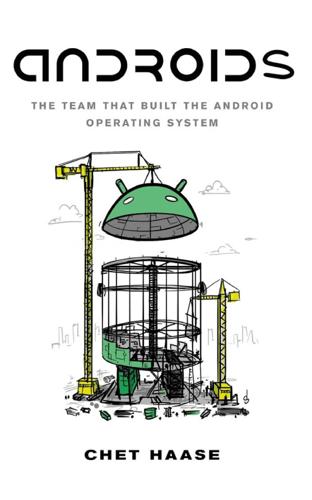
Androids: The Team That Built the Android Operating System
by
Chet Haase
Published 12 Aug 2021
Wei spent four years at Danger, shipping browsers on a couple of Danger’s Hiptop devices. Eventually, he was ready for something new, hopefully at another startup. A friend from Danger, Chris DeSalvo, suggested he talk to Andy Rubin, who had since left Danger and was running a startup in stealth mode called Android. Wei IM’d Andy that evening. Andy asked if he wanted to join. “He said, ‘Oh by the way, we’re being acquired by Google.’ “I had this sinking feeling, because I was looking for a startup. This was not a startup. I had to think about it. I didn’t know Google well at the time. I thought it was just a search company. I didn’t really understand the full spectrum of Google’s ambitions.
…
Fadden’s job was to take this concept demo, which Swetland and Chris had been working on, and start adding real capabilities, including applications. The startup had to be able to show potential investors what real users could actually do with this future system. In the Spring of 2005, the Android team didn’t yet have a product, but they did have a clear idea of what they wanted that product to be. Startups have been acquired for far less. Ficus Kirkpatrick, the Startup’s Last Employee The final person to join the Android team before it was acquired by Google was Ficus Kirkpatrick. Ficus started programming when he was young.
…
I spent the next several years moving from company to company as other jobs, technologies, and people offered a continually shifting variety in my tech life. I worked at Sun (a few different times), Anyware Fast (a contracting company started by a couple of friends), DimensionX (an early web startup acquired by Microsoft), Intel, Rendition (a 3D chip startup acquired by Micron), and Adobe. My father, who retired from the U.S. Navy after 21 years, was never comfortable with my frequent job changes. What about a pension? What about job security? What about stability for my family? What he didn’t see was that this was the way things were, and are, in Silicon Valley, and increasingly in high tech everywhere.

Machines of Loving Grace: The Quest for Common Ground Between Humans and Robots
by
John Markoff
Published 24 Aug 2015
When word circulated that the firm had been acquired, possibly for more than $200 million, it sent shock waves up and down Sand Hill Road and within the burgeoning “app economy” that the iPhone had spawned. After Apple acquired Siri, the program was immediately pulled from the App Store, the iPhone service through which programs were screened and sold, and the small team of programmers who had designed Siri vanished back into “stealth mode” inside the Cupertino campus. The larger implications of the acquisition weren’t immediately obvious to many in the Valley, but as one of his last acts as the leader of Apple, Steve Jobs had paved the way for yet another dramatic shift in the way humans would interact with computers. He had come down squarely on the side of those who placed humans in control of their computing systems.
…
Ultimately the boom would lead to forty start-up companies and U.S. sales of AI-related hardware and software of $425 million in 1986. As an academic, Kaplan lasted just two years at Stanford. He received two offers to join start-ups at the same time, both in the AI world. Ed Feigenbaum, who had decided that the Stanford computer scientists should get paid for what they were already doing academically, was assembling one of the start-ups, Teknowledge. The new company would rapidly become the Cadillac of expert system consulting, also developing custom products. The other start-up was called Symantec. Decades later it would become a giant computer security firm, but at the outset Symantec began with an AI database program that overlapped with Kaplan’s technical expertise.
…
Through Reid Hoffman, Gruber found a start-up that was planning to compete with TripAdvisor, which at that point was only offering travelers’ reviews of hotels. He convinced them that he could bring them a big audience—they just needed to handle the business development side of the project. And so Gruber started over as the vice president of design at this new start-up, although this time he had a team of three engineers instead of sixty. Having a small army of programmers, however, was no longer critical to the success of a company—the Internet had changed everything. Even the smallest start-ups could leverage vastly more powerful development toolkits.

The Long History of the Future: Why Tomorrow's Technology Still Isn't Here
by
Nicole Kobie
Published 3 Jul 2024
Creative minds can be awfully, well, creative, but he was correct on some points, blogging this in 2005: ‘Thanks to Google and blogging, every little bit of insignificant data will be embalmed forever in some server, haunting you.’ Not wrong there. Back to the technology. Magic Leap released a video while still in stealth mode, showing a CGI whale leaping up into a school gymnasium. As it turned out, that image was just a marketing mockup. A video demo Magic Leap released of ‘a game we’re playing around the office right now’ showed a first-person shooter overlaid around and over their desks, but turned out to be nothing but a fake concept pulled together by a movie studio.
…
Yet, here we are: driving licences for road-bound cars in our pockets, domestic chores still done by our own meaty hands, our thinking limited by our brains rather than extended by machines. Our failure to build these future technologies has nothing to do with a lack of effort. The brightest minds of multiple generations have spent lifetimes developing these ideas at top universities, famous labs, Silicon Valley campuses and startup garages – not to mention the eccentric inventors who go it on their own. And we’ve had success. Neural networks aren’t new; they’ve been in the works since the 1940s. Though our commutes aren’t airborne, the first flying cars were licensed to fly in the 1950s. The first augmented reality headset was plonked on a student’s head in the 1960s.
…
By the 1960s, VC had reached the Bay Area thanks to Arthur Rock,7 who advised the “traitorous eight” (as the Bell Labs breakaway group became known) to set up Fairchild Semiconductor rather than merely find new jobs, and founded the area’s first VC company, turning $3 million into $100 million. Those successes were shared by the VCs, company founders and early employees, who would reinvest in themselves or other startups, keeping the money flowing – and growing. Indeed, 92 companies can directly trace their origins to Fairchild itself, including Apple and Advanced Micro Devices (AMD). Of course, that’s just Silicon Valley. Contrary to what many think, plenty happens outside of the Bay Area. A few names that pop up repeatedly throughout this book – Carnegie Mellon University, Massachusetts Institute of Technology and, further afield, the universities of Munich, Germany – have become research and innovation centres.
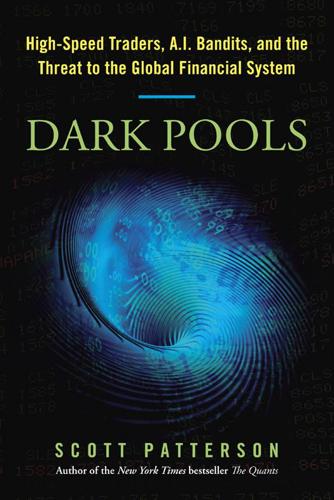
Dark Pools: The Rise of the Machine Traders and the Rigging of the U.S. Stock Market
by
Scott Patterson
Published 11 Jun 2012
Some algos were encoded with a randomizer, causing them to shift erratically between strategies, in order to hide the patterns of their moves. They were like hunted prey attempting to cover up their tracks through feints and dodges. With no order for the hunter-seeker radars to detect, it was easier to operate in stealth mode. But the hunter-seekers adapted to the new stealth techniques and watched for them, anticipating every move—even the seemingly random ones. Every trade left a signal, a trail of bread crumbs. The hunter-seekers were experts at sniffing them out. The mindless algos had evolved into dangerous beasts of prey.
…
Bodek quickly began scouring Wall Street for top talent, and he found eager takers among the trading desks of the most elite banks and hedge funds in the country. Word got around that Bodek and TW were building the Next Next Thing in Stamford, a cutting-edge trading operation that reputations would be built on. They turned down dozens of résumés from programmers and traders that most startups would have killed for. They moved fast. In November 2007, Trading Machines launched with $20 million. While small by some standards, it was deemed substantial for a high-speed trading outfit—and spoke to the economics of the business. Fast traders make money by picking up pennies and nickels on thousands of trades a day.
…
A notorious penny-stock pump-and-dump outfit, First Jersey was run by an evil-genius scam artist named Robert Brennan. Brennan had gained fame in the 1980s for a string of ads in which he zipped around in a Sikorsky helicopter, passing American landmarks such as the Grand Coulee Dam while espousing the virtues of First Jersey’s ability to fund small startups. The ads, which invited viewers to “Come Grow With Us,” appeared during nightly news shows and even the Super Bowl. Maschler quickly rose within the ranks at First Jersey and by the mid-1980s was running its Jersey City office. When allegations of ties to organized crime and stock scams threatened to bring First Jersey down in 1986, however, Maschler quickly jumped ship.

Dreaming in Code: Two Dozen Programmers, Three Years, 4,732 Bugs, and One Quest for Transcendent Software
by
Scott Rosenberg
Published 2 Jan 2006
Parlante had moved from user research into prototyping a calendar. Morgen Sagen had begun to create an automated build system for the project named Hardhat, a framework of code that would help the developers reassemble the program’s building blocks after they made changes. Everyone was itching to start writing code. But by the fall, OSAF was still in stealth mode. Kapor was a public figure; rumors had spread along the Silicon Valley grapevine that he was up to something, but what, exactly, remained a mystery. Kapor was loath to make a big-splash announcement without having a working product. That was classic “vaporware,” and he’d been down that road with his company On Technology in the late eighties; it had the dubious honor of a place in the Vaporware Hall of Fame curated by a Macintosh columnist.
…
They were an odd hybrid: They functioned like an open source project in that they were posting their source code on the Internet and trying to build a community of volunteer developers around it; but they also felt and acted like a classic software start-up company, with a core group of programmers trying to get a new product off the ground and worrying about how long it was taking. For Kapor, who had built Lotus Development Corporation from the ground up and later spent a couple of years as a venture capitalist, the start-up model was the world he knew, and open source was the world he was groping toward. His motivation to create Chandler—an ambitious rethinking of PIM software to enable easy sharing of data and to run on the three most popular kinds of personal computers—was, undoubtedly, to use Raymond’s phrase, “scratching a personal itch.”
…
He wanted to build Chandler because he craved something like it, and similar existing products simply didn’t match the picture in his head. But he didn’t begin, as a lone open source hacker might have, by posting a first chunk of code; he began, as an entrepreneur would, by subleasing some office space. As with so many software start-ups, OSAF’s first digs were funky, informal, improvised. Kapor had found space in Belmont on the Peninsula fringe of Silicon Valley, in a nondescript low-slung office park just down the road from the glass-towered campus of Oracle, the giant producer of corporate databases. The building also housed “Oracle University.”
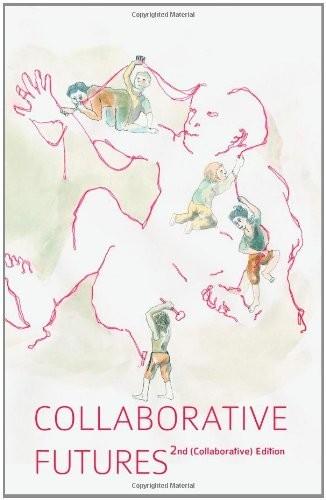
Collaborative Futures
by
Mike Linksvayer
,
Michael Mandiberg
and
Mushon Zer-Aviv
Published 24 Aug 2010
That faceless person that does not even have a username but is highly motivated and just wants to start contributing was standing there inperson at our doorstep. We didn't know his name, we only knew his IP address—where he physically is: he was right there! Literally browsing our “collaborative site”. And we? We were so Alpha, we were what early web people two decades ago used to call “under construction” or “in stealth mode.” We didn't even have an interface for him yet. It's like he found a public yet unannounced URL for a future collaborative platform that was just not ready yet. We thought we were private, but apparently we were live. We were caught offguard with our first anonymous visitor, very online and just eager to log in. 154 41.
…
In her o -referenced essay “Free Labor: Producing Culture for the Digital Economy,” Tiziana Terranova discusses free labor's complex relationship to capitalism. Free labor is a desire of labor immanent to late capitalism, and late capitalism is the field that both sustains free labor and exhausts it. It exhausts it by subtracting selectively but widely the means through which that labor can reproduce itself: from the burnout syndromes of Internet start-ups to underretribution and exploitation in the cultural economy at large. Late capitalism does not appropriate anything: it nurtures, exploits, and exhausts its labor force and its cultural and affective production. In this sense, it is technically impossible to separate neatly the digital economy of the Net from the larger network economy of late capitalism.

The One Device: The Secret History of the iPhone
by
Brian Merchant
Published 19 Jun 2017
“So you could look up and it’d be four o’clock and we’d worked right through lunch.” They started to shield their work from outsiders, even from their boss, Greg Christie—they didn’t want anything to intrude on the flow and momentum of the progress. “At that point,” Chaudhri says, “we stopped talking to people. For the same reasons that start-ups go into stealth mode.” And they didn’t want it to get shut down before they could effectively demonstrate the full scope of their gestating UI’s potential. Naturally, their boss was irked. “I remember we were going to Coachella, and Christie told us, ‘Maybe when you get back from that orgy in the desert, you can tell me what the hell you’re doing down there,’” Chaudhri says.
…
During that time, a lot of interested groups were looking to fund mobile start-ups that could result in an Ushahidi-like success story. In an effort to help Kenyan entrepreneurs, developers, and start-ups capitalize on the growing buzz and bring those systems to market, in 2010, Erik Hersman and his co-founders at Ushahidi founded iHub. Originally self-funded, it received a $1.4 million infusion from Omidyar Networks, the eBay founder’s “philanthropic investment firm.” A co-working space outfitted with high-speed internet, iHub encouraged start-ups and developers to pool skills and resources. “It helped catalyze, helped things move faster,” Hersman says.
…
And many developers seem intent on bridging profit and social entrepreneurship. “There is a sense of awakening that, hey, the binary operative of looking at start-ups as either for profit or for social entrepreneurship is flawed,” Nelson Kwame says. “There is a sense that SE needs to have profit, at least for sustainability.” And it goes the other way. “Beyond just making a lot of money. The whole system is moving towards this synergy.” He estimates that just 30 percent of new start-ups follow the donor-funded, social-enterprise model. Some of the core values of making apps are becoming more prominent—instead of going after grants exclusively, developers like Kwame are focusing more on what interests them.

Digital Wars: Apple, Google, Microsoft and the Battle for the Internet
by
Charles Arthur
Published 3 Mar 2012
(The PageRank patent is owned by Stanford University, where it was developed; Google is the exclusive licensee.) They became a classic Silicon Valley start-up in summer 1998, maxing out their credit cards to buy equipment, spending almost nothing on office furniture (the tables in their first offices at 232 Santa Margarita Avenue, Menlo Park were doors balanced on carpenters’ timber-sawing stands), and operating in what is commonly known as ‘stealth mode’. Renamed from ‘BackRub’, and almost named ‘The Whatbox’ (they decided it sounded a bit too much like ‘wetbox’, which sounded vaguely porn related), the Google web page first went live in August 1997.
…
Certainly for Palm, we will reach into many more companies with these devices.’4 Analysts agreed: in February 2006, Nick Jones, an analyst at the industry research company Gartner, declared that Windows Mobile had more than 10,000 developers working on applications, ‘far more than any rival mobile operating system’, ahead of Symbian (and Nokia) and that of Research In Motion (RIM), the Canadian maker of the BlackBerry.5 Android The September 2005 announcement of the Microsoft–Palm tie-up grabbed the interest of one particular Google employee: Andy Rubin, a former Apple employee, whose second mobile start-up, called Android, had been purchased by Google the month before. (He had left his first mobile start-up, Danger, which produced the Hiptop phone and would later be sold to Microsoft.) Larry Page in particular saw mobile as the future; Eric Schmidt was less convinced. So Page, with co-founder Sergey Brin, bought Android without consulting Schmidt. Like Knook, they could see that phones with computer power were going to become more plentiful than PCs.
…
‘I think it has almost had a chilling effect on the way they do product development,’ Foley suggests. With Microsoft suitably admonished, and now living under a new regime of oversight, the scene was set for Microsoft’s next challenges: in search, digital music and mobile phones. First was a little start-up that was already becoming the talk of internet users, one that was to form its corporate thinking around a motto that tried to express a desire not to be Microsoft: ‘Don’t be evil.’ Chapter Three Search: Google versus Microsoft The weather in Brisbane for the 7th World Wide Web conference in May 1998 was dismal: ‘It rained every day,’ recalls Mike Bracken, one of the attendees.

Fire in the Valley: The Birth and Death of the Personal Computer
by
Michael Swaine
and
Paul Freiberger
Published 19 Oct 2014
And back in 2003, four entrepreneurs—Andy Rubin, Rich Miner, Nick Sears, and Chris White—started a company named Android to create a new operating system based on the Linux kernel and emphasizing a touch-based interface for tablets, smartphones, and the like. Two years later, the company was acquired by Google, which had been investing its huge income from its search business in various enterprises. The Android project remained in stealth mode, with no hint of any intent to produce a new operating system to compete with Windows Mobile and Symbian—which were the players to beat. When Apple released the iPhone, the developers recognized that Windows Mobile and Symbian were not the target; Apple’s iOS mobile operating system was.
…
It is fitting that IMSAI’s most lasting contribution to the personal-computer field was a sales enterprise—a chain of retail stores, a computer franchise—ComputerLand, started by Ed Faber in 1976. Faber was an old hand at start-up operations. In 1957, he joined IBM as a sales representative. In 1966, IBM tapped Faber to help develop a department called New Business Marketing, which was designed to ease IBM into the small-business area. Faber helped create a business plan that would include a newly assembled sales force and a fresh marketing concept for the company. This was his first start-up operation, and he relished the challenge. He identified problems, devised solutions for them, and then, as corporate start-up strategies inevitably go, he had to deal with a set of new problems created by the solutions.
…
He identified problems, devised solutions for them, and then, as corporate start-up strategies inevitably go, he had to deal with a set of new problems created by the solutions. By 1967, Faber decided he wanted his career to revolve around start-ups, an unusual choice at IBM at the time. In 1969, after 12 years with IBM, Faber left to join Memorex. At Memorex, and later at a minicomputer company, Faber was hired to build the internal marketing organization. A pattern was developing. After he had created and launched a program, he wanted to move on. In 1975, Bill Millard invited Faber to join him at start-up IMSAI. Millard described the IMSAI opportunity in lavish terms, which Faber automatically suspected was overstatement.
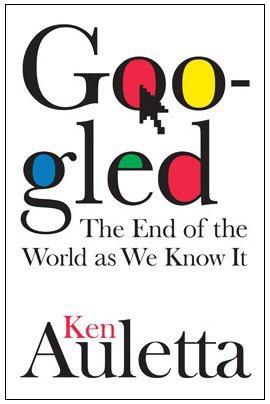
Googled: The End of the World as We Know It
by
Ken Auletta
Published 1 Jan 2009
In their first business plan, Google had a sketchy idea that they’d make money by charging companies for advanced search results and by getting digital advertising companies like DoubleClick to sell online ads of some kind. The revenue plan wasn’t very impressive, but the search engine was. Users were multiplying. Secrecy was the watchword. While Google search was still small, he knew it was much larger than competitors anticipated: “We were in stealth mode,” Kamangar said. “If first Yahoo and then Microsoft knew that our number of searches was so much larger, they would be more aggressive.” Repeatedly, Page explained his mania for secrecy by invoking the example of Tesla. Google had to sell the venture capitalists (VCs), but they also had to build a sales force to secure revenues, and for this task they required an experienced senior strategist and salesman.
…
It does not go unnoticed by their friends that Brin and Page have been regular attendees at this weeklong retreat in August, whose Woodstock-like spirit is captured in Burning Man’s ten stated principles, which include a devotion “to acts of gift giving”; creating “social environments that are unmediated by commercial sponsorships, transactions, or advertising”; and “a radically participatory ethic” that can lead to “transformative change.” “Google is a cross between a start-up and graduate school,” said Peter Norvig, Google’s director of research, who joined the company in 2001 and wears bright Hawaiian shirts and sneakers with laces left untied. “Formal rules don’t matter. There’s still a loose feel. The disadvantage of being a start-up is the fear that you will run out of money. There is stress. Google is more like graduate school in that you don’t have that stress. You expect one day that the guys in suits will take over.
…
“In this report,” they wrote on page one, “we attempt to describe what may be one of the hottest new markets to develop in years—the growth of PC-based communications and the Internet.” They said the “market for Internet-related products and services appears to be growing” faster than such early media start-ups as printing, telephones, movies, radio, recorded music, television. With a multiplying base of about 150 million PC users, they predicted e-mail “should become pervasive,” and the Internet would serve as “an information distribution vehicle” for companies, slashing costs, birthing new competitors—“the next Microsofts, Ciscos, Oracles, and Compaqs....”
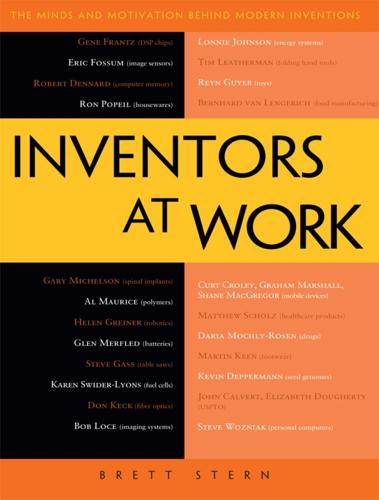
Inventors at Work: The Minds and Motivation Behind Modern Inventions
by
Brett Stern
Published 14 Oct 2012
My motivation has always been to get robots in people’s hands, and that has happened—a dream come true. There are six thousand military robots now and six million Roombas in people’s hands. But, I want to keep on building. I like creating things the world hasn’t seen before. That is why I am doing another start-up in robotics. Stern: Well, can you talk about your next project? Greiner: Not really, no. It is still in “stealth” mode. But I can say we are focused initially on UAVs [unmanned aerial vehicles]—flying robots! Stern: Where do you feel that robotics technology has not been applied yet? Greiner: Oh, there are lots of great places. Just off the top of my head, agriculture and transportation.
…
Was the business sort of a format to commercialize your ideas, but not necessarily bring the product to market? Mochly-Rosen: I think everybody is hoping to bring product to market, but there is no way—or at least it’s extremely rare—that a start-up biotech company ends up bringing a product to market itself. Of course, we have the stories of Genentech and the like, but they are distinguished by their rarity. Usually a start-up brings the experimental product up to Phase 2 trials and then it either licenses it or the company is acquired by Big Pharma to do the large clinical trials. That’s exactly what happened to KAI. Stern: You run a program called SPARK At Stanford.
…
moments in government, institutional, or industrial labs; develop their inventions with multidisciplinary teams of experts; and leave the marketing of their inventions to other specialists in the organization. Other inventors in this book develop their inventions with small teams in academic labs and try to translate their research into product via licenses or start-up companies. Still other inventors carry on the classic lone-inventor-in-his-garage tradition and take on the task of bringing their products to market themselves. And a few mix and match their strategies, bringing skills honed in big labs home to their garages and licensing their personal inventions to big corporations.

The Patient Will See You Now: The Future of Medicine Is in Your Hands
by
Eric Topol
Published 6 Jan 2015
Roughly ten billion lab tests are done each year in the United States, and they factor into 70 percent to 80 percent of the medical decisions that doctors make.2,5 Knowing how big a part of medicine this is and that there was something quite innovative going on, I visited the Theranos headquarters, an enormous, modernized, bright-colored warehouse with large pictures of happy kids posted throughout, to interview Holmes. We started my visit with a light lunch and spoke briefly about her leaving Stanford at age nineteen and spending the last decade building Theranos, which up until quite recently was in stealth mode. Before I interviewed Holmes, I asked her if I could have my blood tested. She was more than happy to accommodate my request. It was a refreshing experience. No tourniquet. No fist pumping or large needles. Instead the young woman drawing my blood put on a finger warmer that dilated the blood vessels in my index finger.
…
Makarov et al., “Prostate Cancer Imaging Trends After a Nationwide Effort to Discourage Inappropriate Prostate Cancer Imaging,” Journal of the National Cancer Institute 105, no. 17 (2013): 1306–1313. 96. J. Dorrier, “California Startup, Tribogenics, Develops Smart Phone Sized Portable X-Ray Machines,” Singularity Hub, November 16, 2013, http://singularityhub.com/2013/11/16/southern-california-startup-tribogenics-develops-smart-phone-sized-portable-x-ray-machines/. 97. J. B. Haun et al., “Micro-NMR for Rapid Molecular Analysis of Human Tumor Samples,” Science Translational Medicine 3, no. 71 (2011): 1–14. 98.
…
Farr, “Former Apple CEO Backs Virtual Doctor’s Office to Create the ‘Consumer Era’ of Medicine,” Venture Beat, January 22, 2014, http://venturebeat.com/2014/01/22/former-apple-ceo-backs-virtual-doctors-office-to-create-the-consumer-era-of-medicine/. 68. R. Empson, “With $1.2M from Greylock, Yuri Milner and 500 Startups, First Opinion Lets You Text a Doctor Anytime,” TechCrunch, January 14, 2014, http://techcrunch.com/2014/01/14/with-1-2m-from-greylock-yuri-milner-and-500-startups-first-opinion-lets-you-text-a-doctor-anytime/. 69. O. Kharif, “Telemedicine: Doctor Visits via Video Calls,” Bloomberg Businessweek, February 27, 2014, http://www.businessweek.com/articles/2014-02-27/health-insurers-add-telemedicine-services-to-cut-costs. 70.
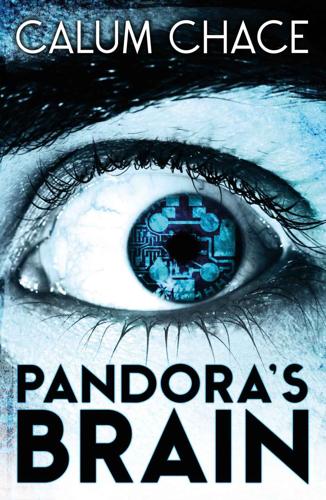
Pandora's Brain
by
Calum Chace
Published 4 Feb 2014
I think I got the job thanks to the work my father was doing, as I explained. I was only there a few weeks, though, because frankly it scared me.’ ‘In what way?’ Vic asked. ‘Well, the first thing that spooked me was when I found out that Ivan’s headquarters is a big ship that sails around the world in stealth mode, almost never making land, with Ivan and his senior staff coming and going by helicopter. Then a couple of people in my team disappeared. It was very sudden: one day they were there and the next day they weren’t. No goodbyes, no explanations, and no-one talked about them. It was as if they had never existed.’
…
PANDORA’S BRAIN CALUM retired in 2012 to focus on writing after a 30-year career in business, in which he was a marketer, a strategy consultant and a CEO. He maintains his interest in business by serving as chairman and coach for growing companies. He is co-author of The Internet Startup Bible, a business best-seller published by Random House in 2000. He is a regular speaker on artificial intelligence and related technologies and runs a blog on the subject at www.pandoras-brain.com. He lives in London and Sussex with his partner, a director of a design school, and their daughter. He studied philosophy at Oxford University, where he discovered that the science fiction he had been reading since early boyhood is actually philosophy in fancy dress.
…
That book had been recommended by an old friend, Nick Hadlow, and when I returned to England I suggested that we write a novel together based on the premise. We did, and it was awful. Actually Nick’s chapters were rather good, but with hindsight I realised that as mere stripling of 40, I was too young to write a novel. I had recently co-authored a best-selling business book (The Internet Startup Bible, which featured prominently in Amazon’s first ever UK TV advert) but I didn’t realise how much harder it is to write a good novel. A decade or so later I retired from full-time work, and had both the time and (arguably) the more rounded life experience to do a better job. The story arc is the same, but the characters and much else are wholly different.
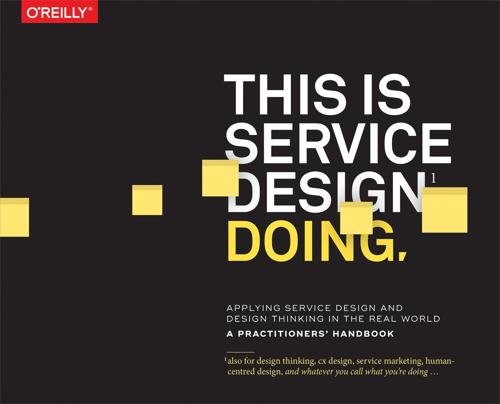
This Is Service Design Doing: Applying Service Design Thinking in the Real World: A Practitioners' Handbook
by
Marc Stickdorn
,
Markus Edgar Hormess
,
Adam Lawrence
and
Jakob Schneider
Published 12 Jan 2018
Establishing a center of excellence was a critical step in implementing the program and making design thinking a core discipline. Although the SMART Method is still in its infancy, we are achieving positive results. Service design has helped Genesys transform to creating more intuitive, personalized customer (and sales) experiences. What started as a small stealth-mode initiative has quickly gained momentum in helping the company reduce complexity, break down silos, and bring a thoughtful, human approach to our business. “Service design has transformed how Genesys teams engage with our customers. We have changed the conversation with journey mapping becoming the vehicle to discover and co-create new, innovative customer experiences together.
…
It needs to be embedded within the research phase and end users should be invited in order to find the most relevant solutions. 04 Using the end users’ experience as a reference point helps sort out which actors and aspects in the surrounding service ecosystem are relevant to understand and improve the service or system. 1 In his 2015 TEDTalk “The Single Biggest Reason Why Startups Succeed,” (https://www.ted.com/talks/bill_gross_the_single_biggest_reason_why_startups_succeed) Ted Gross suggests that the main success factor is not idea quality, but the timing and skills of the team. Timing is especially relevant to us, as service design can get prototypes and pilots on the road earlier. 2 The link between idea quantity and idea quality is still debated (for example, see Paulus, P.
…
Even incomplete, flawed, or impractical ideas can be valuable if they generate useful questions or prototypes. 3 See 6.5.2, Case: Co-design with hybrid methods, for an example of successful postlaunch ideation. 4 In (company) politics, sticking to your ideas is usually seen as a positive characteristic. But in innovation, being ready and willing to switch focus is a key skill. In startups, we talk about the pivot, the “structured course correction designed to test a new fundamental hypothesis about the product, strategy, and engine of growth,” as a key success factor. Quote from Reis, E. (2011). The Lean Startup. New York: Crown Business, p. 149. 5 The role of the design facilitator in decision making is discussed in Chapter 10, Facilitating workshops. 6 See Dorst, K. (2011). “The Core of ‘Design Thinking’ and Its Application,” Design Studies, 32(6), 521-532.

Architects of Intelligence
by
Martin Ford
Published 16 Nov 2018
Look at the tools we have to interface with our brain right now—we can get an image of our brain via an MRI scan, we can do bad recordings via EEG outside the scalp that don’t really give us much, and we can implant an electrode to address a disease. Outside of that, our brain is largely inaccessible to the world outside of our five senses. I started Kernel with $100 million with the objective of figuring out what tools we can build. We’ve been on this quest for two years, and we still remain in stealth mode on purpose. We have a team of 30 people and we feel very good about where we’re at. We’re working very hard to build the next breakthroughs. I wish I could give you more details about where we’re at in the world. We will have that out in time, but right now we’re not ready. MARTIN FORD: The articles I’ve read suggest that you’re beginning with medical applications to help with conditions like epilepsy.
…
MARTIN FORD: So far, it seems that any AI startup that demonstrates real potential gets acquired by one of the huge tech firms. Do you think that eventually there’ll be AI startups that will go on to have IPOs and become public companies? ANDREW NG: I really hope there’ll be plenty of great AI startups that are not just acquired by much larger startups. Initial public offering as a tactic is not the goal, but I certainly hope that there’ll be many very successful AI startups that will end up thriving as standalone entities for a long time. We don’t really have a financial goal; the goal is to do something good in the world. I’d be really sad if every AI startup ends up being acquired by a bigger company, and I don’t think we’re headed there.
…
With the rise of AI there will also be some incumbent companies, ironically many of them were startups in the previous age, like Google, Amazon, Facebook, and Baidu, that’ll do very well with the rise of AI. AI Fund is trying to create the new startup companies that leverage these new AI capabilities we have. We want to find or create the next Google or Facebook. MARTIN FORD: There are a lot of people who say that the incumbents like Google and Baidu are essentially unshakable because they have access to so much data, and that creates a barrier to entry for smaller companies. Do you think startups and smaller companies are going to struggle to get traction in the AI space?
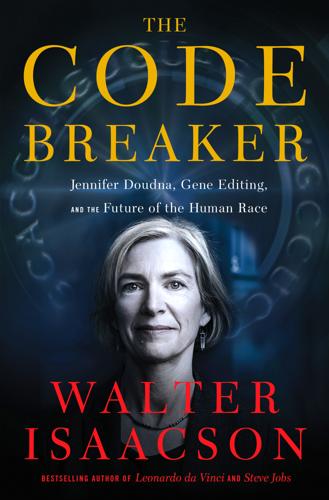
The Code Breaker: Jennifer Doudna, Gene Editing, and the Future of the Human Race
by
Walter Isaacson
Published 9 Mar 2021
There was one person Church did not think of contacting: Feng Zhang. The reason was, he says, that he had no idea that his former doctoral student was working on CRISPR. “If I had known Feng was working on it, I would have asked him about it,” Church says. “But he was very secretive when he suddenly hopped on CRISPR.”5 CHAPTER 24 Zhang Tackles CRISPR Stealth mode After completing his postdoctoral work in Church’s Harvard Medical School lab in Boston, Zhang had moved across the Charles River to the Broad Institute in Cambridge. Ensconced in state-of-the-art lab buildings on the edge of MIT’s campus, the Broad was founded in 2004 by the irrepressible Eric Lander with funding (eventually $800 million) from Eli and Edythe Broad.
…
“In many instances, the founding scientists even retain their faculty posts.”2 This would become Doudna’s approach. Startup Until then, Doudna had never thought much about commercialization. Money was not then, nor would it be later, a primary motivation in her life. She and Jamie and Andy lived in a spacious but not lavish house in Berkeley, and she never had the desire for a grander one. But she did like the idea of being part of a business, especially one that could have a direct impact on people’s health. And unlike Genentech, a startup would have no corporate politics, nor would it drag her away from academia. Haurwitz likewise felt the allure of business.
…
The company By the time Doudna and Haurwitz started their company in 2011, Berkeley had become savvier about encouraging its researchers to be more entrepreneurial. It launched a variety of programs to nurture startups formed by its students and professors. One of them, which was formed in 2000 in partnership with the other University of California campuses in the Bay Area, was the California Institute for Quantitative Biosciences (QB3), which had as its goal “a catalytic partnership between university research and private industry.” Doudna and Haurwitz were selected to become participants in QB3’s Startup in a Box program, which gave training, legal advice, and banking services to scientist-entrepreneurs who wanted to turn their basic discoveries into commercial ventures.
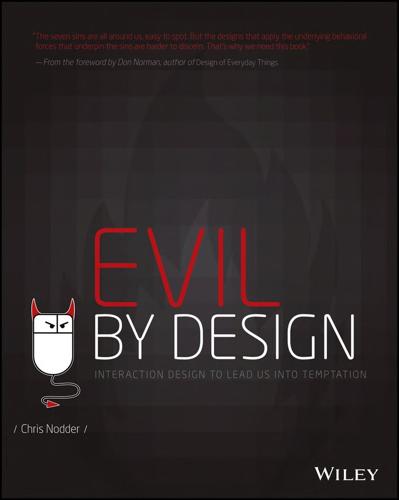
Evil by Design: Interaction Design to Lead Us Into Temptation
by
Chris Nodder
Published 4 Jun 2013
The idea is old (cars used similar gasification burners in post-war Germany where petrol was scarce), but the technology needed to create a small, portable, reliable stove was untested. The company first promised an early 2010 release, which subsequently slipped to late 2011 and then Spring 2012. Its design finally came to market in May 2012. What kept people interested enough during that time? The company could have worked in stealth mode. After all, there was always the potential for another company to “borrow” the idea and get to market sooner. Instead, it chose to keep its website updated at each stage of the journey. It showed video of early prototypes used in the woods, listed the design awards it was winning, and consistently tied the commercial camping stove product back in with its charitable work to develop low-carbon, high-efficiency cooking stoves for developing nations.
…
“Man saves Canadian Tire money for 15 years, buys mower.” TorontoSun (torontosun.com). July 13, 2011. Retrieved December 2012. Corin Raymond: “Don’t Spend It Honey!” Corin Raymond’s Live Album Fundraiser (dontspendithoney.com). Retrieved December 2012. Seth Priebatsch coupon value: Seth Priebatsch. “How ‘Game Mechanics’ Can Help Your Startup.” Huffington Post (huffingtonpost.com). March 11, 2010. Retrieved December 2012. Consider a small reward rather than a big one Mechanical Turk is addictive: personalbugmenot. “Is turking addictive?” Turker Nation forum (turkernation.com). October 7, 2012. Retrieved December 2012. Earnings analysis: Compiled from information supplied by forum contributors at turkernation.com and turkers.proboards.com/.

Future Crimes: Everything Is Connected, Everyone Is Vulnerable and What We Can Do About It
by
Marc Goodman
Published 24 Feb 2015
Posting travel itineraries can let burglars know that you will be away from home for two weeks on vacation—an invitation for trouble. 7. Use your operating system’s built-in software firewall, available in both Windows and Mac, to block unwanted incoming connections to your machine, and enable “stealth mode” to make it more difficult for hackers and automated crime bots to find you online. NOTE: Both the threats and the tools to protect yourself online change frequently. For additional guidance, visit www.futurecrimes.com. Acknowledgments One more thing … STEVE JOBS A project of this magnitude can never be the work of just one person alone.
…
Innovative Marketing took customer service seriously and advised clients calling its 800 numbers that calls would be monitored for quality assurance. According to statistics kept by the call centers, over 95 percent of clients described themselves as “happy” with the service they had received. Like all tech start-ups, Innovative Marketing was well represented on social media. Hundreds of its employees had established profiles on LinkedIn, including their positions and work histories. To bring in the talent required to grow the start-up, Innovative Marketing placed job ads on numerous career Web sites and used recruiters to help find project managers, UNIX administrators, search engine optimization specialists, researchers, support engineers, and business development associates.
…
Experts estimate that the ratio of stolen account credentials to available mules could be as high as ten thousand to one. In other words, with sufficient mule and HR capacity, losses attributable to cyber crime could be ten thousand times worse. The Lean (Criminal) Start-Up The structure of Crime, Inc., like that of any modern techno-centric organization, is not fixed in time and space but rather constantly in flux. In his book The Lean Startup: How Today’s Entrepreneurs Use Continuous Innovation to Create Radically Successful Businesses, Eric Ries outlines methods by which budding entrepreneurs can create new products “under conditions of extreme uncertainty.”
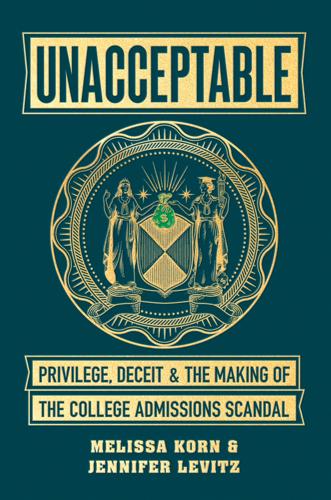
Unacceptable: Privilege, Deceit & the Making of the College Admissions Scandal
by
Melissa Korn
and
Jennifer Levitz
Published 20 Jul 2020
Almost in unison, they gasped. * * * • • • INVESTIGATORS AND PROSECUTORS GATHERED early that morning at the FBI command post or at the U.S. Attorney’s Office in Boston, where the cool air still felt a bit like winter. For roughly a year, they had kept their demanding investigation in stealth mode, limiting whom they told in other districts and at the DOJ headquarters to prevent leaks. Spilled secrets tick off judges, thwart an investigation, and inspire suspects to do something rash, like hurt themselves or disappear to a place that doesn’t have an extradition treaty with the United States.
…
“With the growing level of cheating, many students who do not cheat feel pressured to cheat in order to compete with those who do.” Ben’s family would eventually know too well the dangers of cheating. But all things considered, cheating wasn’t the biggest concern when it came to the high-stakes world of high school. Palo Alto teemed with tech startups and venture capital firms and more millionaires than anyone could track. Parents had graduated from college, and grad school, and gotten PhDs to boot. They had no doubt their kids would, too. That achievement-focused environment, where sleep came second to schoolwork, led teens to buckle. A cluster of suicides shook Henry M.
…
Julia was an especially rich kid in an already wealthy area—in college, she’d don Hermès belts and Gucci sneakers to attend parties. Her father, Manuel Henriquez, cofounded and ran Hercules Capital, a publicly traded specialty finance company that provides loans to venture capital and private equity–backed startups. His 2014 compensation package topped $8.2 million, and was nearly $7.9 million in 2015. The family lived in Atherton, a lush, peaceful pocket of Silicon Valley where sprawling houses, hidden behind gates and fences, looked more like they belonged in Greenwich, Connecticut, than in California. Manuel and his wife, Elizabeth, would ultimately be in deep with Singer, as the counselor helped both Julia and her younger sister, Megan, cheat on their college entrance exams (Julia’s SAT subject tests and SAT, and Megan’s ACT—twice—and SAT subject tests).
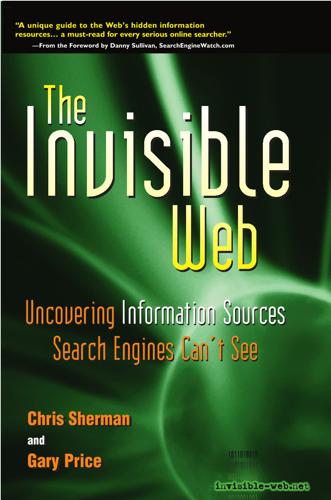
The Invisible Web: Uncovering Information Sources Search Engines Can't See
by
Gary Price
,
Chris Sherman
and
Danny Sullivan
Published 2 Jan 2003
In this chapter, we take a brief look at some of the most promising new approaches to making the Invisible Web visible. Some of these technologies may be in place by the time this book sees print. Others may never make it out of research labs—and we’re certain there are still other projects operating in stealth mode, waiting for the ideal time to launch a competitive assault against the major search services. 127 128 The Invisible Web Smarter Crawlers At the most basic level, search engines will get much better at compiling truly comprehensive indexes of the Web. In part, they’ll do this by enhancing their crawler programs to be smarter about how they operate.
…
Search Form URL: http://www.dotcomdirectory.com/nsi/ advanced.htm Ecomp Executive Compensation Database http://www.ecomponline.com Compensation data for executives at U.S. public companies. Search Form URL: See Main Page European High-Tech Industry Database http://www.tornado-insider.com/radar/ “... research startups, investors, and advisors to high-tech Europe. You can search through press releases of these companies and read their profiles in the Radar database.” Search Form URL: http://www.tornado-insider.com/radar/ comp AdvSearchForm.asp Federally Incorporated Companies Canada http://strategis.ic.gc.ca This database produced by the Canadian Government allows searching by corporation name, location, status, and more.
…
Privately Held Companies) http://www.forbes.com/private500/ Forbes International 800 http://www.forbes.com/international800/ Inc. 500 Database (1982-2000) http://www.inc.com/500/search/1,3762,,00.html Herringtown http://www.redherring.com The Red Herring, a respected publication providing coverage of the information technology business, provides this database of startup companies. Content is provided by the companies themselves. Search Form URL: http://www.redherring.com/herringtown/ home/home.jsp Related Resources: The Industry Standard “Net Deals” Database http://www.thestandard.com/deals Kompass http://www.kompass.com “Every company worldwide [that] participates in business-tobusiness commerce may be listed in the Kompass Database.”
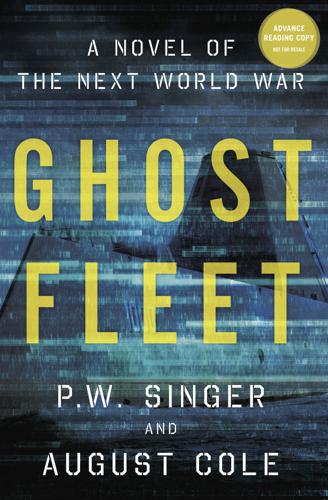
Ghost Fleet: A Novel of the Next World War
by
P. W. Singer
and
August Cole
Published 28 Jun 2015
At other firms, though he wasn’t an investor, his reputation had been enough. That, and the simple lure of the offer. It was the opportunity, he had said, to be part of the valley’s most important startup ever. The rule for selection had been simple. The CTO of each firm Aboye talked to would designate his or her three best programmers. The limited numbers were ostensibly to keep the project in stealth mode, as the investors called it. The goal was to hide their business not only from Directorate spies, but also from the National Security Agency. Even if the NSA’s networks weren’t pwned by the Directorate, which most people suspected they were, anger over the sneak backdoors of the old Snowden-era scandals lingered.
…
That was why he’d easily fallen into engineering at Stanford. It was predictable, the opposite of what his life had been to that point. And so it was Daniel’s ability to distinguish between what was predictable and what required serendipity that had powered his rise through Silicon Valley’s venture-capital investment firms; he knew which tech startups to back and which to avoid. After he finally made it through the security line’s sequential body scanners and DNA tagging, a petite young redheaded woman in a light gray pantsuit stepped forward, her rubber-soled pumps squeaking as she halted before him. “Mr. Aboye, I am Catherine Hines, special assistant to the principal deputy undersecretary of defense for Acquisitions, Technology, and Logistics,” she said, rattling her title off like an auctioneer with a rare treasure.
…
The space was cavernous, 1,140 feet by 308 feet, to be exact, the size of three Superdomes. But the smell filled even that void. To someone from outside the valley, it was the tangy funk of old pizza and people who’d gone too long without a shower. But to anyone local, it smelled like money. Fame. Power. Success. So much had changed in Silicon Valley’s startup scene during the past few decades, but there was one constant. This smell. And the fact that it now filled Hangar One made it all the more appropriate. In 1931, the city fathers of Sunnyvale, California, had come up with a unique plan for economic development. They’d raised $480,000 to buy nearly a thousand acres of farmland and then sold off the land to the U.S. government for one dollar.
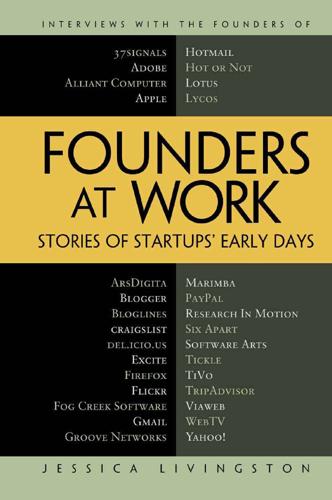
Founders at Work: Stories of Startups' Early Days
by
Jessica Livingston
Published 14 Aug 2008
So it’s hard to find the right balance and be human, because you don’t know who’s genuine and who’s not. Livingston: It must be frustrating not to be able to share your idea. Ross: Incredibly. If you ever want to stop a conversation dead in its tracks, just use my magic words: “stealth mode.” I’ve also found “programmer” to work well in many situations. But we’ll have our day. Livingston: Are there any lessons that you learned in the Firefox days that you are applying to this new startup? Ross: One is to make sure you are always in communication with the people who are eventually going to use your product. It’s very easy to just lock yourself in a room and code all day, and you forget what the real problems are that people are having.
…
In big companies, there’s always going to be more politics and less scope for individual decisions. But seeing what startups are really like will at least show other organizations what to aim for. The time may soon be coming when instead of startups trying to seem more corporate, corporations will try to seem more like startups. That would be a good thing. Paul Graham Cofounder, Viaweb Preface It’s been more than a year since Founders at Work was first published. What have I learned since? The biggest surprise has been the sheer number of people interested in startups. I know about the ones who apply to Y Combinator, read Hacker News, or attend Startup School, but I could never be sure how many people were interested in startups beyond that core of would-be founders.
…
It depends how risk-averse you are. You should consider going to work at Google, start a startup, or go to another place where you are going to have that opportunity. For someone who’s pretty far down in a company, if they are going to try to change the whole culture of the company, I’m skeptical. When I was leaving Intel, one of my managers there was trying to convince me, “You don’t have to leave to do the startup thing. There are startup opportunities inside of Intel.” Livingston: When you were working on it, were you working startup hours? Did it feel like a startup? Buchheit: Oh yeah. We had a pretty tight little team. We have really smart peo- ple and they are fun to work with.
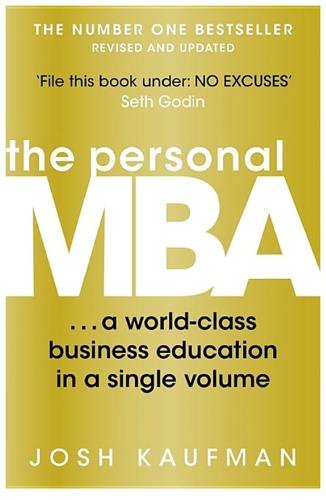
The Personal MBA: A World-Class Business Education in a Single Volume
by
Josh Kaufman
Published 2 Feb 2011
Unless you work in an industry with unusually aggressive, competent, and well-funded competitors, you really don’t have to worry about other people “stealing” your idea. Ideas are cheap—what counts is the ability to translate an idea into reality, which is much more difficult than recognizing a good idea. “Stealth mode” diminishes your early learning opportunities, putting you at a huge early disadvantage. It’s almost always better to focus on getting feedback from real customers as quickly as you possibly can. A Prototype is an early representation of what your offering will look like. It may be a physical model, a computer rendering, a diagram, a flowchart, or a one-page paper that describes the major benefits and features.
…
You’ll also need to spend around $5,000 up front for equipment: mats, blocks, and a computer to handle membership records. The commercial real estate agent you’re working with is putting pressure on you to move quickly, saying the location you want may be snatched up by another tenant if you don’t commit now. Your current life savings are enough to cover the start-up costs and three months of projected operating expenses. You’re excited, but you want to ensure that you’re making the right decision before you move forward. Should you sign the lease? Stories like this are very common: an excited first-time entrepreneur has a dream of owning a restaurant, bar, or bookstore, so they invest their life savings and take on significant debt to open the new business.
…
Venture capitalists and other forms of investment can provide “seed capital”—a fixed amount of money you can use to start the business. The more money you raise in capital and the more slowly you spend it, the more time you have to make the business work. The faster you “burn” through your capital, the more money you need to raise and the more quickly you need to start bringing in revenue. If you burn through all of your start-up capital and can’t raise more, game over. That’s why investors and savvy entrepreneurs watch the business’s “burn rate” very closely—the slower the burn, the more time you have to create a successful business. The lower your Overhead, the more flexibility you’ll have and the easier it will be to sustain your business operations indefinitely.
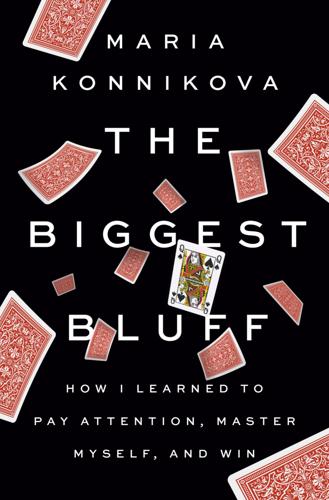
The Biggest Bluff: How I Learned to Pay Attention, Master Myself, and Win
by
Maria Konnikova
Published 22 Jun 2020
He can predict what they’ll do and how they will look doing it, and he will craft his own future movements accordingly. It’s fitting that, while an insect rather than a bird, the dragonfly is a creature that flies. There’s a distinctly avian quality to Erik’s watchfulness. The first time I see Erik’s dragonfly stealth mode in action is in a hand that I don’t actually watch in person, but on a stream, a few years after it happens. I’ve heard its legend and have tracked it down to review in advance of my own foray into live poker. It’s May 2015, and Erik finds himself heads up for the title of EPT Grand Final Super High Roller champion—a €100,000 buy-in event where the winner will get over €2 million.
…
And to the end, I never called back quite quickly enough. She’d been through World War II, survived Stalin, Khrushchev, Gorbachev, and was defeated by a slippery floor and one misplaced foot. Unfair. Or rather, unlucky. One surer step and she’d still be here. My husband lost his job next. The startup he’d joined failed to start up as planned, and with that, I momentarily found myself in a position I hadn’t been in for years: supporting my family on a freelance writer’s income. We left our beautiful West Village apartment. We changed our habits. We did our best to adjust. And on top of it all, I found my health suddenly failing.
…
At the very least, I think as I walk down from my hotel room and start trying to thread my way through the casino maze to find our meeting spot, I should learn some interesting slide techniques for my next visit to the water park. What greets me instead is one of the most affable, mildest-mannered human beings I’ve ever encountered. No tattoos that I can see, only a neat beard, a gray T-shirt and jeans, and a huge smile—someone who looks like he’d be far more comfortable at a tech startup than a Manhattan nightclub. You don’t look like someone who wanted a custom slide, I want to tell him. Thankfully. “It’s so nice to finally meet you.” Phil gives me a big hug. “I’ve heard great things.” His voice sounds ready-made for narrating soothing nature documentaries. I breathe a sigh of relief.
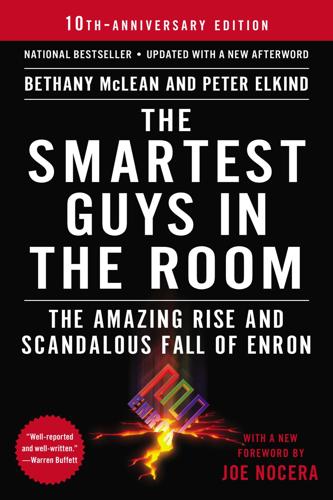
The Smartest Guys in the Room
by
Bethany McLean
Published 25 Nov 2013
The story of the creation of Enron Online became an instant corporate legend and a key part of the Enron myth, testimony to how Enron’s culture fostered an entrepreneurial spirit that was at the root of the company’s success. The press trotted it out as an example of Enron’s cutting-edge management style, and some professors at Harvard Business School based one of the school’s famous case studies around it. It helped that the hero was a young woman and that in setting up EOL, she operated in stealth mode. It also helped that EOL was unveiled at the height of Internet mania, when any business conducted online had to be a good thing, almost by definition. The woman in question was named Louise Kitchen. An Enron employee since 1994, she had become a top gas trader in the United Kingdom, where she worked for John Sherriff.
…
Over time, as that culture infected the entire company, Enron began to rot from within. But that came later. • • • Jeff Skilling liked to say that he was presiding over a start-up, going so far as to declare that “other than Microsoft, we were the largest start-up company in the last 20 years.” Never mind that Enron had roots that went back to the early days of the gas pipeline business; indeed, even Skilling’s own division wasn’t as much of a start-up as he liked to think. In 1991, Lay and Kinder merged Skilling’s Enron Finance with something called Enron Gas Marketing, the part of the company that sold natural gas to wholesale customers.
…
Though Skilling made National Honor Society his junior and senior years and graduated sixteenth of a class of 600, he later told friends that school was “sheer boredom.” His childhood was unhappy; one friend describes him as “a tortured soul.” He found his solace in work. Soon after moving to Aurora, he got a job at a start-up local TV station. His first duties were cleaning out 40-odd years of accumulated debris from the old Moose Lodge, where the new station was housed. He painted the walls. Then, as each piece of equipment arrived, Skilling learned to operate it. When the production director quit, Skilling took his job.
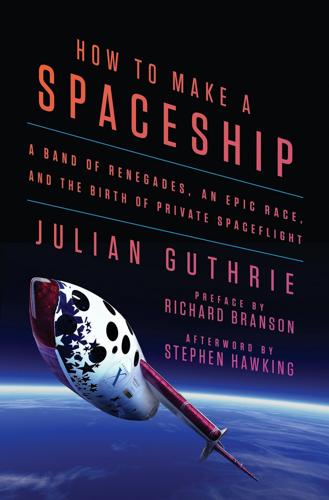
How to Make a Spaceship: A Band of Renegades, an Epic Race, and the Birth of Private Spaceflight
by
Julian Guthrie
Published 19 Sep 2016
As the shaky turboprop made its descent into Montrose, Peter tried to ignore the turbulence and focus on the meeting ahead. His goal going into the weekend was nothing less than to come up with a new rocket design that would take paying passengers to space. But he had another idea, too, one he had been studying in stealth mode. On day one of the meeting, after a big breakfast made by Myra, after travel war stories were exchanged, the group gathered in the conference room. Peter, wearing black pants and a thick black turtleneck, wrote on the whiteboard: “SMALL TEAMS CAN DO BIG THINGS.” It was something he needed to believe in now more than ever.
…
After the sale, he pursued soaring (also known as gliding) as a sport, buying a Stemme sailplane and becoming the North American dealer for the plane. His love of soaring led to his interest in high-altitude projects. Peter and Marc’s Angel Technologies plan had competition. Cable operators, software companies, and start-ups were looking at a range of broadband delivery methods, from launching hundreds of satellites to using low-voltage electricity grids. A company called Sky Station International, a project of former secretary of state Alexander Haig, envisioned beaming Internet service to cities using football field–size balloons hovering in the sky.
…
Engineer Dan DeLong worked full time for Boeing and had been a subcontractor for NASA, doing the air and water recycling systems for the space station. DeLong was still in high school when he built his first submarine, electric bicycle, and a tape recorder out of a first-generation computer. Since then, he had a habit of walking away from perfectly good high-paying jobs to join experimental space start-ups. His problem with NASA was that it spent $17 billion a year and “didn’t do much.” He was working on a NASA contract in January 1986 when the Challenger broke up. Within an hour, he knew what the problem was, because he had designed thousands of O-rings and seals. He learned that on the night before the launch, as well as early the next morning, engineers had urged NASA not to launch in temperatures below 53 degrees, and were overruled.

Ageless: The New Science of Getting Older Without Getting Old
by
Andrew Steele
Published 24 Dec 2020
CMV is a herpesvirus, the family of viruses behind genital herpes, cold sores, chickenpox and glandular fever. What all these diverse diseases have in common is their incredible skills when it comes to evading the immune system. While the initial infection may be obvious (like the itchy rash typical of chickenpox), the viruses go into stealth mode after symptoms subside. Your immune system never quite eradicates them all, and the stragglers can hide out in your body for the rest of your life. At times of immune weakness, perhaps a stressful life event or a severe bout of another disease, they can re-emerge. Probably the most famous herpes reincarnate is shingles – a painful, localised rash caused when chickenpox comes out of hiding.
…
Similar work on A2E, the lipofuscin associated with age-related sight loss, has identified enzymes which can break it down, too. The furthest advanced in development is called manganese peroxidase, usually found in fungi which live on dead wood, which use the enzyme to break down lignins – tough materials which give strength to wood and bark. A 2018 paper by a startup called Ichor Therapeutics got as far as injecting a modified version of it into the eyes of mice, and demonstrated that it rapidly cleared out both A2E, and a number of other by-products of visual chemistry which accumulate in lysosomes of RPE cells. They are hoping to turn this preliminary work into a treatment called Lysoclear.
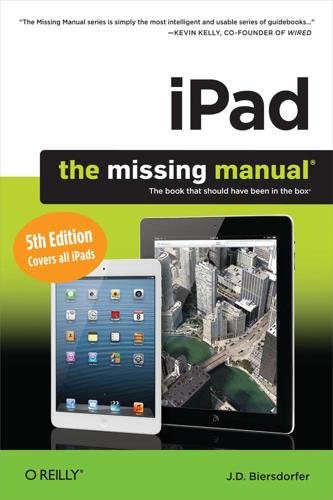
iPad: The Missing Manual, Fifth Edition
by
J.D. Biersdorfer
Published 21 Nov 2012
The link won’t be in the History folder forever (time does march on), so you may want to bookmark the site for real before it slips away. Safari purges History links after a month. Erase the History List Don’t want to leave a record of your browsing history in case someone picks up your iPad and snoops around? You have three options. One is to cruise the web in stealth mode—go to Settings→Safari and turn Private Browsing to On. Another is to set up a Passcode Lock on your iPad (see General). Then, anyone who wants to get into your slab needs a four-digit code to unlock the screen. And finally, you can erase the History list. To do that, open the History folder and tap Clear History in the top-right corner (circled above).
…
Simultaneously press and hold down the Sleep/Wake button on top and the Home button on the front. Let go when you see the Apple logo. You can hold it up or lay it flat on the table to reset it, as long as you hit the buttons properly. If the technology gods are smiling on you, your iPad will go through its little start-up sequence, and then return you to the Home screen. Download iTunes and iTunes Updates, and Reinstall iTunes IF ITUNES IS ACTING up, you may need to download and install a fresh version of the program. The latest version is always waiting for you at www.apple.com/itunes/download. Your iTunes program itself may alert you to a new version—or you can make sure it does so in the future: If you use iTunes for Windows and installed the Apple Software Update utility when you added iTunes, you’ll see an alert box telling you that Apple has updated iTunes and offering to install the new version.

Data and Goliath: The Hidden Battles to Collect Your Data and Control Your World
by
Bruce Schneier
Published 2 Mar 2015
HelloSpy is an app: There are quite a few of these tracking apps out there. HelloSpy is particularly blatant. Although the disclaimer on the home page states that it is designed for “ethical spying for parents,” or use on a “mobile device that you own or have proper consent to monitor,” the literature also trumpets its ability to operate in “stealth mode,” and has a page dedicated to marital infidelity. See http://hellospy.com. spy on his wife or girlfriend: StealthGenie is another spyware app. In 2014, its CEO was indicted and arrested for selling it in the US. Craig Timberg and Matt Zapatosly (29 Sep 2014), “Maker of StealthGenie, an app used for spying, is indicted in Virginia,” Washington Post, http://www.washingtonpost.com/business/technology/make-of-app-used-for-spying-indicted-in-virginia/2014/09/29/816b45b8-4805-11e4-a046-120a8a855cca_story.html.
…
(Jun 2007), “The effect of online privacy information on purchasing behavior: An experimental study,” 6th Workshop on the Economics of Information Security (WEIS), Pittsburgh, Pennsylvania, http://weis2007.econinfosec.org/papers/57.pdf. there are exceptions: Cadie Thompson (7 Mar 2014), “Want privacy online? Start-ups bet users are ready to pay,” NBC News, http://www.nbcnews.com/tech/security/want-privacy-online-start-ups-bet-users-are-ready-pay-n47186. not tracking its users: DuckDuckGo, http://www.duckduckgo.com. Ello is a social network: Sharon Profis (26 Sep 2014), “10 things to know about Ello, the ad-free social network,” CNET, http://www.cnet.com/how-to/what-is-ello-the-ad-free-social-network. 10: Privacy The most common misconception: This article from 1979, for example, looks at privacy as a way to conceal facts about oneself in order to inflate one’s reputation.
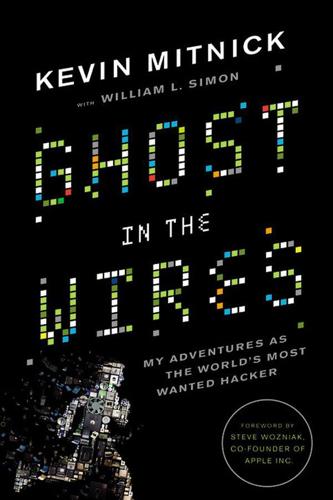
Ghost in the Wires: My Adventures as the World's Most Wanted Hacker
by
Kevin Mitnick
Published 14 Aug 2011
But like most phone companies, Pacific Bell used central office switches developed by Bell Labs and manufactured by AT&T, and it was common knowledge in the phreaker community that these switches already had the caller ID feature built into their software. In the building where my friend Dave Harrison had his offices, a terminal on the first floor had hundreds of phone lines running to it. I went down to the terminal in stealth mode because there was a security guard stationed very nearby, though thankfully not in direct sight. Using a lineman’s handset that Dave had sitting around in his office, I connected to several cable pairs, looking for one that had a dial tone. When I found one, I dialed the special code to obtain the phone number.
…
For this test, I programmed the ESN and changed the phone number to match the ones for Lewis’s phone. The phone turned itself off and rebooted. I could feel my every heartbeat at the front of my scalp. All three of our heads were bent over the table, focused on the phone’s little screen. The display lit with the start-up screen. I punched in the function to display the phone’s ESN. The numbers that appeared were the ones for the ESN I had entered. The three of us sent up a cheer, not caring that other customers were turning to stare. It worked! It really worked! Back then, some phone companies had a number you could call to get the accurate time.

Coastal California Travel Guide
by
Lonely Planet
USS PampanitoHISTORIC SITE ( MAP GOOGLE MAP ; %415-775-1943, tickets 855-384-6410; www.maritime.org/pamphome.htm; Pier 45; adult/child/family $20/10/45; h9am-8pm Thu-Tue, to 6pm Wed; c; g19, 30, 47, jPowell-Hyde, mE, F) Explore a restored WWII submarine that survived six tours of duty while you listen to submariners' tales of stealth mode and sudden attacks in a riveting audio tour that makes surfacing afterwards a relief (caution, claustrophobes). DON'T MISS... ASaloons The Barbary Coast is roaring back to life with historically researched whiskey cocktails and staggering gin concoctions in San Francisco’s great Western-saloon revival.
…
The first TV station began broadcasting in Los Angeles in 1931, beaming iconic images of California into living rooms across America and around the world with Dragnet (1950s), The Beverly Hillbillies (1960s), The Brady Bunch and Charlie's Angels (1970s), LA Law (1980s), and Baywatch, Buffy the Vampire Slayer and The Fresh Prince of Bel-Air (1990s). Beverly Hills 90210 (1990s) made that LA zip code into a status symbol, while The OC (2000s) glamorized Orange County and Silicon Valley (2014–now) satirizes NorCal start-ups. Reality-TV fans will recognize Southern California locations from Top Chef, Real Housewives of Orange County and Keeping Up with the Kardashians. A suburban San Francisco start-up changed the TV game in 2005, launching a streaming video on a platform called YouTube. With on-demand streaming services competing with cable channels to launch original series, we are entering a new golden age of California television.
…
oAxiomBOUTIQUE HOTEL$$ ( MAP GOOGLE MAP ; %415-392-9466; www.axiomhotel.com; 28 Cyril Magnin St; d $189-342; iW#; jPowell-Mason, Powell-Hyde, ZPowell, mPowell) Of all the downtown SF hotels aiming for high-tech appeal, this one gets it right. The lobby is razzle-dazzle LED, marble and riveted steel, but the game room looks like a start-up HQ, with arcade games and foosball tables. Guest rooms have low-slung, gray-flannel couches, king platform beds, dedicated routers for high-speed wireless streaming to Apple/Google/Samsung devices, and Bluetooth-enabled everything. Hotel CarltonDESIGN HOTEL$$ ( MAP GOOGLE MAP ; %800-922-7586, 415-673-0242; www.hotelcarltonsf.com; 1075 Sutter St; r $269-309; iW#; g2, 3, 19, 38, 47, 49)S World travelers feel right at home at the Carlton amid Moroccan tea tables, Indian bedspreads, West African wax-print throw pillows and carbon-offsetting, LEED-certified initiatives (note the rooftop solar panels).

Western USA
by
Lonely Planet
Pier 39 LANDMARK (www.pier39.com) With the notable exception of sea lions gleefully belching after fish dinners at Pier 39, most of Fisherman’s Wharf is packed with landlubbers attempting to digest sourdough-bread bowls of gloppy clam chowder (don’t bother: can’t be done). USS Pampanito MUSEUM ( 415-775-1943; www.maritime.org; Pier 45; adult/child $10/4; 9am-5pm) Explore a restored WWII submarine that survived six tours of duty, while listening to sub-mariners’ tales of stealth mode and sudden attacks in a riveting audio tour ($2) that makes surfacing afterwards a relief (caution claustrophobes). Hyde Street Pier Historic Ships HISTORIC SITE ( 415-447-5000; www.nps.gov/safr; 499 Jefferson St, at Hyde St; adult/child $5/free; 9am-5pm) Tour 19th-century ships moored here as part of the Maritime National Historical Park, including triple-masted 1886 Balclutha and 1890 steamboat Eureka; summer sailing trips are available aboard elegant 1891 schooner Alma (adult/child $40/20; Jun-Nov).
…
Top of section Pacific Northwest Includes » Washington Seattle Olympic Peninsula San Juan Islands North Cascades South Cascades Oregon Portland Willamette Valley Columbia River Gorge Oregon Cascades Oregon Coast Why Go? As much a state of mind as a geographical region, the US’s northwest corner is a land of subcultures and new trends, where evergreen trees frame snow-dusted volcanoes, and inspired ideas scribbled on the back of napkins become tomorrow’s business start-ups. You can’t peel off the history in layers here, but you can gaze wistfully into the future in fast-moving, innovative cities such as Seattle and Portland, sprinkled with food carts, streetcars, microbrews, green belts, coffee connoisseurs and weird urban sculpture. Ever since the days of the Oregon Trail, the Northwest has had a hypnotic lure for risk-takers and dreamers, and the metaphoric carrot still dangles.
…
Largely a product of the last decade, these semipermanent kitchens-on-wheels inhabit parking lots around town and are usually clustered together in rough groups or ‘pods,’ often with their own communal tables, ATMs and portaloos. As many of the owners are recent immigrants (who can’t afford a hefty restaurant start-up), the carts are akin to an international potluck with colorful kitchen hatches offering soul food from everywhere from Bosnia and Czechoslovakia to Vietnam and Mexico. While prices are low ($5 to $6 for a filling and tasty lunch), standards of hygiene – thanks to tight city regulations – are kept high and the banter between customer and proprietor is a kind of geography lesson meets recipe exchange.

Northern California Travel Guide
by
Lonely Planet
USS PampanitoHISTORIC SITE ( MAP GOOGLE MAP ; %415-775-1943, tickets 855-384-6410; www.maritime.org/pamphome.htm; Pier 45; adult/child/family $20/10/45; h9am-8pm Thu-Tue, to 6pm Wed; c; g19, 30, 47, jPowell-Hyde, mE, F) Explore a restored WWII submarine that survived six tours of duty while you listen to submariners' tales of stealth mode and sudden attacks in a riveting audio tour that makes surfacing afterwards a relief (caution, claustrophobes). DON'T MISS GOLDEN GATE BRIDGE Hard to believe the Navy almost nixed SF’s signature art-deco landmark ( MAP GOOGLE MAP ; %toll information 877-229-8655; www.goldengatebridge.org/visitors; Hwy 101; northbound free, southbound $6.50-7.50; g28, all Golden Gate Transit buses) by architects Gertrude and Irving Murrow and engineer Joseph B Strauss.
…
oAxiomBOUTIQUE HOTEL$$ ( MAP GOOGLE MAP ; %415-392-9466; www.axiomhotel.com; 28 Cyril Magnin St; d $189-342; iW#; jPowell-Mason, Powell-Hyde, ZPowell, mPowell) Of all the downtown SF hotels aiming for high-tech appeal, this one gets it right. The lobby is razzle-dazzle LED, marble and riveted steel, but the game room looks like a start-up HQ, with arcade games and foosball tables. Guest rooms have low-slung, gray-flannel couches, king platform beds, dedicated routers for high-speed wireless streaming to Apple/Google/Samsung devices, and Bluetooth-enabled everything. Hotel CarltonDESIGN HOTEL$$ ( MAP GOOGLE MAP ; %800-922-7586, 415-673-0242; www.hotelcarltonsf.com; 1075 Sutter St; r $269-309; iW#; g2, 3, 19, 38, 47, 49)S World travelers feel right at home at the Carlton amid Moroccan tea tables, Indian bedspreads, West African wax-print throw pillows and carbon-offsetting, LEED-certified initiatives (note the rooftop solar panels).
…
Hoping to bring computer power to the people, Steve Jobs and Steve Wozniak, both in their 20s at the time, introduced the Apple II at the 1977 West Coast Computer Faire, with unfathomable memory (4KB of RAM) and microprocessor speed (1MHz). Still, the question remained: what would ordinary people do with all that computing power? By the mid-1990s an entire dot-com industry boomed in Silicon Valley with online start-ups, and suddenly people were getting everything – their mail, news, politics, pet food and, yes, sex – online. But when dot-com profits weren’t forthcoming, venture-capital funding dried up and fortunes in stock-options disappeared when the dot-com bubble burst and the Nasdaq plummeted on March 10, 2000.

Coastal California
by
Lonely Planet
Musée Mecanique MUSEUM ( 415-346-2000; www.museemecanique.org; Pier 45, Shed A; 10am-7pm Mon-Fri, to 8pm Sat & Sun; ) A few quarters let you start bar brawls in coin-operated Wild West saloons, peep at belly-dancers through a vintage Mutoscope, save the world from Space Invaders and get your fortune told by an eerily lifelike wooden swami at this vintage arcade. USS Pampanito HISTORIC SITE ( 415-775-1943; www.maritime.org; Pier 45; adult/child $10/4; 9am-5pm) Explore a restored WWII submarine that survived six tours of duty, while listening to submariners’ tales of stealth mode and sudden attacks in a riveting audio tour ($2) that makes surfacing afterwards a relief (caution claustrophobes). Pier 39 LANDMARK ( 415-981-1280; www.pier39.com; Beach St & Embarcadero; ) Ever since they first hauled out here in 1990, 300 to 1300 sea lions have spent winter through summer bellyflopped on these yacht docks.
…
In 1971 Intel invented the microchip, and in 1976 Apple invented the first personal computer, paving the way for the global internet revolution of the 1990s. By the late 1990s, an entire dot-com industry had boomed in Silicon Valley, and companies nationwide jumped on the dot-com bandwagon following the exponential growth of the web. Many reaped huge overnight profits from start-ups, fueled by misplaced optimism, only to crash with equal velocity at the turn of the millennium. No place in America was more affected by the demise of the dot-coms in 2000 than California. That same year also brought widespread power shortages and rolling blackouts to California, which were caused by Enron’s illegal manipulation of markets.

USA Travel Guide
by
Lonely, Planet
Pier 39 LANDMARK Offline map Google map ( www.pier39.com) With the notable exception of sea lions gleefully belching after fish dinners at Pier 39, most of Fisherman’s Wharf is packed with landlubbers attempting to digest sourdough-bread bowls of gloppy clam chowder (don’t bother: can’t be done). USS Pampanito MUSEUM Offline map Google map ( 415-775-1943; www.maritime.org; Pier 45; adult/child $10/4; 9am-5pm) Explore a restored WWII submarine that survived six tours of duty, while listening to sub-mariners’ tales of stealth mode and sudden attacks in a riveting audio tour ($2) that makes surfacing afterwards a relief (caution claustrophobes). Hyde Street Pier Historic Ships HISTORIC SITE Offline map Google map ( 415-447-5000; www.nps.gov/safr; 499 Jefferson St, at Hyde St; adult/child $5/free; 9am-5pm) Tour 19th-century ships moored here as part of the Maritime National Historical Park, including triple-masted 1886 Balclutha and 1890 steamboat Eureka ; summer sailing trips are available aboard elegant 1891 schooner Alma (adult/child $40/20; Jun-Nov) .
…
Top of section Pacific Northwest Includes » Washington Seattle Olympic Peninsula San Juan Islands North Cascades South Cascades Oregon Portland Willamette Valley Columbia River Gorge Oregon Cascades Oregon Coast Why Go? As much a state of mind as a geographical region, the US’s northwest corner is a land of subcultures and new trends, where evergreen trees frame snow-dusted volcanoes, and inspired ideas scribbled on the back of napkins become tomorrow’s business start-ups. You can’t peel off the history in layers here, but you can gaze wistfully into the future in fast-moving, innovative cities such as Seattle and Portland, sprinkled with food carts, streetcars, microbrews, green belts, coffee connoisseurs and weird urban sculpture. Ever since the days of the Oregon Trail, the Northwest has had a hypnotic lure for risk-takers and dreamers, and the metaphoric carrot still dangles.
…
Largely a product of the last decade, these semipermanent kitchens-on-wheels inhabit parking lots around town and are usually clustered together in rough groups or ‘pods,’ often with their own communal tables, ATMs and portaloos. As many of the owners are recent immigrants (who can’t afford a hefty restaurant start-up), the carts are akin to an international potluck with colorful kitchen hatches offering soul food from everywhere from Bosnia and Czechoslovakia to Vietnam and Mexico. While prices are low ($5 to $6 for a filling and tasty lunch), standards of hygiene – thanks to tight city regulations – are kept high and the banter between customer and proprietor is a kind of geography lesson meets recipe exchange.